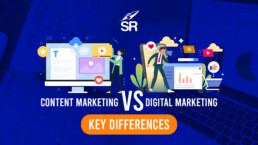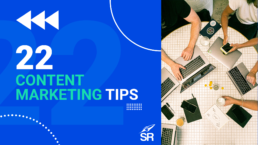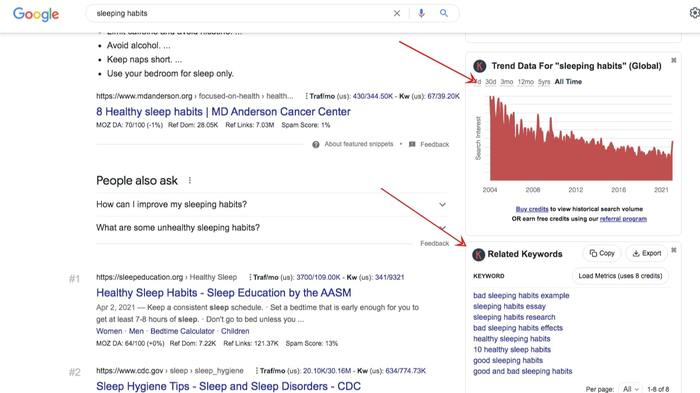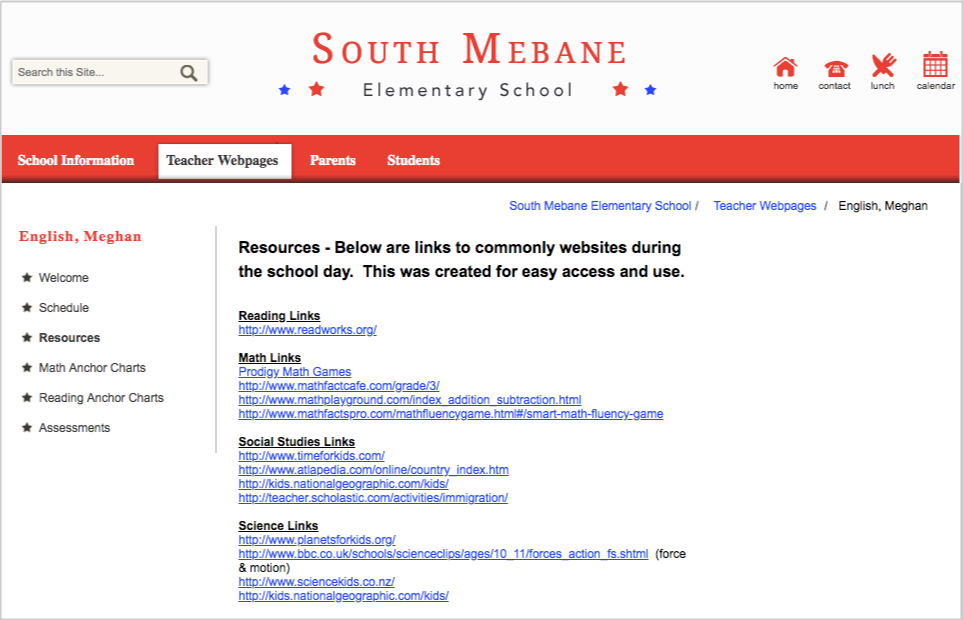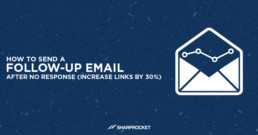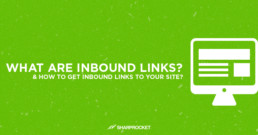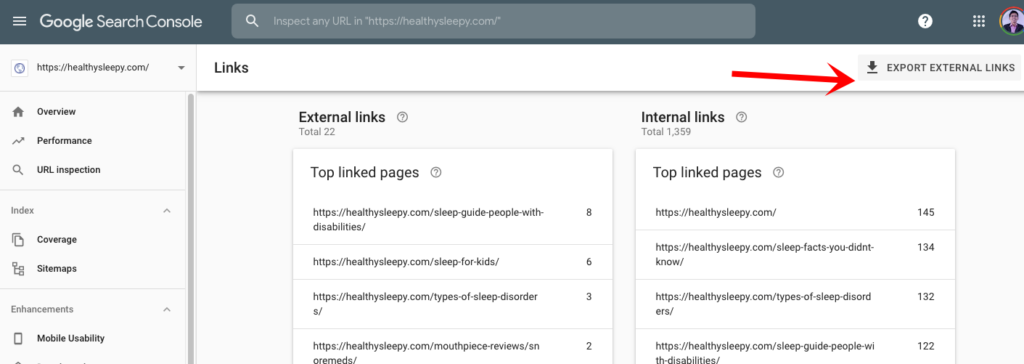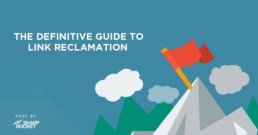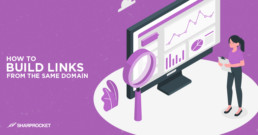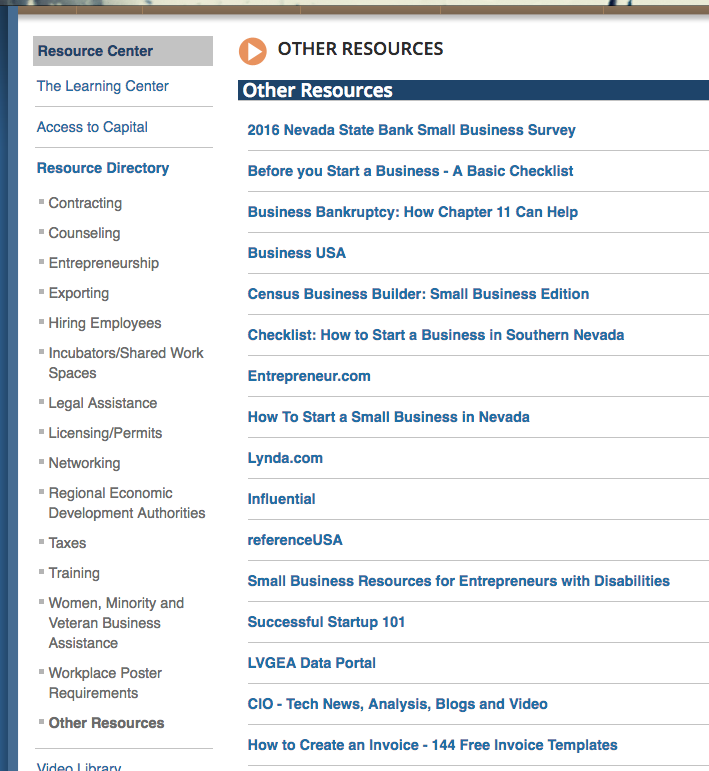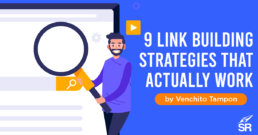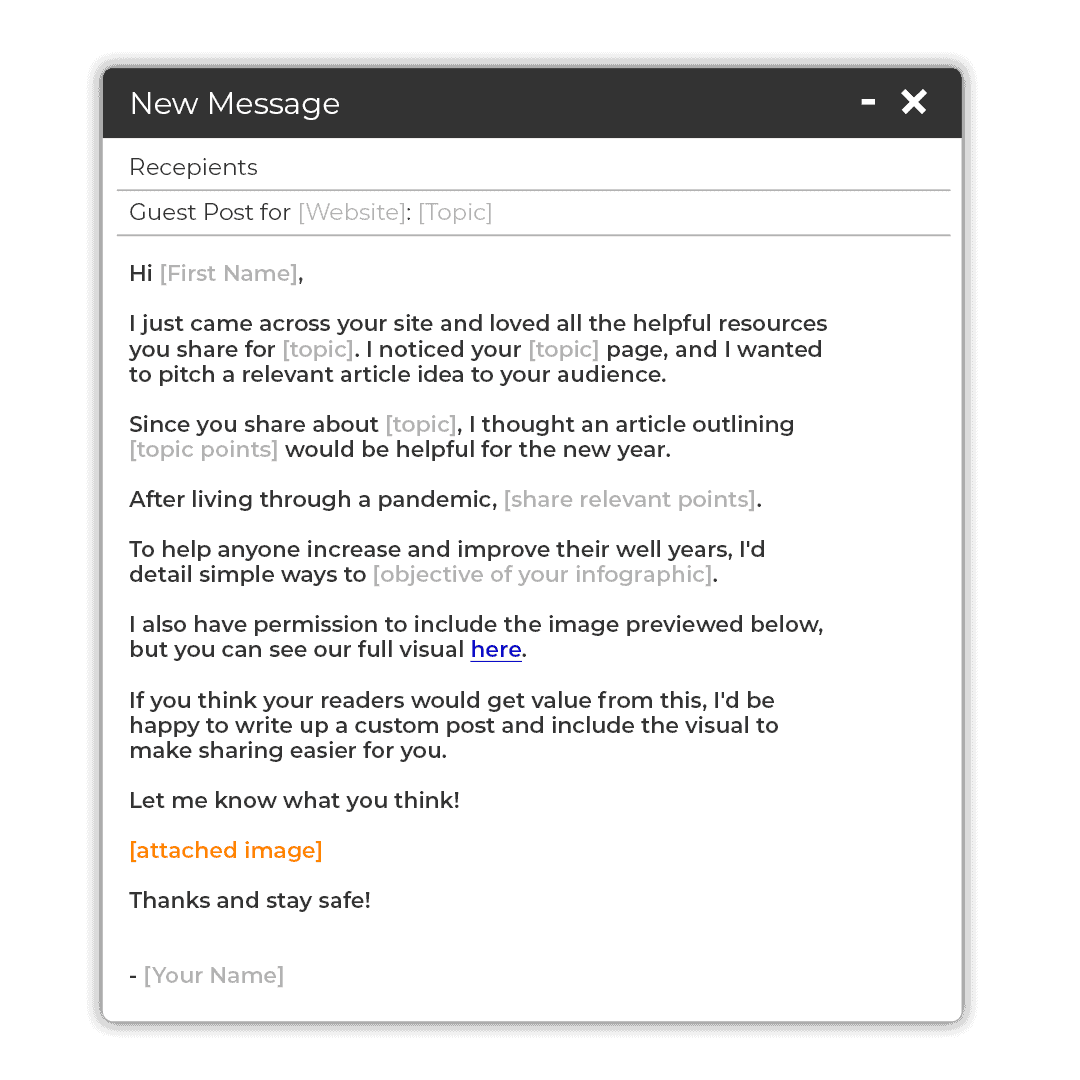Content Marketing VS Digital Marketing: Key Differences
As someone who has been in the digital marketing industry for a while, you may have come across the terms ‘content marketing’ and ‘digital marketing’ being used interchangeably.
However, these two concepts are not one and the same. They are quite different from each other, with content marketing forming a part of digital marketing.
In this article, we will discuss the key differences between content marketing and digital marketing so that you can better understand the two concepts.
Let's dig in...
What’s the difference between content marketing and digital marketing?
Definition of Content Marketing
According to Content Marketing Institute, Content marketing is a strategic marketing approach that is focused on creating and distributing valuable, relevant, and consistent content to attract and retain a clearly defined audience — with the ultimate goal of driving profitable customer action.
In other words, content marketing is about creating informative, entertaining, or inspiring pieces of content (e.g., blog posts, infographics, videos, etc.) that help your target audience somehow.
Content marketing aims to build a relationship with your audience so they can eventually become your customers or clients.
Content marketing is important in the customer journey as it helps educate your audience about your product or service, build trust, and establish authority. That's why your content must align with your buyer journey stages.
How Content Marketing is Used in Different Buyer Stages:
Awareness Stage: Top-of-the-funnel content that makes your target audience aware of their problem or need.
Content marketing is used in the awareness stage to attract attention and educate people about the existence of a problem or a need that they may have.
The goal here is to get your target audience to realize that they have a problem or need that your product or service can help them with.
For example, if you’re selling acne treatment products, your content marketing strategy in the awareness stage should be focused on creating blog posts, infographics, or videos about acne and its causes.
The aim is to get people searching for information about acne to find your content so that you can introduce them to your product.
Consideration Stage: Middle-of-the-funnel content that helps your target audience compare different solutions and make a decision.
Content marketing is used in the consideration stage to help people aware of their problem or need to compare different solutions and decide.
The goal is to get your target audience to shortlist your product or service as a solution to their problem or need.
For example, if you’re selling acne treatment products, your content marketing strategy in the consideration stage should be focused on creating blog posts, infographics, or videos that compare your product with other acne treatments in the market.
The aim is to get people considering different acne treatments to find your content so that you can convince them to try your product.
Decision Stage: Bottom-of-the-funnel content that helps your target audience make a purchasing decision.
Content marketing is used in the decision stage to help people who are considering your product or service make a purchasing decision.
The goal is to get your target audience to buy your product or service.
For example, if you’re selling acne treatment products, your content marketing strategy in the decision stage should be focused on creating blog posts, infographics, or videos that highlight the features and benefits of your product.
The aim is to get people considering your product to find your content so that you can convince them to buy it.
To make an impact, your content marketing strategy should focus on creating informative, entertaining, or inspiring pieces of content that help your target audience somehow.
5 Advantages of Content Marketing
According to Hubspot, in 2022, a whopping 90% of marketers plan to continue spending the same amount in the channel as they are now. That being said, it's evident that many businesses see the advantages of content marketing and how it can help them reach their goals.
Let's take a look at some of the benefits of content marketing:
1. Helps you build trust and establish authority.
One of the main advantages of content marketing is that it helps you build trust and establish authority with your target audience.
When you create informative and helpful pieces of content, people will start seeing you as an industry expert. As a result, they will be more likely to trust and do business with you.
2. Helps you generate leads.
Another advantage of content marketing is that it can help you generate leads.
When you create quality content, people will be more likely to visit your website and give you their contact information.
3. Helps you build relationships.
In addition to generating leads, content marketing can also help you build relationships with your target audience.
People will see you as a valuable resource when you create helpful and informative content. As a result, they will be more likely to keep returning to your website and doing business with you.
4. Helps you save money.
Content marketing can also help you save money.
Compared to other marketing channels, content marketing is relatively inexpensive. You can even do it yourself if you have the time and resources.
5. Helps you reach your target audience.
Finally, content marketing can help you reach your target audience.
When you create quality content, it will be shared by people interested in it. As a result, you can reach more people than you would with other marketing channels.
Definition of Digital Marketing
Digital marketing is an umbrella term that covers all marketing efforts that use an electronic device or the internet.
“Businesses leverage digital channels such as search engines, social media, email, and their websites to connect with current and prospective customers.” - Hubspot
With how accessible the internet is today, would you believe me if I told you the number of people who go online every day is still increasing?
Digital marketing includes a wide range of marketing activities, such as:
- Search engine optimization (SEO)
- Search engine marketing (SEM)
- Content marketing
- Social media marketing (Facebook, Twitter, LinkedIn, etc.)
- Email marketing
- Mobile marketing
- And more!
Digital marketing is important because it helps businesses reach their target audiences where they are most likely to be found -- online.
5 Advantages of Digital Marketing
According to Wordstream, the worldwide digital advertising and marketing market was expected to be $350 billion in 2020, while it will rise to $786.2 billion by 2026.
Seeing just how vast the digital marketing industry is, it's no surprise that digital marketing has many advantages. Here are some of the most notable ones:
1. Digital marketing is more cost effective than traditional marketing.
As I noted earlier, one of the biggest advantages of digital marketing is that it's more cost effective than traditional marketing.
With traditional marketing, businesses have to spend money on things like print ads, radio ads, TV ads, and events.
With digital marketing, businesses can reach their target audiences at a much lower cost. Many digital marketing activities are free or only cost a small amount.
2. Digital marketing is more targeted than traditional marketing.
Another advantage of digital marketing is that it's more targeted than traditional marketing.
With traditional marketing, businesses typically advertise to a large audience in the hope that they will reach their target market.
With digital marketing, businesses can use data to show ads to people more likely to be interested in them. This allows businesses to save money and reach their target audiences more effectively.
3. Digital marketing is more engaging than traditional marketing.
Digital marketing is also more engaging than traditional marketing.
With traditional marketing, businesses typically rely on ads to reach their target audiences.
With digital marketing, businesses can use content to reach their target audiences. Content is more likely to engage people than ads, so it's a more effective way to reach your target market.
4. Digital marketing is more measurable than traditional marketing.
Another advantage of digital marketing is that it's more measurable than traditional marketing.
With traditional marketing, businesses typically rely on gut feeling to make decisions.
With digital marketing, businesses can track data and use it to make informed decisions. This allows businesses to save money and make better decisions about their marketing efforts.
5. Digital marketing is more flexible than traditional marketing.
Finally, digital marketing is more flexible than traditional marketing.
With traditional marketing, businesses typically commit to a certain amount of time or money before seeing results.
With digital marketing, businesses can start small and scale up as they see results. This allows businesses to save money and be more flexible in marketing efforts.
Digital marketing is a powerful tool to help businesses reach their target audiences. Now is the best time to start if you're not using digital marketing.
In a nutshell, both content marketing and digital marketing are two effective methods that complement each other to help businesses achieve their marketing goals. Start using them today and see how they can help your business grow!
21 Actionable Content Marketing Tips For 2025
This is a list of the most actionable content marketing tips for 2025.
In this post, you'll discover:
- how to find content ideas without using expensive tools
- how to write content that gets hundreds of shares and comments
- tips to optimize content to rank in search and get organic traffic
- effective content promotion techniques for more traffic and links
Let's dive in.
1. Start with Topical Research.
Keyword research is not dead.
The good thing about SEO is you can rank for multiple keywords, not just for one keyword — only if you know how to practice topical research.
Topical research is discovering the primary key topics your content can rank for, while determining semantically-related keywords to optimize content for topic coverage.
How to start with topical research?
A. Begin with an industry head term.
You can use keyword discovery tools such as Ahrefs' Keyword Explorer.
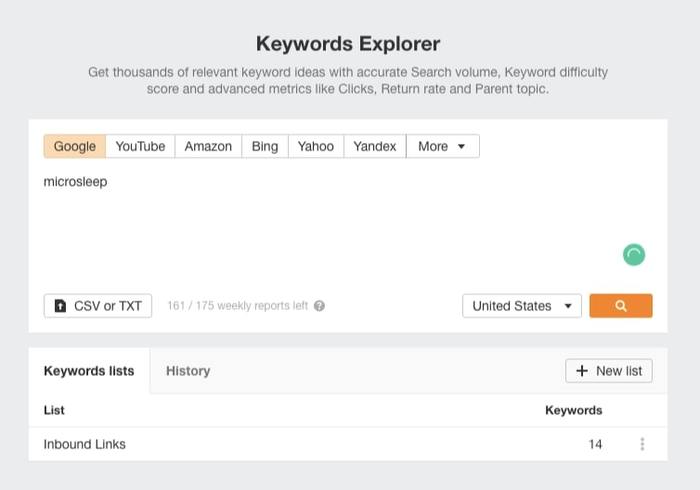
B. Go to the parent topic.
With Ahrefs, you can see exactly what the keyword's parent topic is.
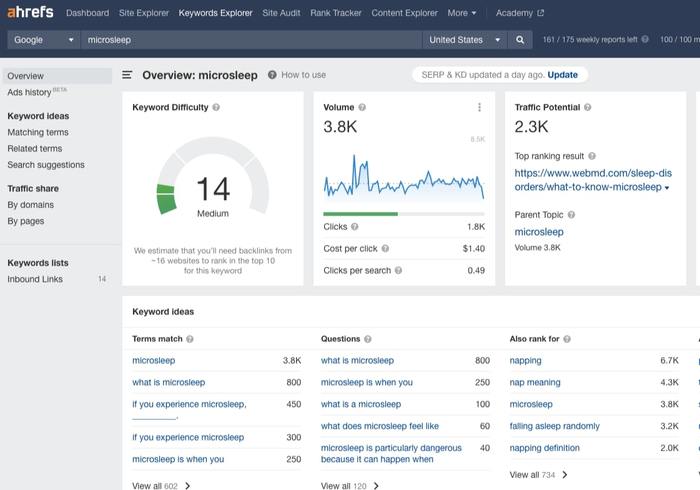
Either write content just for the keyword you typed in or cover the parent topic.
C. Find semantically-related keywords and common questions.
This is useful for topic coverage. It builds more authority when you can cover as much information by answering related questions and including topically-related keywords.
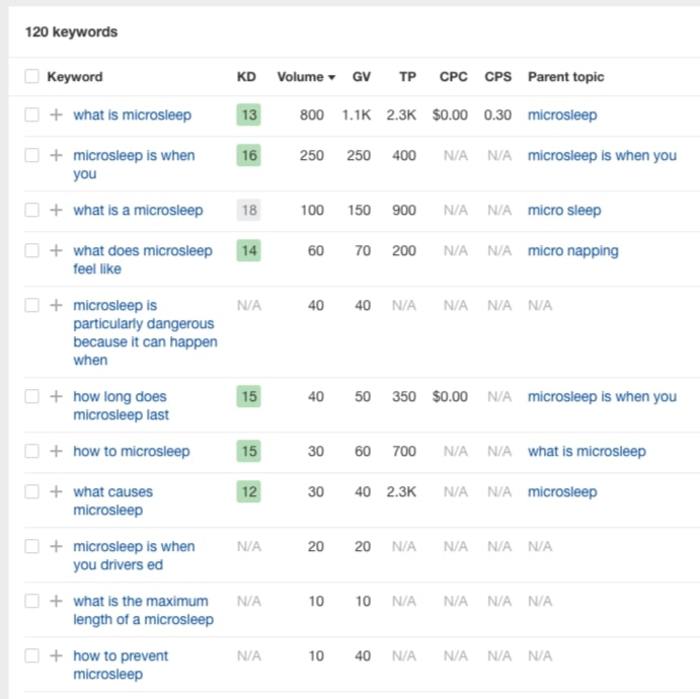
This leads us to our next tip.
You can check out our link building services and SEO services.
2. Discover Commonly Asked Questions
Search users want quick answers to questions.
And if you know what type of questions they search for and provide them with quick answers in your content, you'll get more ranking opportunities.
AlsoAsked is an excellent tool to find dozens of questions you usually see in the "People Also Asked Questions" section.
The good thing with this is you don't have to manually find all related questions for the topic you're writing about. Type in a keyphrase and the tool will provide you with topical questions.
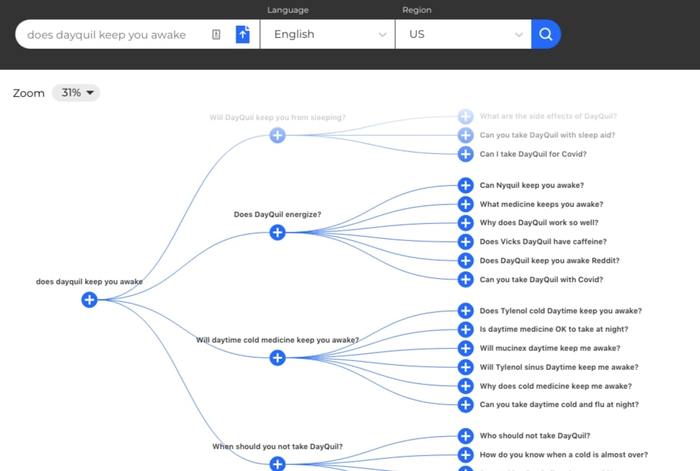
You can also export the list for later use.
Another way to find commonly asked questions is through Ahrefs' Keyword Explorer.
Search for your topic.
Go to the Questions section.
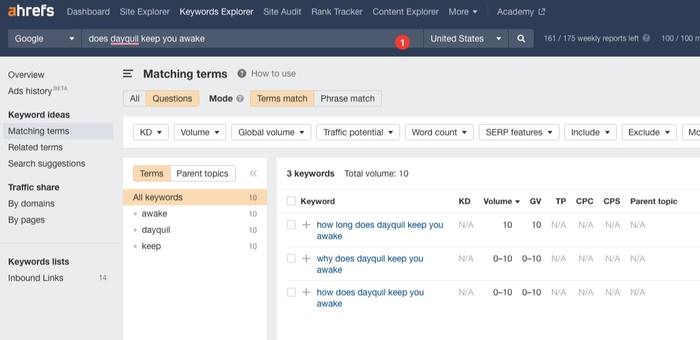
You can also use the latest feature of Detailed Chrome Extension to extract People quickly Also Asked Questions (PAA) from Google searches.
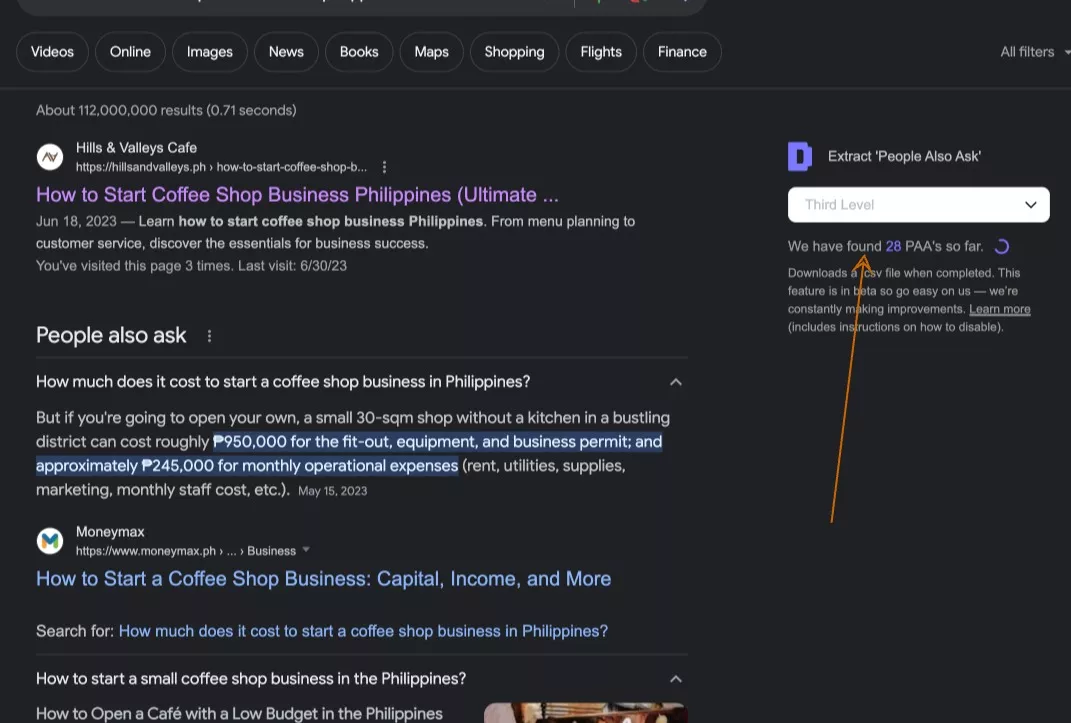
Two things you can do with these questions:
First, add a FAQ (Frequently Asked Questions) at the end of your article. List down all questions with your answers.
Second, you can include these questions as H2s of your article.
Your readers don't have to check other similar content to find what they're looking for by answering it immediately.
3. Write Content on Topics with Search Traffic Potential.
SEO and content marketing, when combined, is powerful.
You provide what your readers are looking for while ranking the content for searchers who are looking for it.
More traffic. More sales.
Use any tools to help you find search traffic potential.
Here are some of my recommended topic or keyword discovery tools:
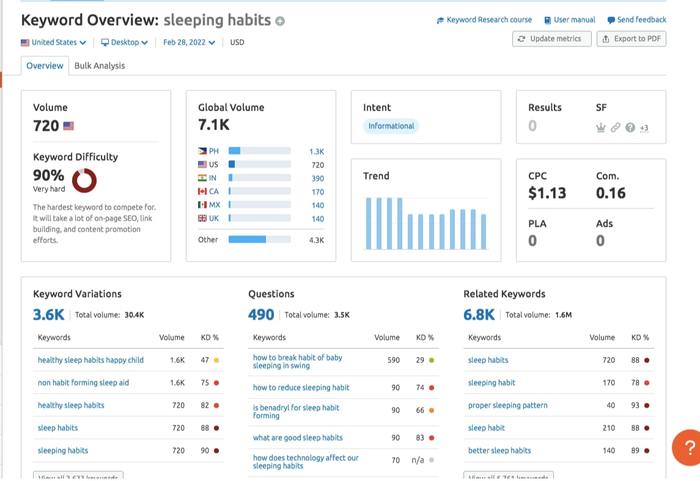
Ahrefs:
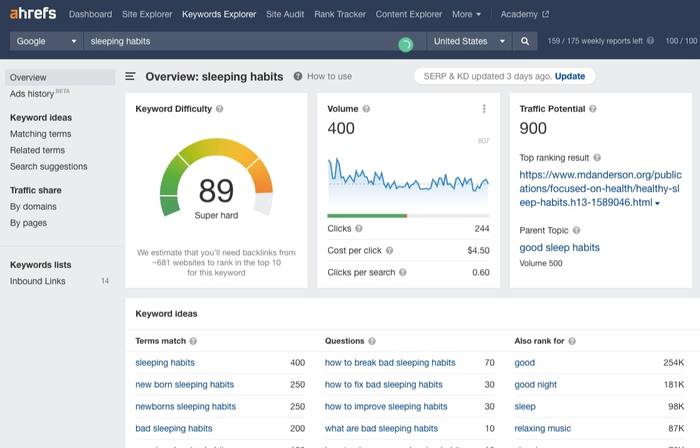
Sidenote: Not all keywords with low search traffic are not feasible topics to write about — most of which are potential topics people are still asking. In aggregate, when you publish articles targeting long-tail keywords (even with lower search volume), the strategy can drive solid traffic to your site.
4. Brainstorm Topics with the Audience's Pain Points.
Your audience's challenges, issues, and pain points are good content ideas (hat tip to @abbyreimermpls).
It also puts emotions in your content, making it more shareable and linkable.
So, how to find your audience's pain points?
Search for "[your audience]," "issues," and "challenges". And see what comes up.

For example, if you're looking for paint points of most salespeople, you'll get ideas like:
- Consistent follow-ups
- Self-management
- Personality styles
Tackle each of these pain points as your blog post idea.
5. Rank for Competitors' Keywords.
Here's a gold mine opportunity.
Your competitors may be ranking (or aren't ranking yet) for their branded keyphrases.
This could give you some organic traffic that can turn into sales if taken advantage of.
Let's say you want to rank for branded keywords of Monday (a project management software).
Simply enter the domain (monday.com) to Ahrefs Site Explorer and see what they're currently ranking for their own terms.
Filter the results by position 3 & up to see keywords your competitors don't rank in the top 3.
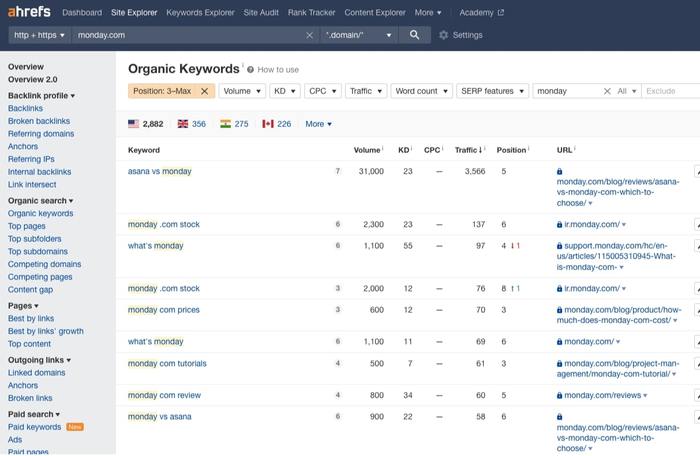
Check each term and consider any pages or content you can create on your website.
One example is "how to use monday com".
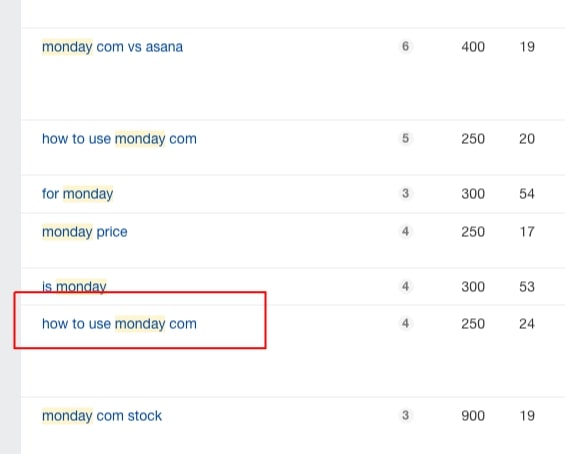
You can create an ultimate guide on how to use Monday and mention its competing products.
Or for any "alternatives" or "product A VS other products" keyphrases, you create a comparison page and add your product.
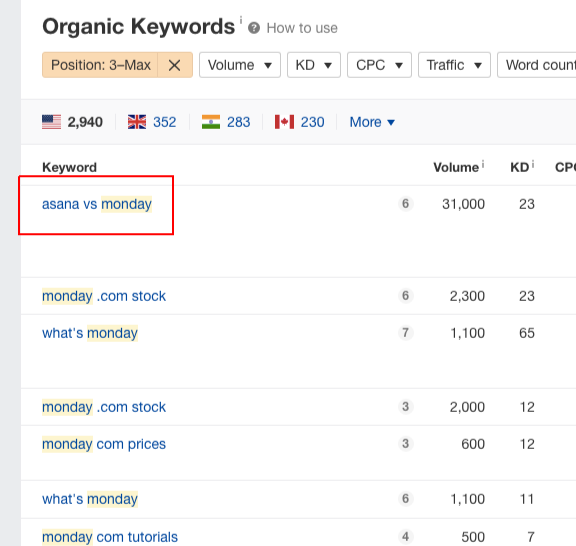
Think of leveraging competitors' keywords with new micro-content or a new page.
6. Speak About Your Audience's Interests
Never run out of ideas if you think of your customer's interests.
If you tackle what they need, your content becomes relatable and valuable.
How can you find your audience's other interests?
You can use audience research tools like Sparktoro.
Let's say you're looking for more content ideas for life coaches.
Simply do Sparktoro search: My audience uses these word(s) in their profile "______".
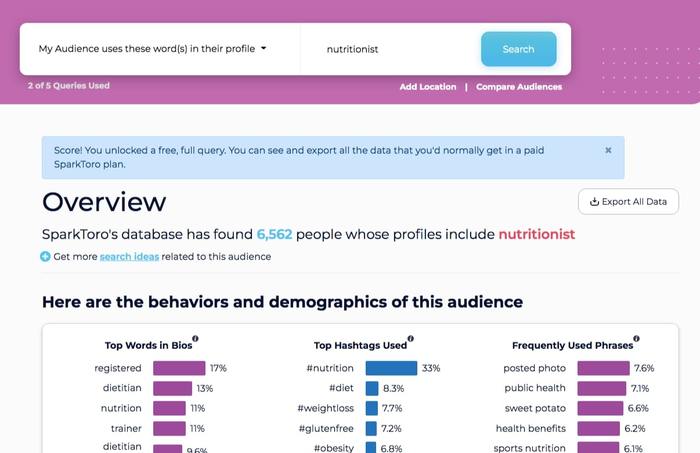
The tool shows you their other interests aside from nutrition.
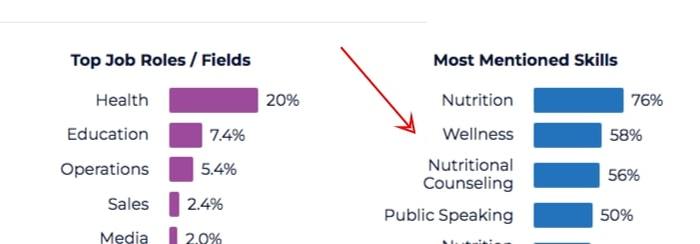
Create content on public speaking and wellness.
Replicate this content marketing technique to your brand and never run out of ideas.
7. Use Proven and Tested Blog Post Introduction
Content is king, but first, you must grab the reader's attention.
You do that by using a blog post introduction that works.
You consistently grab your readers' attention and retain them on site. And thus, it indirectly improves your rankings and conversions.
The success of Backlinko (now acquired by SEMRush) is anchored to Brian's copywriting skills.
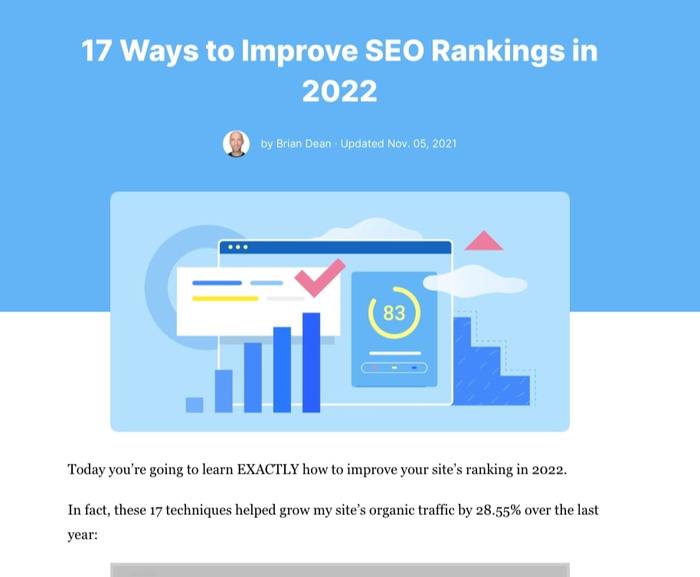
Backlinko has its PBB copywriting formula for content's introduction:
- P - Preview
- P - Proof
- B - Benefit
Tell exactly "what's in it for them?". Show results to build credibility. Give them more by showcasing the benefit of your information.
8. Generate Outlines Using ChatGPT or Frase Blog Outline Generator
Writing about the topic flawlessly is much easier when you structure content.
Your writing flows. You cover the essential information.
You can prompt ChatGPT to write a comprehensive outline for the topic you're writing about.
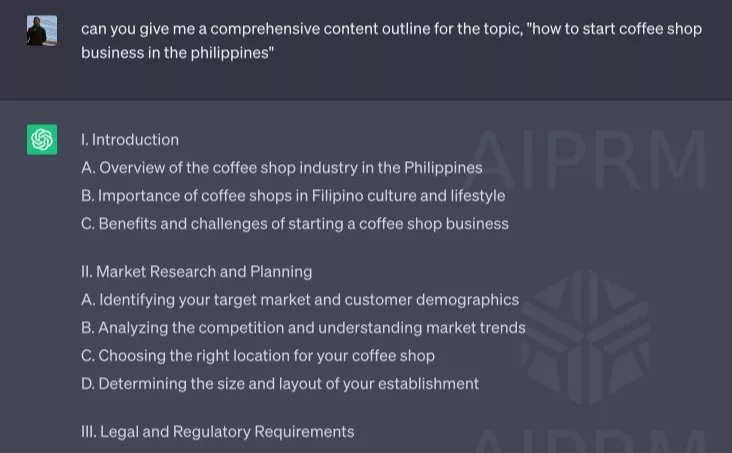
One way to generate an outline quickly is by using Frase's new tool - Blog Outline Generator.
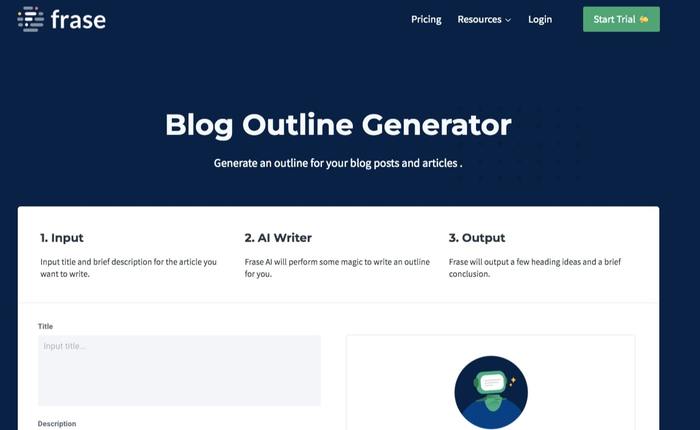
Input your title and description and wait for the AI tool to generate outline suggestions based on the ranking pages for the keyword.
It gives you insights into your outline quickly—no more hassle when starting.
9. Optimize On-Page With Surfer SEO
Competitive advantage is when you build proper on-page for your content.
It's not that easy. Add semantic keywords and entities to your content for more topic coverage and topical authority. Include headlines that target topically related keyphrases.
This takes a lot of work.
But SEO tools like SurferSEO bring out the exact terms and instructions you need to optimize your content better.

With exact frequency.
And some other entities you can include.
Build your topical authority by providing the quickest answer and the most comprehensive information about the topic.
10. Demonstrate E-E-A-T By Hiring Industry Practitioners.
The bar for content quality increases as more and more brands invest in content marketing.
It's now a competition for expertise.
E-E-A-T (Experience, Expertise, Authority, and Trust) matter in SEO.
Experts and industry practitioners can provide better and new information than average writers.
They know exactly what to include in the "How-to" section and provide accurate and quick answers for the "FAQ" section.
Recently, I started my affiliate health blog that covers everything about sleeping.
I could find any writers from different content writer sourcing platforms or spend time finding the right fit — which, in this case, are medical practitioners.
Through Upwork, I found a doctor who writes for health blogs.
The content provides the highest quality of information with concrete instructions because of the writer's expertise.
Key takeaway: Hire industry practitioners to write for your blog. It makes your content credible and valuable — and helps you rank quickly.
11. Improve E-A-T by Adding Author Bios of Reviewers and Co-Authors
Besides the quality of information from industry experts, you also benefit from added "author bio".
If you ask industry writers to include their author profiles in your content, they won't hesitate to say "yes" to you.
Simply because it's added credibility on their part and more opportunities to market their content writing projects. Easy.
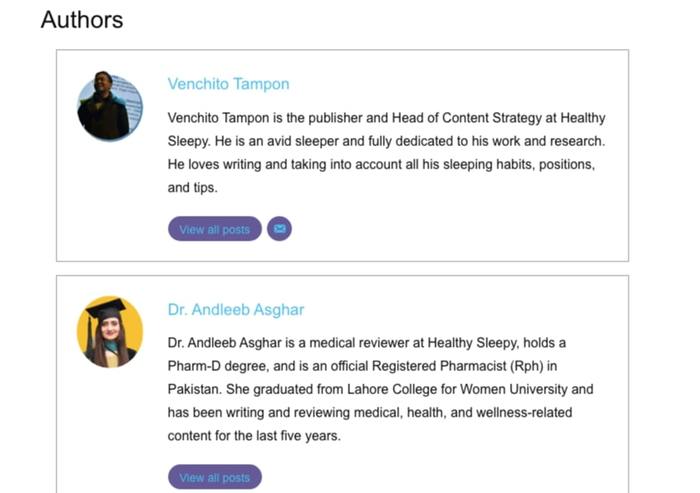
What benefits this to you?
Topical authority. Your content is much more reliable as you showcase reviewers of your content (and who they are). Their experiences, educational background — all these improve E-E-A-T of your content.
Check out this Mobile Monkey's guide on how to become a content creator.
12. Apply "First Mover Advantage" When Writing Content
What is the first-mover advantage?
It is your ability to be better off than your competitors due to being first in the market.
Being first is way easier than being the "best".
Content marketing translates to providing new information you won't see from your competitors' content.
You can do it by finding resources not easily sourced elsewhere. However, that does take enough work for research.
For example, you can search for filetype:pdf "keyword" to discover file attachments of documents, presentations, and other resource formats from the internal data team and practitioners.
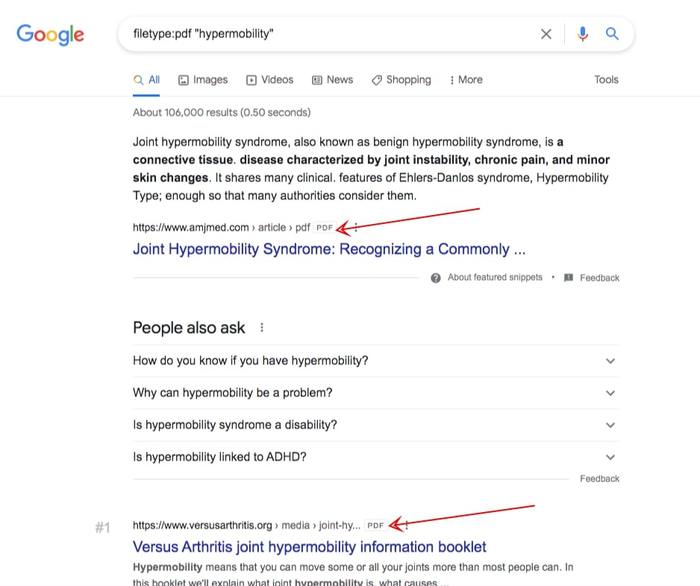
Most often than not, those files contain information that gives you a "first-mover advantage" when included in your content.
13. Create Shareable Images
Shareability is vital for content to get additional links. Thus, it helps improve your website's rankings.
Ahrefs, for example, create different shareable images that include workflows, templates, data, and other internal information that often gets citations.
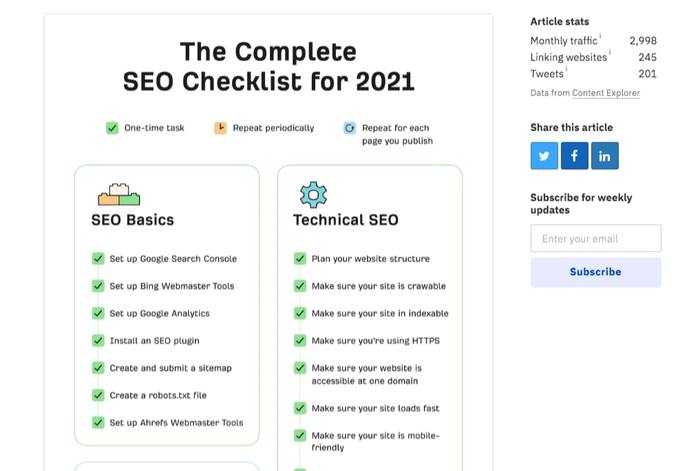
Another brand doing well in creating shareable images is The Zebra, an insurance comparison website.
They publish statistics content with citable, shareable images of checklists, surveys, and internal data.
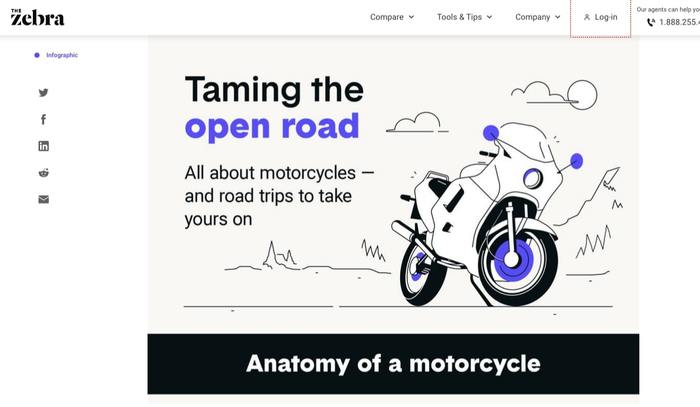
Both these brands understand the power of shareable images and how it positively impacts the perceived value of their content.
Think of adding value to your audience by creating shareable images.
14. Add a Descriptive Conclusion (Not Just "Key Takeaways").
One of the most overlooked parts of a content piece is the conclusion.
Most often, writers simply put a header, "Conclusion" or "Key Takeaways,” and summarize the entire article into one or two paragraphs.
A good content marketer knows how to grab his readers' attention from the beginning to the end of the article.
One creative tip is emphasizing a call to action or challenge to readers.
See SiegeMedia's ability to persuade its readers to act on the information.
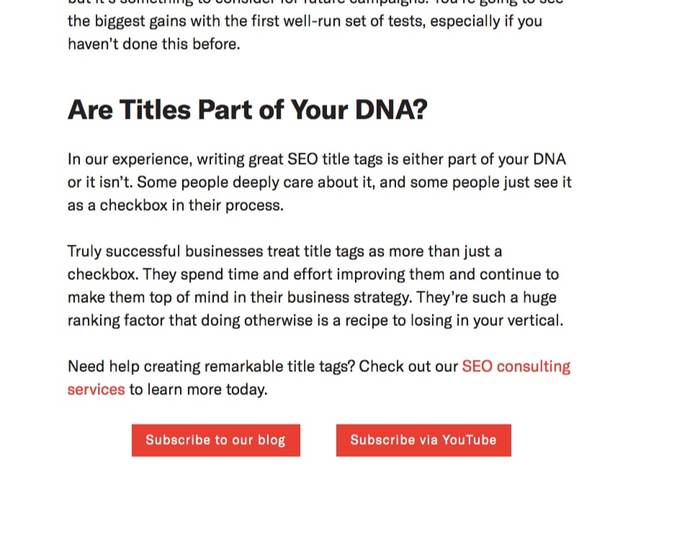
And other notable brands that do this well.
15. Upgrade and Upgrade Content
One best practice in SEO and content marketing is always to make content relevant to its audience.
That means you update the content from time to time to ensure the timeliness and usefulness of the information to current times and industry trends.
While having the ability to upgrade the content to make it the most comprehensive content on the topic, year by year.
One SEO technique is to add information for keyphrases your content has impressions yet is not currently ranking for.
You can use tools like Search Console and Ahrefs to find key phrases to optimize your content further.
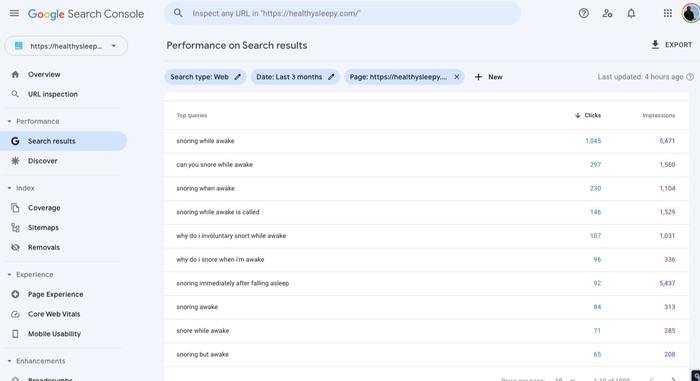
In Ahrefs, simply enter the URL of your page that's ranking well and go to its Organic Keywords report.
Scroll down. Discover and check keyphrases you can eventually turn into headings and sections of your article.
By doing so, you improve topic coverage of content and help improve its rankings for those topically related terms.
16. Do Conversion-Oriented Internal Linking
Internal linking is often an overlooked SEO strategy yet provides high returns on ranking improvements.
If you have middle-of-the-funnel content tied to your landing pages, linking to your conversion pages would be helpful.
It is a strategic move to get more conversions simply through internal links.
Take a look at Gusto. They did a great job internally linking to their product pages from "how to buy" and other middle-of-the-funnel content.
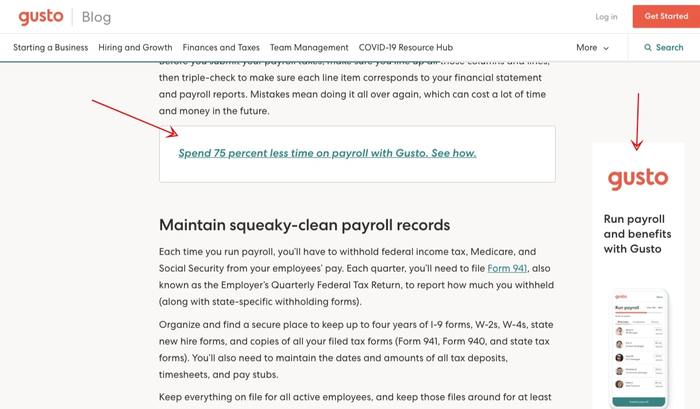
It's much easier to get conversions this way, as potential customers have a semi-intent of purchasing products.
Go through your pages and see which pages you link internally to your conversion pages.
17. Create a Content Calendar
Organization of content ideas is critical to producing highly useful content assets consistently.
Plotting those topics in a calendar is easier to be consistent.
There are many ways to create a content calendar.
Here are some valuable resources to help you jump-start with that.
- Content Calendar Template by Backlinko
- The Best Content Calendar Template to Organize The Year 2023 by CoSchedule
- How to Build a Content Calendar (Plus a Free Template) by Convince & Convert
18. Use TweetHunter to Grow Your Audience
Twitter is becoming more and more of a content platform these days.
As more influencers and brands leverage the power of Twitter threads to showcase their expertise and build a strong following, the use of the platform is more of a necessity than a luxury.
However, using Twitter may seem time-consuming for most busy entrepreneurs and marketers. It eats up their time — as they say.
The key is to do it in a single hour (or a few hours every week) and let it run for you.
How?
Publish tweets quickly using TweetHunter.
The tool allows you to write and schedule tweets through built-in AI-suggested ideas.
You don't have to consume all your mental energy to flesh out the content. All you have is to swipe all trending tweets in your industry and based on niche keywords.
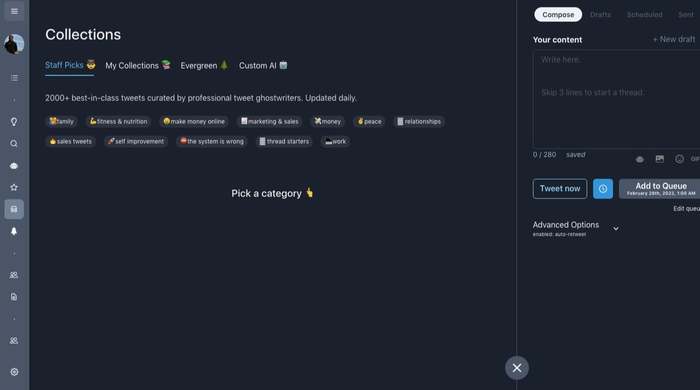
Another cool feature here is engaging with like-minded influencers on the platform.
All you have to do is to find tweets from profiles with a certain number of follower counts (>2000). And from the platform, engage these followers by replying to their tweets.
19. Repurpose Web Assets For Content Promotion
Content writing is 50% of the battle. The other half should be spent on content promotion.
The key here is not to overdo the "thinking process" of content promotion but to leverage some assets you've published on your site and distribute them across your marketing channels.
You can repurpose web assets by turning them into other content formats better contextualized to be promoted in a particular marketing platform.
For instance, instead of creating another new Youtube video to be posted on Tiktok, you may instruct your graphic artist to produce several short reels (videos). Contextualize it to the platform you're marketing to, either by adding texts, sounds, or images that are popular or useful to your target audience.
Another way is to turn industry guides into several shareable images, which you'll then use as bait for guest posts.
Simply upload images as part of your email outreach campaign to get more attention right at the start of the pitch.
20. Do Omni-Channel Marketing With Your Content
If you hit the right audience with content on specific platforms where they engage, you get followers consistently and build your brand.
Omnichannel does that.
Look at different customer touchpoints. And see which marketing platform can help you further your content.
21. Leverage Blogger Outreach To Get Backlinks
Blogger outreach is a solid strategy to get in front of your potential customers, acquire backlinks and improve your website's rankings.
Given that readers are likely to follow personalities (bloggers) if your brand has been linked to one of their content pieces, you'll have a chance of getting more clicks from those inbound links.
Do strategic link placements on industry blogs.
Either leverage content-driven link exchange or other link building strategies on blogs.
Content Marketing in Action
You'll find many ideas on how to create and promote your content. But these ideas will come into reality if apply them.
Best practices are based on different contexts and scenarios. Test them out and see the results yourself.
Content Marketing Tips Frequently Asked Questions
What are the 4 C's of content marketing?
The 4 C's of content marketing are Customer, Cost, Convenience, and Communication. By focusing on these 4 key elements, companies can create effective content strategies that resonate with their target audience, are cost-efficient, easily accessible, and facilitate communication between the brand and customers. Prioritizing these 4 C's is crucial for successful content marketing campaigns.
What are the 3 C's of content marketing?
The 3 C's of content marketing, namely content, context, and communication, are crucial for successful brand and publisher collaboration. By working together, brands and publishers can drive the evolution of the content marketing landscape, ensuring that the right content is delivered to the right audience at the right time. This collaboration enhances the effectiveness and impact of content marketing efforts.
What are the 5 rules of content marketing?
The 5 rules of content marketing are essential for success. Firstly, understand your audience's needs to create relevant content. Secondly, focus on creating unique content that can enhance conversions. Thirdly, strive for excellence in content creation to stand out. Fourthly, establish a strong social media presence to reach a wider audience. Lastly, maintain consistency in delivering quality content for long-term impact. Following these rules will help you achieve your content marketing goals.
What are the 7 steps of content marketing?
The 7 steps of content marketing are:
- Content Planning
- Content Creation
- Asset Development
- Shareability and Viral Marketing
- Content Promotion
- Repurposing
- Ongoing Measurement
These steps provide a structured approach to effectively strategize, create, and measure the success of a content marketing campaign. Using these steps can help businesses achieve their goals and connect with their target audience.
Getting Dofollow Backlinks from Primary Schools
In a nutshell, do follow backlinks can pass Page Rank (link juice) from the linking page to a website it links to.
These are different from nofollow backlinks because this other type of backlinks has "nofollow" tag attached to them. Google and other search engines ignore backlinks with a "nofollow" tag attribute.
In a natural HTML programming practice, all links are by default do follow unless these links have the nofollow attribute applied.
Sidenote: Learn more of these fundamental topics in this beginner's guide to link building.
Let me cover this one scalable link building strategy that can help you acquire sets of dofollow backlinks for your website.
What is the major difference between a no follow backlink and a do follow backlink?
The major difference between a nofollow backlink and a do follow backlink is how they affect website authority. Dofollow links pass on authority, benefiting the linked website, while nofollow links do not transfer authority or "link juice." This understanding helps Google associate and evaluate websites effectively.
How to Get Dofollow Backlinks
Here are three ways to get dofollow backlinks from primary and secondary schools:
- Know the difference between primary school backlinks and Edu links
- Discover available link opportunities
- Establish link building process
- Start content creation.
- Do outreach
There are three phases of execution in this strategy, and just like any link building campaign, it is composed of link research, content creation, and outreach.
There's nothing new here if you've been in the SEO industry for years, but I have been fascinated with this strategy because it's so simple to execute, and its difficulty level is very low.
Let me explain.
Both .edu links and links from primary and secondary school websites are great, but the value is dependent on your website's relevance and actual conversions (how many links you gained from a series of outreach campaigns).
There are noticeable differences that I've seen tapping into both types of links.
Let me give you a few things that I've noticed.
Know the difference between primary school backlinks and Edu links
Educational website managers, including the ones who handle library guides, would have to pass on reviews to other staff members concerning the resource to be added - we may call it their editorial process.
Sometimes your content piece has to undergo a series of reviews by different staff members handling the page, making sure it's a resource relevant to theirs and could add value to their target visitors.
It may take weeks or several months to get your link live. This certainly requires patience, but it’s worth it if you acquire backlinks that come from a highly trusted and authoritative website.
For primary and secondary school websites, it wouldn't take you long to find that their kids' pages or family pages are being managed by a few people. At most, these pages are managed by just one person.
The short period of time it takes you to get the backlink from the time you do the outreach is a huge advantage for most SEOs, especially those that deliver monthly reports of live links to their clients.
Discover available link opportunities
Before we dive into the actual process of pursuing backlinks from this type of website, let me give you the available link opportunities we could find from primary and secondary school websites.
1. Resource links from subject-based resource pages
Primary and secondary school websites have dedicated pages for each subject their teachers offer in schools, i.e. that they publish pages for math resources, science resources, social studies, and reading resources.
Here are websites that can benefit from this link opportunity:
- Online courses that sell primary and secondary school subjects
- Niche-specific informational blogs
- Course on reading
- Parenting blogs with categories or are focused on teaching kids
2. Resource links from curriculum pages
These are pages dedicated to school teachers. They have curated pages of additional materials and tools to help them with their teaching and mentoring skills.
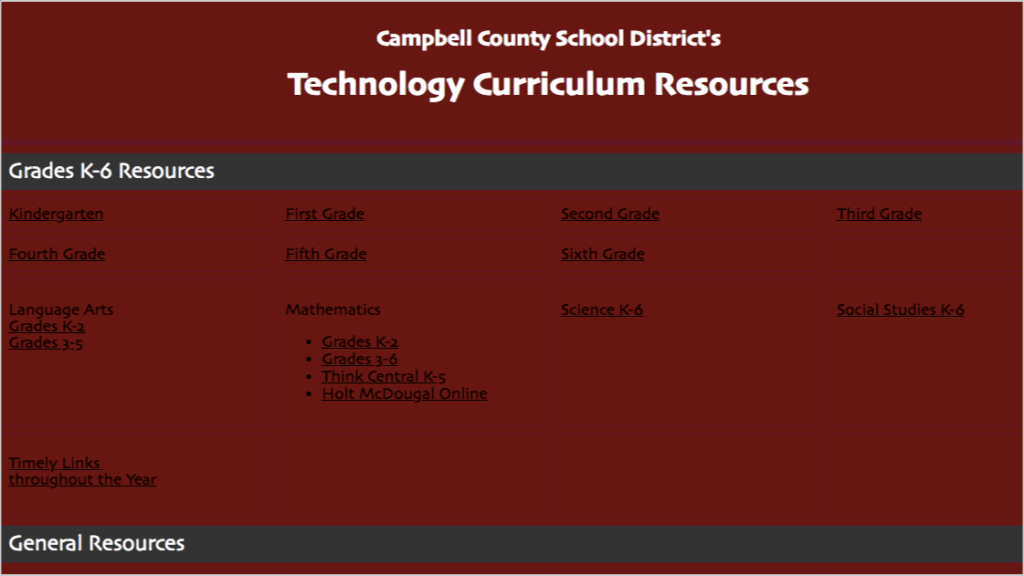
Here are mostly what comprises these curriculum pages:
- ELA Resources
- Math Resources
- Science Resources
- Social Studies Resources
- Teacher Tools
- Learning Lab
- Final Products/Presentations
C. Resource links from Special Education pages
These are pages targeted to parents of kids with disabilities and parents teaching special kids.
Here are websites that can benefit from this link opportunity:
- Company blogs that can target people or kids with disabilities using their content
- Non-profit websites for PWDs
- Niche-specific blogs and sites intended to educate or mentor people with disabilities
D. Resource links from Counseling pages
This page covers many topics that link out to relevant resources - a very rich field if you'll ask me, as they could be tapped by different websites in the health industry.
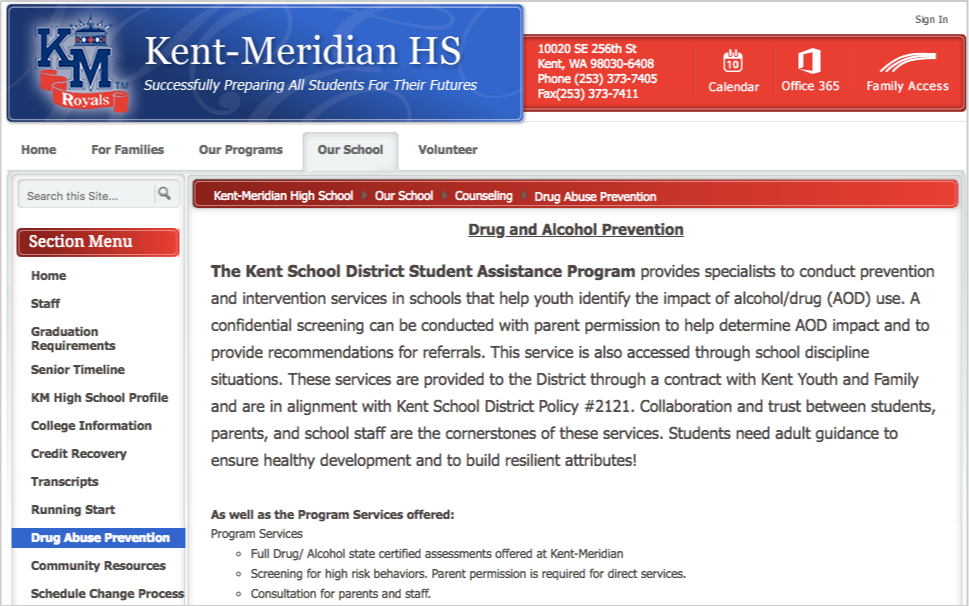
Here are some topics mostly covered under counseling pages:
- Mental health
- Social or emotional-based references
- Sexual abuse protection and avoidance
- Drug abuse
- Teen Driving
Here are websites that can benefit from this link opportunity:
- Drug-recovery companies
- Non-profit org geared to help sexually-abused individuals
- Mental health advocates
- Car companies with blog content on teen driving
E. Resource links from parenting pages
Not only that primary and secondary websites have pages for teachers and school staff members, but they also cater to parents.
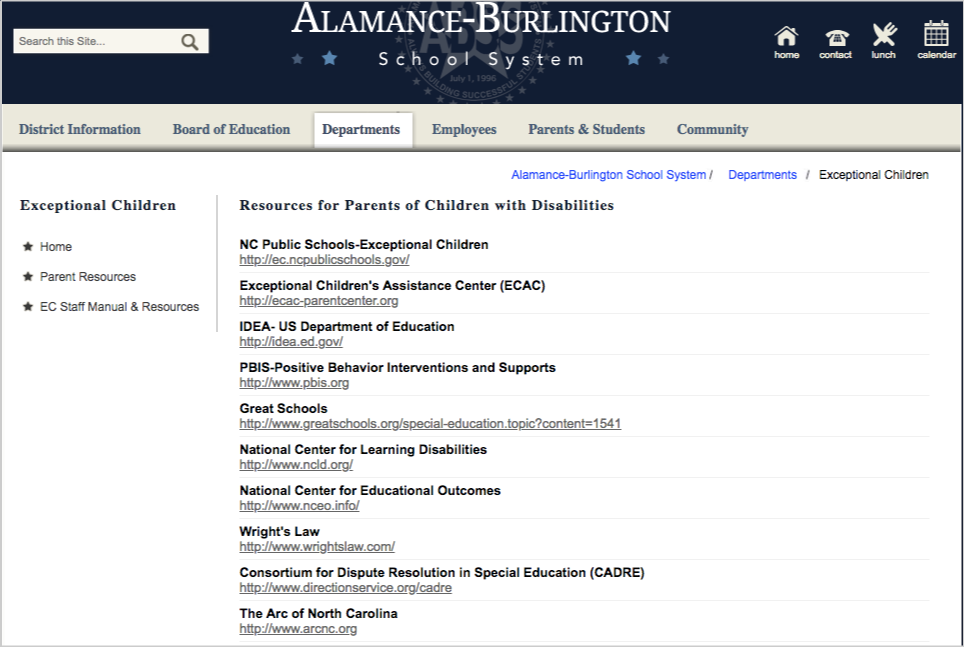
It wouldn't just be beneficial for parenting blogs and companies that target parents with their content marketing initiatives.
Look at deeper niches underneath parenting, as they may be highly relevant to your content - for example, there are niche pages for parents of pre-kindergarten kids.
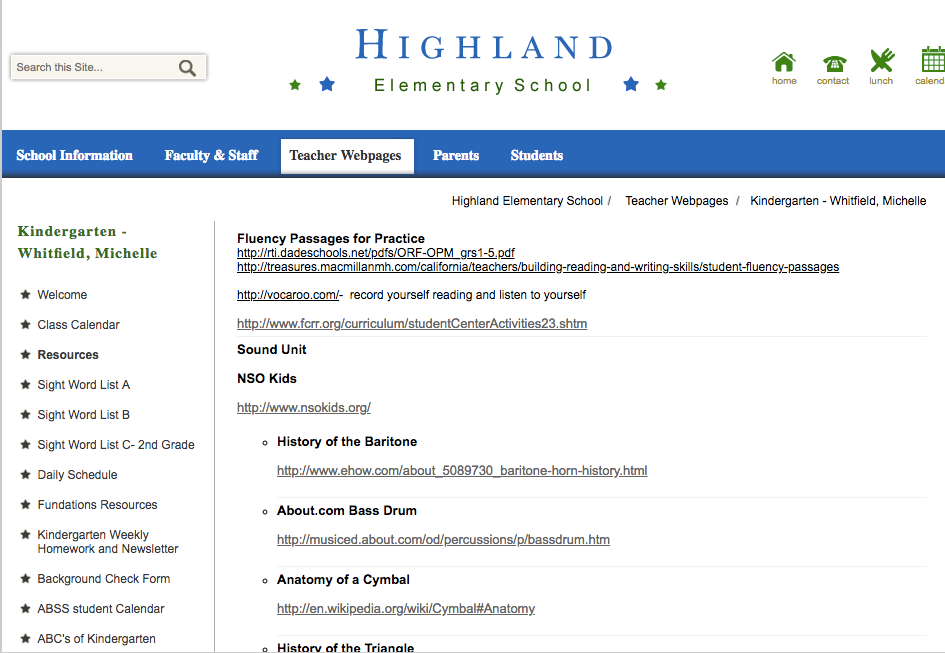
Establish link building process
When content is king, context is queen. That's why if you understand your target market, it would be easier for you to create mission—driven content—meeting a particular audience's needs.
Earlier, I covered different link opportunities you can tap into with your content. If your brand is highly relevant to one of these audiences, you can create high-value content and perform outreach to get links.
However, before diving into content creation, you must gather links of link opportunities. Given that you have a type of linking page in mind (e.g. mental health pages of primary and secondary schools), start by looking for these backlink prospects.
Here are some examples of search queries you can use.
- "TOPIC" site:.us inurl:k12 ~resources
- "TOPIC" site:.us ~resources "high school" -services
- "TOPIC" site:.us ~resources "elementary" -services
- "TOPIC" site:.org "high school" -services ~resources
- "TOPIC" site:.org "elementary" -services ~resources
Replace TOPIC with your target page type. So if you cater to counseling pages, you will use this search query: ____.
Start content creation
Get involved in the content creation process. Many companies are outsourcing their content needs without the due diligence of looking at the content's format, style, and tone. This is a no-brainer, but I have come across brands that target link opportunities above that fail to convert any links because of small neglect to customize the content to a particular audience.
Here are some guides to help you out in creating content that works:
- 55 Actionable Writing Tips
- Creating and Developing Content Assets Like a Pro
- 38 Most Creative Ideas I've Ever Seen
- How to Improve the Value and Volume in Content Marketing
Do outreach
The type of outreach that suits best link opportunities of primary and secondary websites is resource-driven outreach.
The primary reason is that these pages are listicles and webmasters would be more responsive to link requests or broken link replacements, compared to accepting third-party content (which is more applicable in student blogs of .edu websites).
You can use the exact email template you use in a broken link building campaign.
Hi [First Name],
I was checking out some of the resources listed on the [Page Title] page of your website, and I noticed that I knew of a couple resources that might be worth adding. Would you be interested if I sent them over? If not, I totally understand, just thought it wouldn’t hurt to ask.
-[User First Name] [User Last Name]
Experiment and Scale The Strategy
If the audiences I've listed above are suited to the informational content you post on your site, trying out the scalable strategy of getting resource links from primary and secondary schools would be best.
It's a good tactic to add to your link building arsenal that can keep your pace with your competitors on a month-to-month basis.
Do Follow Backlinks Frequently Asked Questions
Is no follow backlink good?
No, a no follow backlink is not considered good for SEO. While nofollow links do not directly impact Google rankings, they are meant to indicate to search engines not to follow the link or pass authority. It's best to focus on acquiring dofollow backlinks that can positively impact your website's search visibility and rankings.
Do no follow links help SEO?
No, nofollow links do not directly contribute to SEO. However, they can still generate valuable referral traffic. Even a nofollow backlink on a high-traffic site like BusinessInsider or BuzzFeed can drive thousands of visitors to your website. While these links may not pass SEO authority, they can still positively impact your overall online visibility.
What does no follow backlinks mean?
"No follow backlinks refer to hyperlinks tagged with rel=“nofollow”. They don't impact destination URL's search engine rankings as Google doesn't transfer PageRank or anchor text through them. Even further, Google doesn't crawl these nofollowed links." The new answer directly explains the meaning of no follow backlinks concisely, adhering to Google's guidelines and SEO best practices with relevant keywords.
How to Send a Follow-Up Email After No Response (Increase Links by 30%)
You send an initial pitch. You open your inbox the next day. No new email.
Therefore, you want to send a follow-up email after no response.
Either you are hesitant to do it, or you lack the knowledge to write one.
Sending follow-up emails is extremely important — we can attest that our campaign's success rate increased by 30% just by following up once per link prospect.
If you don't how to write and send an initial or second follow-up email, this post is for you.
How to Send a Follow-Up Email After No Response
1. Check if your initial pitch was opened.
You can manually check every email you send for open rates.
If you have a tool, it's easy to identify which emails were unopened. Use an email tracking platform or outreach tools like Mailtrack, Buzzstream, Boomerang, or Right Inbox.
![]()
Some tools will give you insights into the number of opens per email. Was it opened once or multiple times?
The reason behind knowing that is to understand the behavior of your link prospect.
If the email is opened multiple times after several days it was sent, it may mean that the potential linker is likely to be interested in what you're offering (guest post, product review, link request, etc..).
If the email isn't opened yet, you may have to modify your email subject lines to entice an open.
The next step is to:
2. Write a follow-up email based on open rates.
Because you now know how many open an email receives, you write your initial follow-up based on the open rate.
It's a good metric to consider in the outreach campaign as it gives you the appropriate context for each email.
You don't simply blast your link prospects with generic follow-ups. Ensure that what you send corresponds to their behavior and what they're looking for.
If emails have no opens, your step is:
3. Modify subject lines if there are no opens.
Your subject line is critical to opening.
If emails have no opens, you have to modify the subject lines.
Your revision will be based on your original subject line.
Ask honestly this question yourself: if you open an email, will you open yours if that's your subject line?
Here are some more tips when sending follow-ups for emails with no opens:
- Use the template [Asset] for [Website] as your follow-up's subject line. It gives the right context both for the type of content you're offering and for addressing properly your link prospect.
- Include the original email in your initial follow-up. You can insert the copyright below your follow-up message. The reason is this: your link prospect doesn't have to bother finding your original follow-up — it gives more chances for your follow-up email to elicit a response.
- Another subject line you can use is this one: "Just in case you missed this.." or any lines with "Haven't heard..".
4. Use FWD as your subject lines for emails with one or multiple opens
Fortunately, when your email is opened once or multiple times, there is a clear indication of interest from the end of the link prospect.
With that, here are some tips you can apply for follow up emails with one or multiple opens:
- Use Fwd as your follow-up's subject line. Very short yet specifies an email has been forwarded and demands an open. It is also the subject line best for forwarded emails (email address given to you for the proper addressee).
- Include original emails. Like emails with no open, it is best to give them a short preview or message of what your original email looks like.
- Make variations or use them straight to your follow-up emails: "Just in case you missed this", "Is there anything you need", or "Re:followed by your original subject line".
How Often Should You Send Follow-up Emails?
Another question is, "How long you should wait before following up?."
As a link building agency that sends hundreds of follow up emails every week, here are three of our recommendations for sending follow-up emails.
First, follow up within 2-4 days (excluding weekends).
It is best to let your link prospects respond within a few days after your initial pitch. Also, it's a good idea to choose the best date and time for your follow up email sequence.
There are many reasons why people don't respond within 24 hours, especially busy link curators and publishers in your industry. Take 2 to 4 days off for that specific outreach campaign and send that time resource elsewhere.
Second follow-up 5-7 days after the first email
One follow-up email might not cut for receiving a response.
That's when you send another follow-up.
Send 1 to 2 follow up emails per pitch. Don't overdo it.
Put yourself in the link prospect's shoes. If you were in that situation, you also don't want to receive three or more follow-ups with the same angles of the pitch.
After previous follow up emails, if you wish to send another follow-up email after 2 or 3 times, it is best to send another angle of pitch or find any pain point.
If a pitch to become a guest contributor for a prospect's blog doesn't work, try pitching your resource guide or an interesting infographic you've recently published on your blog.
Lastly, do not send any follow-up cold emails to link prospects you've never pitched in the first place. Follow-ups are only given to email campaigns with initial pitches - sounds very basic, yet mostly overlooked.
Follow Up Email Template
Here's our sample follow up email template for a broken link building pitch.
Re: found a problem on your {{Resources}} page
Hi {{Name}},
I'm a 3rd-year student from WGU Missouri and I am currently researching for my new project about people with PTSD (post-traumatic stress disorder).
Just checking to see if you received my email regarding errors on one of your pages. If you have, my apologies!
I'm not sure if you're the one who handles the page. If not, would you be kind to let me know of the person in charge of that webpage?
Best,
[ Name ]
FURTHER RESOURCES ON FOLLOW UP EMAILS:
Don't Lose The Link Prospect Without A Follow-up
You've made an effort to discover your link prospects. Be sure to invest more efforts in the outreach process, particularly in following them up after no response.
A good link prospect deserves a non-aggressive, value-adding follow up email. With a proper call to action, the follow-up campaign can increase your overall response rate (law of average).
How to Send a Follow-Up Email After No Response FAQs:
How do you politely follow up after no response?
Craft a concise and friendly email to follow up after no response politely. Start with a brief reminder of the previous message and express your interest. Offer assistance and provide a clear call to action. Keep the tone professional and avoid sounding pushy. Sending a well-crafted follow-up can increase your chances of getting a response.
What do you write in a follow up email after no response?
In a follow-up email after no response, it's important to politely remind the recipient and ask for their review and prompt response. Showing an understanding of their busy schedule, establishing a deadline, and offering to call their office if necessary. Be concise yet polite in your message to increase the chances of getting a response.
How do you politely follow up on an unanswered email example?
To politely follow up on an unanswered email, consider sending a short and friendly reminder. You can ask if they had a chance to review the email and provide any additional details if needed. It's important to add value by highlighting the urgency or next steps. Remember to be polite and avoid accusing or pointing out the lack of response.
How can I politely tell someone that I m waiting for their response?
To politely let someone know you're waiting for their response, you can use alternatives such as "I'm eager to receive your feedback," "I await your reply," or "I look forward to hearing back from you." These phrases convey your anticipation while maintaining politeness.
How to Get Inbound Links To Your Site
What is inbound and outbound links?
Inbound links, or backlinks, are links that direct to your website from other sites. Outbound links are links that point to other websites from your own site. Inbound links help increase your website's authority and improve search engine rankings, while outbound links provide valuable resources for your audience. Building a healthy balance of both types of links is important for successful SEO.
Among the 1 billion web pages studied by Ahrefs, 90.88% don't get any traffic from Google searches.
There are hundreds of SEO issues that keep those other 9% pages away from ranking well in Google, but Ahrefs shared two most common scenarios:
- The page doesn't have any backlinks (inbound links).
- The page doesn’t target a topic with enough search traffic potential
Imagine if you know how to get inbound links to your site, you'll be better off than the rest of the articles and other types of pages published daily.
So...
How to Get Inbound Links To Your Website?
1. Discover ways to promote your underpromoted and underutilized content assets
You may wonder why I didn't start with "create great content!".
Here's why:
If your brand has been around for a while, you may have published several content pieces that, if you take a quick look, may have just shared socially, got a few links, but never maximized to get many more inbound links.
These are your underpromoted and underutilized content assets.
Tim Soulo, CMO of Ahrefs, in his latest presentation at Pubcon, shared a recent study they conducted with backlinks of ~100k random* domains. They found that 77.6% of domains had less than 30% added links in their sample size.
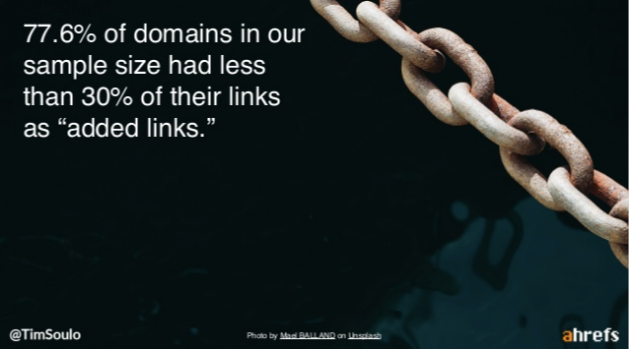
Added links were added to a referring page after more than 3 months since the page was published.
So if your content got additional backlinks after 3 months, those were considered added links.
This posed a problem for many content pieces published in every industry. Some of them don't get much-added links after months of publishing.
How to Solve This Issue?
Identify your underpromoted & underutilized content assets. These pages have gotten a few links in the past but are evergreen and can still be promoted through manual outreach to earn more inbound links.
You can use Ahrefs for this quick execution (Ahrefs - Top Pages).

The best way to quickly get the needed pages is to export the file.
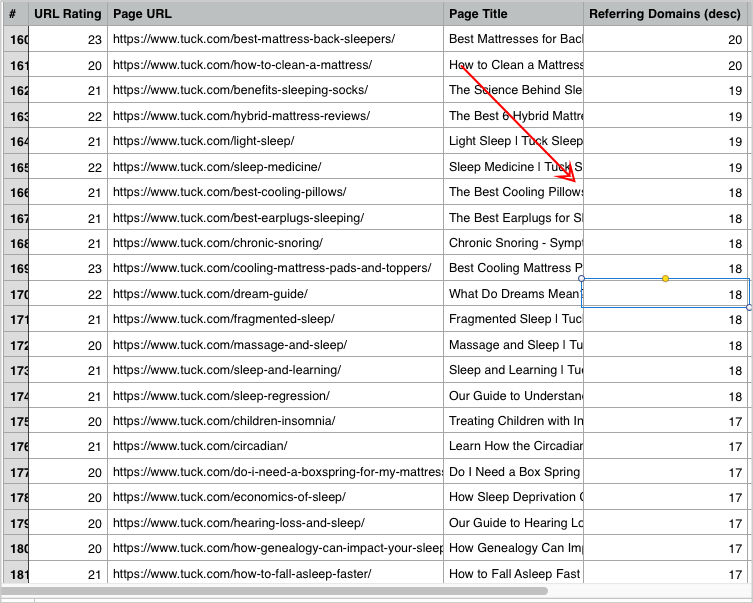
You may go further in filtering by only looking at pages that have been published for three months or so. Filter the pages by the First Seen column.
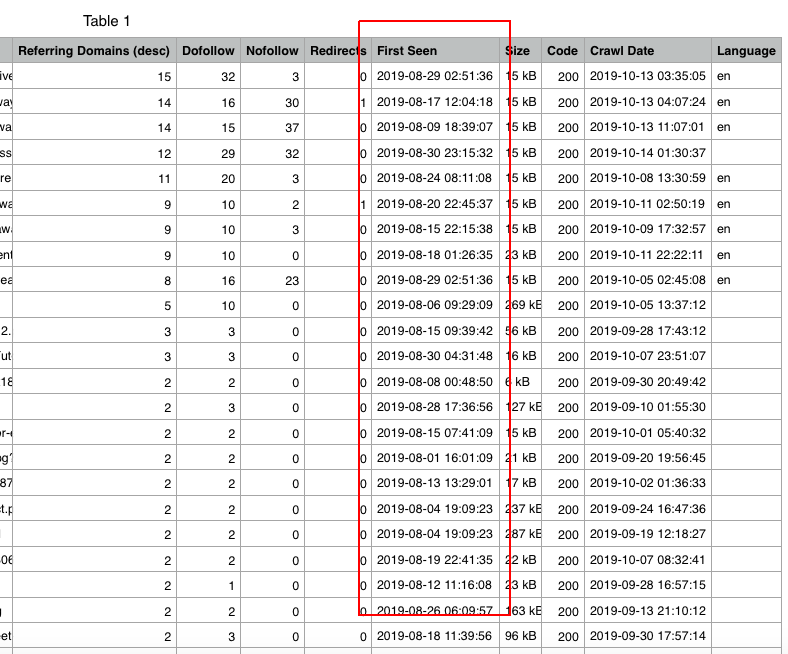
The pages that you currently have may be a mix of sales and informational content. Sort out content assets purely for information.
Once you have underutilized & underpromoted pages at hand, here are some recommendations you can take.
Check the existing links pointing to your content. Understand some patterns of the types of links. Are those links mostly resource page links? Are they referenced in other articles as guest posts? Do those links are pretty much contextual links?
DISCOVER PATTERNS IN TYPES OF LINKS
By understanding the type of linking your content asset (or your client) has gotten into, you can devise your strategy around it. For example, if you have links from resource pages, you can create another round of resource page promotion for that content piece. That's how you get more inbound links to it.
CHECK THE EVERGREEN TEST OF CONTENT
To get more inbound links to your content piece, the page has to be updated to its current standing in information. If the content you've created is evergreen — can stand the test of time even after months of another set of promotions, you'll likely get more positive responses in content promotion.
Check the content for the evergreen test. Upgrade it as much as you can with new relevant information.
OPTIMIZE FOR NEW RANKING KEYWORDS
Look for new keywords your content piece has been able to rank for. Using Ahrefs or Search Console, you can quickly check for new ranking keywords. By optimizing your content for those new topics, you increase the search visibility of your content for new opportunities.
This increases your chances of getting organic links from people who might have found your content in Google and sourced it as references to their content works.
ENSURE CRAFTING A NEW OUTREACH TEMPLATE
In many cases, link builders trying to re-promote a content piece often had much lower response and outreach placement rates than their first outreach campaigns.
Here's why:
They haven't taken the time to review what works and what doesn't with their initial email template. They send the same email template to their new prospects — where some may have been part of their initial batch of possible linkers.
The key to ensuring you get the most out of your next outreach campaigns is improving your outreach templates.
You may check out these guides on email outreach tips and outreach best practices and Gmail extensions for outreach.
2. Reclaim links to your content
Some pages have mentioned your brand, name, and any content piece you have developed for months and years.
What you need to do is to reclaim links from unlinked mentions.
I've written a new guide about link reclamation on this link building blog. But here's a good summary of tips you can easily apply to your campaign:
- Track the coined terms of your brand using Brand Mentions or Mentions, and reach out to those who've mentioned them without giving you links.
- Use reverse image search tools like Tineye to find blogs and publishers who used your visual assets. Reclaim links using manual outreach.
- Find footprints of pages where your short-form text was referenced (e.g., quotes from your company staff, statements derived from data, or short definitions of terms).
Monitor your content, whether it's a visual, coined phrase, short-form text, or any branded content that's worth referencing. Reach out to publishers who've sourced them for their own content works, and ask them to credit you with links.
3. Target local pages for inbound links
You may not be getting quick inbound links on a global or national scale, but if your audiences are in the local scene, you can think of ways to execute a local link building campaign.
I've covered seven hard-hitting local link building tips in one of my posts. But here are bite-sized tips to get you started with them.
- You can get inbound links from local niche job resource pages if you have job portals or pages for niche-related job positions.
- Develop localized visual data from valid statistics sources in your vertical and promote it to local publishers.
- If you're in the local real estate niche, you can acquire resource inbound links from summer or off-campus housing city pages (simply do outreach to them).
- Serve frequently-search queries with local content (i.e. street occupancy, moving permits, local neighborhoods, helpful moving tips, things to do before you move to another city, resources for landlords & tenants, voter registration, address change, etc..).
There are many other local link building strategies, some of which are highly niche targeted. Here are some good readings for you.
Further Reading:
- Link Building For Travel Booking Companies
- Link Building For Bands and Musicians
- Link Building for Plumbers
- Creating Content That Gets Links For Personal Trainers
How to Check Inbound Links To Your Website
It is important to know who links to your site to keep track of the results of your link building campaigns.
While there are intangible outcomes you can't quantify and monitor quickly, like brand impressions, the number of connections built throughout the entire outreach process, the number of inbound links you've generated in your outreach campaign gives you a quick rundown of the campaign performance.
To check inbound links to your website, you can use this finest tool, Ahrefs. It has a free version you can immediately try today.
I'd recommend their paid subscription because it unlocks their best features and provides more data about your site's inbound links. You can check out our own tool review of Ahrefs here.
Disclaimer: I'm not an affiliate of Ahrefs.
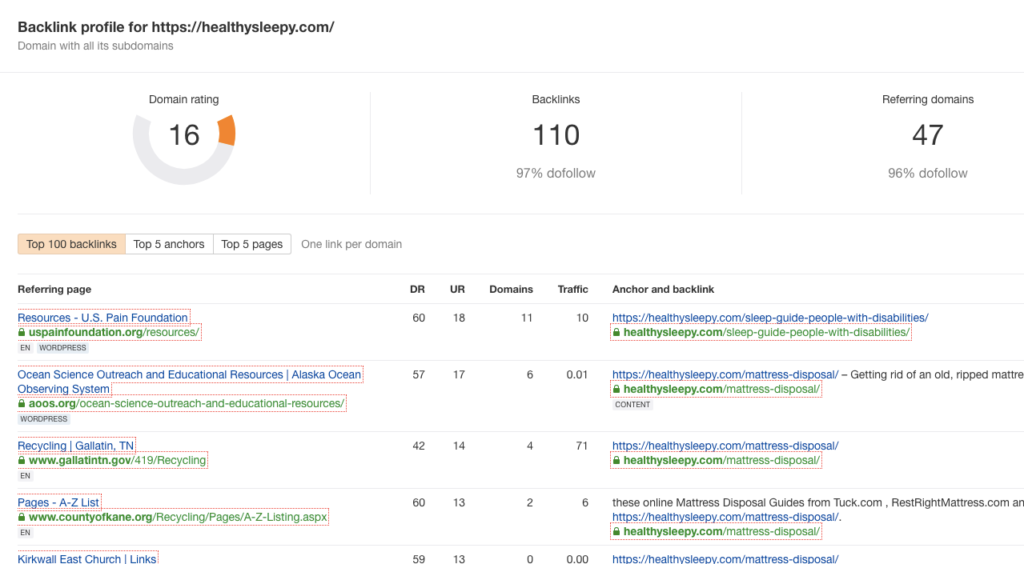
Another option is to use the Search Console. Go to Links, and there you can export external links. The list may not cover most of your links, but it will give you enough rundown of your inbound links.
Have We Been Helpful?
Want to increase your inbound links to your site — or you don't where to start?
We are here to help you. SharpRocket is a team of link building specialists who love building high-quality links.
To learn more about how we can help, look at the link building services we offer.
Inbound Links Frequently Asked Questions
What is an example of an inbound link?
An example of an inbound link is when a reputable website like Forbes.com mentions your latest book in a blog post and provides a clickable link to your website. These backlinks from other sites increase your website's credibility and visibility in search engines.
Is hyperlink inbound?
Yes, a hyperlink inbound refers to a link from another website pointing back to your site. In the realm of SEO, having a diverse range of high-quality inbound links is a proven strategy to increase your search engine ranking. These backlinks play a crucial role in determining the visibility and authority of your website.
How do I find inbound links?
To find inbound links, go to Search Console and select your property. Then, navigate to Links > External links > Top linked pages. By default, the report is sorted by Incoming links, revealing pages with the most backlinks. To see which pages have the most links from unique websites, sort by Linking sites.
Link Reclamation: How to Reclaim Lost Backlinks
What is link reclamation?
Link reclamation involves identifying and rectifying instances where your brand or company has been linked incorrectly online. It focuses on fixing and replacing these improper links. You can enhance your website's authority and improve its search engine rankings by conducting link reclamation. This process is an essential aspect of modern SEO strategies.
This is perhaps the most effective link building tactic that can easily drive an initial set of links to your website – it won’t require newly published content. You utilize your existing web assets for link reclamation (website, images, text, article, etc..).
Is Link Reclamation The Right Tactic For Your Business?
If you’re asking whether or not link reclamation is the right tactic for your business, the answer is – it depends.
Link reclamation is best utilized by brands with already established authority in their industries, whether through word-of-mouth marketing, content development, press publication, or other branding initiatives. Given that link reclamation requires tracking of existing publishers who mentioned the brand in any form, authoritative brands (i.e. Fortune 500s) that have a set of content followers would more likely benefit from this link building tactic.
Reclaiming links is a process that happens when you've either lost links and want them back or when you've not been properly linked to, such as with a broken link or a non-linked mention. Links can vanish for multiple reasons. Sites get moved, pages get removed, and your link isn't always foremost in a webmaster's mind. Keeping an eye on lost links and non-linked mentions is a fantastic way to keep and add to the good links you want in your profile.

Julie Joyce, Founder of LinkFish Media
For newly established brands, link reclamation isn’t the initial link building technique that could be easily implemented immediately unless they have content assets readily available on their sites that can potentially earn links occasionally.
How to Reclaim Lost Links: Link Reclamation
1. COINED TERM
The coined term is a word or phrase created by a publisher or content creator to refer to a new thing (an event, strategy, place, tip, etc..). The term has been mentioned by other industry publishers in their content pieces – exposing the word/phrase to an existing audience and using it in daily conversations (whether online or offline).
Almost every industry has its own coined term. Whether you are in finance, health, or even in search, you’ll notice many words that are mere creations by influencers and by highly respected SEO publishers. The topic of this post, link reclamation, is just a coined term created by Eric Ward way back in 2004.
So how can you leverage coined term creation in acquiring links?
First, you’ll have to think of something new to contribute to the industry – i.e., a tip or trick that would benefit a specific audience group. It shouldn’t be a copy of another principle, but it should be a unique or revised or twisted version.
For instance, Brian Dean coined “Skyscraper Technique” on his SEO blog, Backlinko. It has been used multiple times on other marketing blogs as one of the effective SEO strategies for ranking a website on Google and acquiring consistent traffic from search engines.
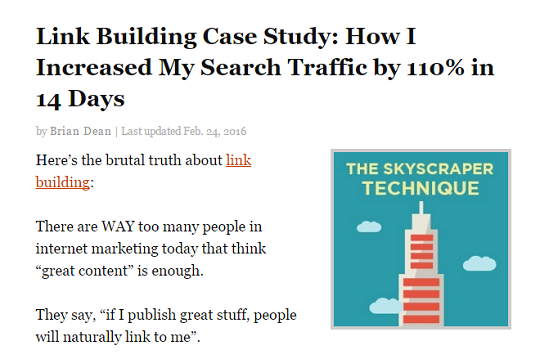
Once you created a coined term, it's time to promote them to your audience. Here are a few ways to get traction to your coined-term-based content:
- Build links pointing to your content asset from relevant websites within your blogosphere.
- Get internal links from pages that can support your content - i.e. glossary.
- Include your coined term when answering commonly-asked questions in forums and Q&A sites.
Finally, if you've seen high interest to your coined term from your web community, you can track which publishers and content creators have used your created term in their own content pieces. Tools like BrandMentions and Mentions.net can aid you with this.
2. DRIVE VISIBILITY TO UNLINKED CONTENT
Reaching out to webmasters through email outreach and asking them to credit references by linking to the original creator works effectively for most link builders – 50% or higher is the usual conversion rate.
However, if you nudge potential linkers with pre-acted efforts i.e. distributing their content on content promotion platforms, you’ll receive more responses and more links reclaimed for your brand.
One way to show that you initiate connections with these potential linkers is to share their content on social media sites even before you email them. Notify these publishers by adding social handles to your social updates to inform them that you shared the original post.
Putting email postscripts like, “I’ve shared your post on Twitter already, twitter status is here: www.url.com” to your pitch helps build enough trust to get them to link to your website.
3. FILE LOCATION LINKS
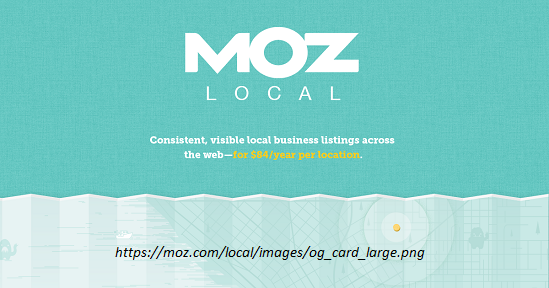
Not utilizing images for link acquisition is an opportunity lost, especially if multiple images are uploaded on your site (i.e. ecommerce branded product images).
Those images, particularly branded images intended for distribution (i.e. infographic), should be monitored regularly to see if there are websites that have already linked to you as their source. However, if they’re linking to the file location (i.e. domain.com/images/photo.png) instead of the page that image is uploaded (i.e. domain.com/blog-post/), content creators who linked to you this way should be asked to change their destination link.
Monitor file location links using Ahrefs, CognitiveSEO, or OSE and ask content creators to change the destination link – from the file location link to the linking page.
4. EXACT MATCH IMAGE SEARCH FOR EASY IDENTIFICATION
One of the difficulties when finding pages to reclaim links from, particularly for enterprises, is seeing several pages in search results with the need to filter out further irrelevant pages – i.e. those where you do not own content.
For instance, if you are reclaiming links from content creators who uploaded your infographic from their sites but not having a link to you as the source, then searching for [ blogging ] [infographic ] would reveal branded visuals from other publishers.
At SharpRocket, our main qualifier for exact branded image reclamation is using allintitle – an advanced search operator. This helps Google drives out pages with page titles that are not similar to the title of the branded content.
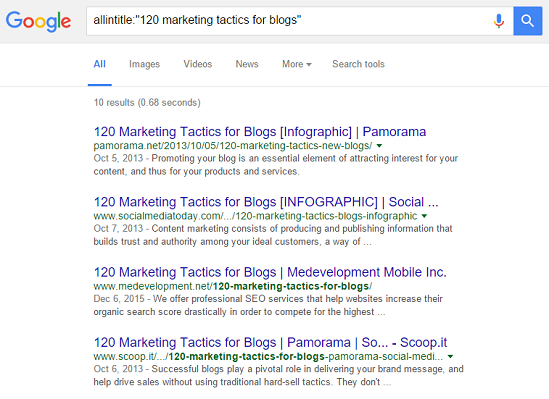
One thing to remember is if your visual titles aren’t unique (i.e. it’s the most common keyword others are trying to rank for as well), then there are filtering efforts you still have to do in search results.
Even having unique visual titles, there is a ~10 to ~20% inefficiency here since you’ll also weed out pages from allintitle search that happen to be the pages where your content has been placed on. Examples are:
- Pages with a different page title but uploaded your branded content.
- Pages that only include a portion of your visual (sliced infographic into sections), then getting only one portion as a resource to their content.
For 90% of the time, using allintitle search operator for image link reclamation helps you easily target pages that use your branded content. And when they haven’t credited you as the source, reach out to them with tested copies and secure those links (sample outreach copies in the latter section of this post).
5. SHORT-FORM TEXT

Short-form text is a small piece of content worthy of mention on other publishing sites for reference to a certain topic. This varies in many kinds, such as:
- A definition of a term previously coined by someone (e.g. linker outreach, inbound marketing).
- A statement derived from data (“You have less than an hour to respond on Twitter”. – from Buffer’s social media stats).
- A quote from an industry influencer – speaker, author, or writer ("Behavior rewarded is behavior repeated").
Having a few short-form texts on your website increases brand exposure and helps you gain editorial links from other publishers who’ll be referencing your small content from their blogs. If, fortunately, they’ve linked to your site, reach out to them and send a simple “thank you” message. Building a rapport with these content creators would amplify additional links in the future – as they can also refer to your short-form text from their content pieces on other blogs (their guest posts).
If some publishers didn’t credit you as the source, you could pitch them to reclaim unlinked mentions of your content.
If you are starting out to build your own brand and don’t have a set of followers yet to spread your short-form texts on the web, then here are some ways to promote these small pieces of content:
- Participate in industry forums and Q&A sites by answering relevant questions, particularly those that require defining terms – so you can simply insert your short-form texts easily and still get value from the discussion – clicks and assisted conversions.
- Track publishers who frequently use the industry phrase and offer them to add your own definition.
- Include them in your site’s external web assets (i.e. linking to them from your contributed content on other blogs). This nudges readers from other blogs to make it also a reference in their own content pieces.
Building short-form content assets isn’t scalable. You can’t force your brand to create this type of content if it’s not remarkable. Otherwise, it will serve as plain text on your page without any publishers stealing your content.
The solid gold process for creating remarkable short-form texts is to think of something unexpected hook in it – the “amazing thing” that initially captures the interests of most industry publishers.
6. GIF FORMS FOR QUICK TUTORIALS

The growing content marketing industry creates new types of content that help consumers read, see and digest information easily on the web.
GIF-based quick tutorials are one form of content asset that has become popular and useful these days. It is almost similar to the traditional video tutorials created by startup agencies and bloggers trying to entice customers or clients to purchase their products or services. What differs is that they are easy to consume, as you don’t need to click the play button to watch the full tutorial. It automatically runs even without initiative from the user.
So how can you maximize the use of GIF-based quick tutorials for link acquisition?
Before anything else, let’s first understand that not all quick tutorial GIFs can get you to earn additional links. This type of content is usually a portion or one step in a whole definitive guide or resources. Unless the content can stand on its own – i.e. it doesn’t need other quick tutorials to support its idea, it isn’t feasible for content to be promoted.
How to come up with ideas for useful GIF quick tutorials:
- Generate content ideas from Top GIFs on Reddit.
- Brainstorm common problems in your industry that don’t require long-form tutorials to provide solutions to. An example of a useful quick tutorial is this Resetting Password gif –almost everyone who uses computer encounters this problem.
- Look for frequently asked questions (FAQs) page in your niche and answer one question with a simple GIF quick tutorial.
When you are done brainstorming for topic ideas, you can use any of the following tools to create your own GIF quick tutorial:
Once the content is published, spend time monitoring publishers who have used your quick tutorial on their own web pages. You can use Tineye to track websites that stole your branded GIF, which you can reach out to reclaim unlinked mentions.
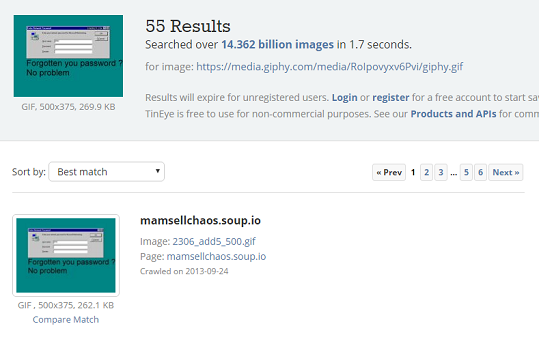
7. OPTIMIZE YOUR PHOTOS FOR IMAGE SEARCH
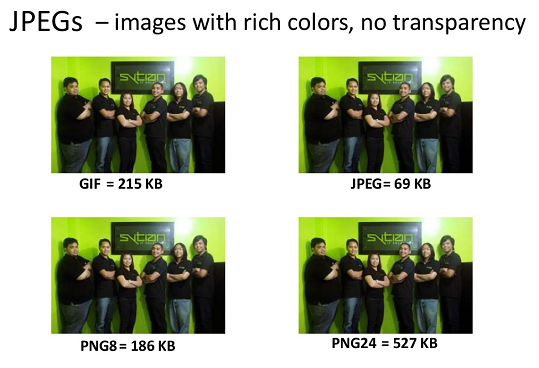
Image optimization is one of the best practices in search marketing as it helps sites’ branded visuals to rank for targeted keywords and absorbs additional search traffic from organic sources.
Since content creators use search engines to look for high-quality images, ranking highly for image search allows your visuals to be featured on other relevant blogs. – if they’re not linked to you as the source, you can pitch them and ask for a link.
Here’s a quick checklist of points to complete for each visual:
- Optimize your image traditionally for target keywords (e.g. star-wars-jedi.jpg).
- Describe your image in a few words using the alt attribute tag – the maximum number of characters is 125.
- Try to come up with unique versions of images since Google also treats duplicate images in image search like in universal search.
- Use correct image types for page speed: JPEGs for images with rich colors and no transparency; GIFs for images with flat colors; PNG8 for transparent images with flat colors and PNG24 for transparent images with rich colors.
8. CHANGE LINK REQUESTS FOR OLD DOMAINS
When building links to new domains of your brand, one tactic that searches marketers often overlook is reclaiming links built to old web properties. These are links pointing to hosted sites like Wordpress.com and other free platforms or links to old-owned domains. You may have started blogging using these old/hosted sites and received several links to them, but sooner have a blog on your own domain or have bought a new one.
The optimal process is to check your old web properties and see if other websites (not owned by you) point to your old website. Get these links changed by asking existing linkers to link to the right destination pages, or you can permanently (301) redirect old pages to their equivalent landing pages on your new website. This is very important since you don’t want to redirect all pages from the old site to the new site’s homepage only unless it’s relevant and beneficial to do so.
A few more tips to keep in mind when requesting to change links from old domains to new websites:
- Check if old properties are still owned by the brand you’re working for. You can’t simply grab content assets (images, rich media, etc…) and anything hosted in your previous domain and publishes them on your new website. Otherwise, you’ll be sued by the new owner of those aged sites.
- If possible, redirect old pages to their equivalent landing pages on your new website. This allows users to find the information they’re looking for straight ahead instead of using the homepage’s search bar to look for the right page.
7 Best Link Reclamation Tools
There are a hundred options of tools on the web that helps link builders track unlinked mentions, identify broken pages in their websites or initiate conversations through email outreach, but here is my recommended toolset that can assist you in a link reclamation workflow.
1. BUILTVISIBLE’S LINK RECLAMATION TOOL
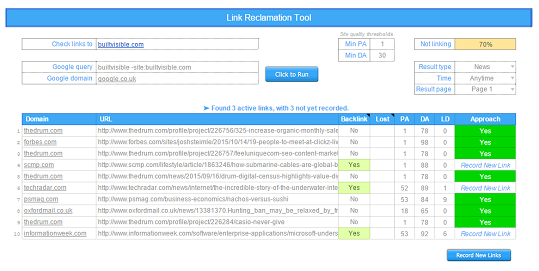
This is probably the most accessible tool in the market that supports in-house and agency link builders for tracking existing mentions - whether linked or unlinked. This free tool also allows viewing websites’ data – domain authority, page authority, and several linking root domains- making it easy for search marketers to prioritize outreach prospects that might generate the highest link value.
Agency link builders can execute link reclamation at scale by renaming Google Sheets with their own labels of clients’ campaigns.
If you are lowering costs on premium SEO tools, this one might be a good option to add to your link reclamation toolset.
Note: Google is a bit slow in returning data in the spreadsheet, but aside from that, the tool works pretty well.
2. BRANDMENTIONS
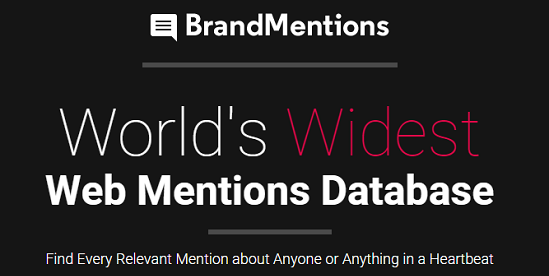
Brandmention’s main value from a link reclamation perspective is sending email notifications whenever a mention of your content has been tracked. It lets you monitor branded mentions in real-time while doing other marketing tasks. This keeps you in the loop for new publishers you can contact for content partnerships.
Its notable features – language filtering and location-based sifting- keep this tool distinct from other tracking products. This allows you to prioritize mentions from certain audiences where you could further analyze why and how these mentions had been placed.
3. MAILTRACK.IO
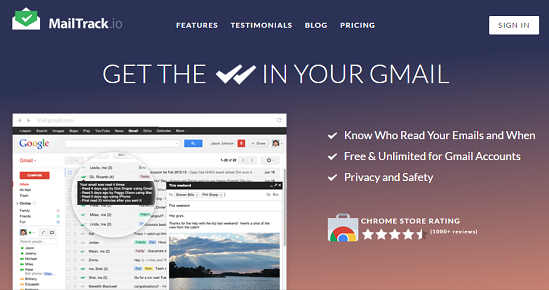
If you’re tracking open rates in outreach, MailTrack.io provides a free option to guarantee to report for that key performance indicator. If you play in an industry where publishers aren’t responsive in emails, open rates enable you to counteract communication issues. Options might include switching to another subject line that captures immediate interests from recipients or adding more personalization straight to subject lines to nudge email opens from prospects.
It also lets you know when content creators read your emails, giving you a framework for optimal email scheduling times. If you’re using emails for link reclamation outreach, you must use MailTrack.io.
4. TINEYE
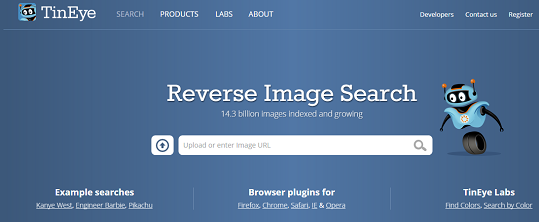
Tineye might be the most underrated image reclamation tool on the web. It enables you to track websites that stole your branded visuals – whether it is a logo, infographic, or company staff photo and when these publishers haven’t referred to you as their original source, reach out to them and reclaim image-source links.
Additionally, if you are working in an image-heavy space where every section of the content requires photos, you might consider adding Tineye to your link reclamation toolset for image reverse engineering purposes.
5. EMBED CODE GENERATOR
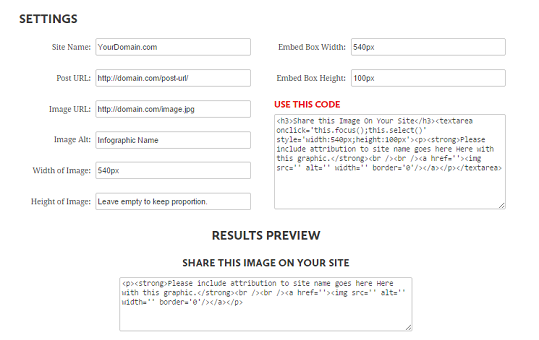
Siegemedia’s Embed Code Generator is a simple but powerful tool for distributing visual content to other publishing websites with the full guarantee of linking to you as the original creator.
Aside from its customization features, including image and embed box resize, it lets you see the embed code preview straight from the platform itself. The tool gives you a lower probability that other industry content creators will not link to you as the main reference for customized images.
6. MENTION.NET
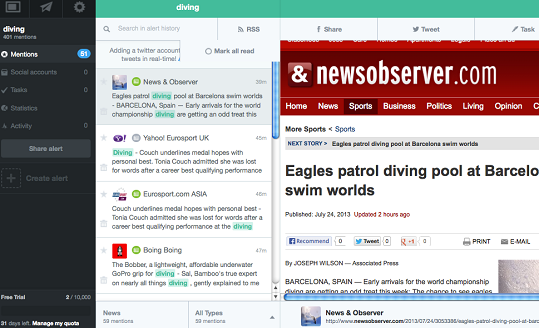
Mention.net is the next-best option for uncovering mentions of your brand based on various sources such as social, news, blogs, videos, and forums. The difference-maker of this tool is its capability of filtering web mentions using sentiments (neutral, positive, and negative). This aids you to easily see negative mentions that you can counteract immediately through proper response.
It also allows you to filter results by tags which you can use to sort data according to industries, keywords, and content properties.
7. 301 REDIRECTS
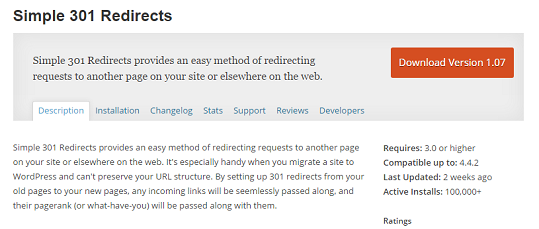
301 Redirects is a simple and free tool for WordPress users. For introductory link builders without programming skills or access to FTP files, this plugin enables you to redirect links to corresponding web pages permanently.
From a link reclamation perspective, this workflow helps you preserve a smooth flow of link equity through your website by minimizing internal broken pages.
Link Reclamation Email Outreach Templates
The main course of link reclamation is outreach, which is asking publishers who haven’t linked to you as the source to get them to attribute to your content asset by linking to it.
Conversion rates using this workflow normally get 50% and even go up to 100% if everything is executed correctly.
To get the best results for your link reclamation outreach, below are a few outreach strategies with examples of email templates that you can test for yourself.
1. RECLAIMING LINKS OUTREACH
Once you track all publishers who’ve mentioned you or grabbed a certain content asset (but didn’t link to you), you can reach out to them and ask them to give you credits as references.
Being aggressive – i.e. using copyright law or license as the initial paragraph in your pitch that doesn’t sounds polite often decreases the response rate. Though this is not the case for publishers whom you’ve built relationships with before, they normally take time to go to their site’s dashboard and give you links from their pages.
The best practice still is to make your pitch sound like you want to spark connections with them and be kind to ask for links from their websites.
Here’s an outreach template for asking for links from publishers who haven’t credited you as their references:
Subject: Thanks for mentioning [ SITE/BRAND NAME]
Hi [ NAME ],
Hope you’re doing great day.
I would like to drop a quick message to say thank you for mentioning [ BRAND NAME ] in your post - [URL].
I noticed that you hadn’t included details of our brand and was wondering if you would be kind to include a link pointing to our website, so your visitors would see more information about your reference.
Thanks again
Kind regards,
[ YOUR NAME ]
2. REQUESTING TO CHANGE DESTINATION PAGES
Sadly, bloggers and content creators often ignore the request to change destination pages in links pointing to your old properties. What we’ve tested that best nudges these publishers to take action is to give them reasons why doing so is useful for their websites.
Here are a few points that you can add to your pitch that increase the odds of getting bloggers change links’ destination pages:
- Emphasize how changing linking to pages helps their website achieve a positive user experience, given that visitors can see the right information on pages referred to by their content instead of seeing broken pages - if your old web properties have been moved.
- Include an additional unique proposition to your pitch – i.e. offer free content pieces to publishers.
- Ensure you properly include details of your request – the page where the link has been placed, anchor text used in external linking, the old page’s URL, and the new site/page’s link.
Here’s an email copy to use for email outreach.
Subject: Broken link on [ SITE NAME ]
Hi [ NAME ],
Hope you’re doing well.
It’s [ NAME ] from [ BRAND NAME ]. I noticed that you were linking to one of our old page, which has now been moved.
The link is on this page [ URL OF THEIR PAGE ] and is pointing to [ OLD URL ] using the phrase [ ANCHOR TEXT].
I’m wondering if you could possibly update the link to [ NEW URL ].
Your readers would benefit from this as they can now see the information they are actually looking for.
Thanks for your time.
Best regards,
[ YOUR NAME ]
3. BRAND MISSPELLINGS
One of the most obvious but often overlooked strategies in link reclamation is finding publishers who had misspelled your brand or product name in their mentions and asking them for spelling corrections. This process may be useful in a few cases where brand names are spelled incorrectly:
- A digit in a brand name (Believe2Succeed spelled as Believe to Succeed).
- Unusual sounding
- Foreign names
- Rhotacized words (inserting an r) – e.g. surport for support, and de-rhotacizing (removing an r) – e.g. supprise for surprise (source)
- Countries (e.g. Philipines for Philippines).
There are still other cases where brand names could be misspelled aside from what’s mentioned – use this tool to generate misspelled variations of your brand name.
Once you’ve identified misspelled mentions, it’s time to reach out to publishers using this email template:
Subject: Could you edit this?
Hello [ NAME ],
It’s [ YOUR NAME ] from [ SITE NAME ].
We noticed that your page [ ENTER POST URL ] is linking to [ SITE NAME ] - thank you so much for the love. Unfortunately, the link is spelled incorrectly and we’d like to ask you for a favor if you could correct this – so your readers could easily find our website.
The proper spelling of our website is [ SITE NAME ].
Is it possible to update the link?
Thank you,
[ YOUR NAME ]
Additionally, you can monitor misspelled variations of your brand name with the highest number of mentions using tools like BrandMentions. When found to be successful over time, this workflow can also be added to your link reclamation process.
Other Link Reclamation Techniques
You can try several other options to get backlinks from other content creators besides the aforementioned link reclamation methods.
- Make youtube linkers link to the primary domain. Video-heavy publishers have more than average chances of earning links from content creators uploading non-owned videos to their websites. Instead of preserving links to your youtube content, why not get them linked to the original source – your primary domain? Use Open Site Explorer to find these publishers.
- Make ”links to tweets” point to the primary domain. When tweets could be used as references for actionable tips, news coverage, or short-form data, leveraging links to tweets for your website’s benefit is a surefire way to improve your site’s backlink profile.
- Reclaim links from stolen PowerPoint. If this visual type of content has been uploaded to Slideshare or shared on similar sites, the same steps for the two above will work for this workflow.
Have We Been Helpful?
Want to take your link building to the next level – — but don’t know where to start and feel overwhelmed by this post?
We are here to help you. SharpRocket is a team of link building specialists who love building high-quality links.
To learn more about how we can help, look at the link building services we offer.
Link Reclamation Frequently Asked Questions
How do I fix a lost link?
To fix a lost link, there are four effective methods you can employ. First, use a broken link checker tool to identify the broken links. Next, update the internal links by replacing them with the correct ones. Additionally, ensure that you regularly monitor and update your website to prevent broken links from occurring. Finally, consider redirecting the broken links to relevant pages to maintain user experience and SEO performance.
Does backlinking still work?
Yes, backlinking still plays a role in search engine algorithms. However, businesses need to dedicate the necessary time and resources to obtain reputable backlinks. It may not be recommended for all businesses, as it requires proper execution to be effective.
How to Build More Links from the Same Domain
A good link building strategy is built on getting links from multiple relevant referring domains and earning repeated links from the same domain.
It's not that difficult to get links from different websites, but one that's often a challenge for link builders is making sure you deserve to get backlinks from the same website.
A small study conducted by Ahrefs found that 79.23% of referring domains link to the same website multiple times. This means that it's natural to have multiple links from the same website.
It's natural and beneficial for your brand to have recurring links. A few notable reasons shared by Ahrefs are:
- Increase the authority of your webpages
- Get links to more pages
- Get more referral traffic
- Build links more easily — as most SEOs are more focused on getting links from several unique websites than from several similar websites
This is a challenge for SEOs conversing with their dear clients, as they're mostly getting paid (for link building agencies) for the number of links delivered each month.
For enterprise link builders, affiliate SEOs, and online entrepreneurs who own web properties, you can leverage your efforts on getting authority organic links from referring domains.
The end result may be as organic as it may seem, but the process of execution may require some manual labor for SEO teams.
Today's post cover ways to build more links from the same website.
How to Build More Links from the Same Domain
1. Content Partnership in Building Mutual Trust
It's easy to dive into the next big link building strategy, but oftentimes what works in getting repeated traction is the same old link building techniques.
One, in particular, is guest blogging. Contributing content for other blogs must be high-authoritative blogs that your target audience engages in.
A more granular and effective approach to doing so is what we call content partnership.
Here, you're not just looking for a one-time contribution to your written article but pursuing a mutual collaboration for a content asset both of you will benefit from.
This isn't something you can scale easily. You have to build mutual trust along the process of executing content partnerships.
Start by making sure you have the authority in place in your place. Do you have content pieces that have massively gained traction for the past months or years?
If the content creator or publisher you're reaching out to doesn't see any value in your content pieces published on your blog, he/she would likely hesitate on the collaboration.
There must be expertise seen in your created content pieces. Reach out to targeted linkers to gain links from different authoritative websites. Here are some resources you can check out to learn how to create content assets that get links:
- 5 Linkable Assets Examples
- What is Evergreen Content and How It Works
- How to Use Content Inventory For Effective Link Building
Once you've established content authority on your website, reach out to a few targeted publishers you think can collaborate with you for content assets.
It is best to look for any content gaps in someone's publishing works to gain their attention once you pitch your request quickly.
You can use Ahrefs' Content Gap feature to discover topics and keywords these publishers haven't targeted yet for their content.
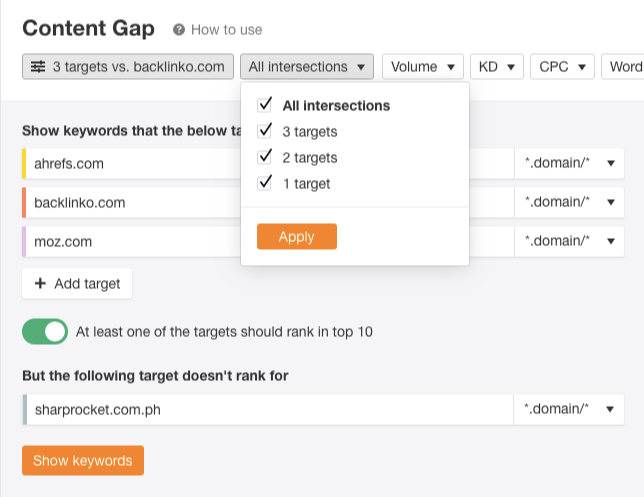
Assess if those topics from your content gap analysis are feasible to create content around. Do you have enough resources to write up the content? Are any practitioners in your team who can research and write the information? Or else, is there a way to hire industry practitioners who are into writing for niche publications?
Another tip is to pursue a visual-driven approach in content partnership. If your target publisher has solid data with content, it would be beneficial for them to format it so that people would visually consume the information instantly.
This means you offer your graphic design capabilities to create a better version of the content.
Find ways to keep your content partnership strong. Offer resources from your team. Be engaged.
B. Brand Excellence in Getting Recognition
Another way to get links from the same domain is to put excellence as your top priority.
This may sound cliche, but some publishers have annual awards for brands and personalities performing well in their industries.
Metrics for awards vary depending on their industry, but this is a good opportunity to get multiple links consistently from the website.
Start with putting out content assets on your blog that get attention from your target audience.
One advisable way is to establish a brand ambassador for your website. He or she will serve as your content performer to different publications, answering questions in interviews and making sure your brand is at the top of your mind for specific brand topics.

Essentially, it would require the person to be a practitioner to craft better answers to interviews and engage the community in question-and-answer sites (e.g. Quora) and niche forum discussions.
C. Linkable Asset Creation in Organic Link Building
Organic link acquisition requires your content to meet the needs of a targeted group of linkers.
We've covered so many times here in our link building blog this idea of targeting linkable audiences with content.
Yet I've seen many brands struggle to intersect audiences with their content themes. Oftentimes this happens for sites with very narrowed audiences. It's not surprising not to be able to find groups to target in our list of linkable audiences.
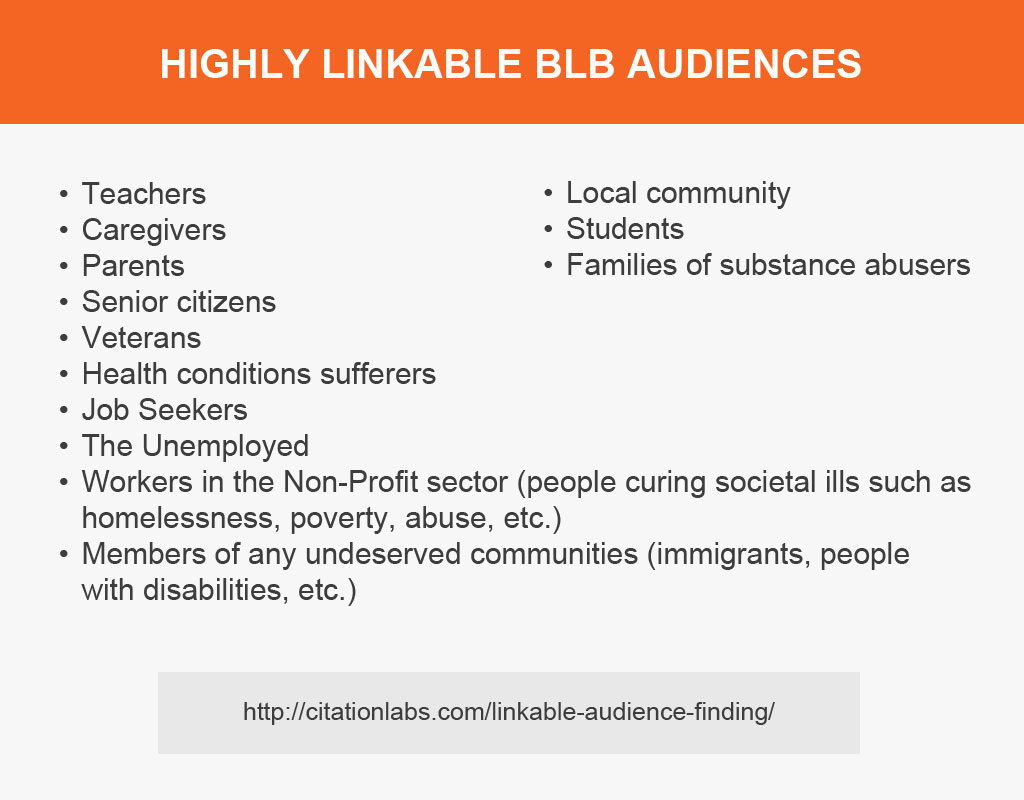
If this happens, you can check niche bloggers and publishers as your target linkable audiences.
Start surfacing your competitor's way of doing linkable asset creation. Are there any related audiences that've succeeded with content targeting that you can replicate to your blog?
Here are some resources you can check out on persona profiling for content creation:
- Quick and Dirty Guide for Creating Actionable Content Marketing Personas
- Buffer's Complete, Actionable Guide to Marketing Personas
Establish Authority for More Recurring Links
Just like anything else, there is no hit wonder in getting links from the same domain. Mutual trust, recognition, and an organic approach to content creation are key factors in making your link building successful.
Start with the right resources and build a flywheel effect on it over time.
Links From The Same Domain Frequently Asked Questions
Which links lead to different pages on the same domain?
Internal links are an essential SEO strategy that connects different pages within the same domain. These links improve website navigation, aid search engines in understanding the content hierarchy, and distribute link equity. Use internal links to enhance user experience and help search engines crawl and index your website effectively.
What is an example of a backlink?
An example of a backlink is when a popular blog site links to relevant content on another website. These website backlinks can be found online, often in articles that reference and link to other sources. Backlinks are crucial in improving a site's search engine rankings and driving organic traffic.
What does linking domains mean?
Linking domains refer to websites that have external links pointing to your site. The number of linking domains indicates the total count of unique websites linking to you. Even if a single domain, such as Pinterest or Wikipedia, has multiple backlinks to your site, it will only be considered one linking domain.
When it comes to links is it better to have a lot of links from different websites or a lot of links from one website?
It's generally more advantageous to have 100 links from separate websites rather than 1,000 links from a single website. Our search engine ranking correlation research showed that the number of unique linking sites (not the total backlinks) had the strongest correlation with Google rankings. Focus on acquiring diverse backlinks for better results.
How to Identify and Pursue Linkerati
What is linkerati?
Linkerati refers to Internet users who are highly likely to be targeted by a linkbait campaign. It is essentially a group of individuals who are known for being influential in the online community. By understanding and engaging with the linkerati, marketers can strategically create content that appeals to this specific audience.
Linkeratis (coined by Rand Fishkin), also known as linkers, genuinely link to content in two ways:
- Active - they constantly search for new references/resources to include on their resource page.
- Passive - they wait for other people’s suggestions of recently published linkable assets that might serve as additional citations for their content works.
In this post, I’ll be sharing actionable tips on how you can identify and find active and passive linkeratis (linkers), as well as how you can approach them effectively to build or earn links (with a few given examples).
How to Find Linkeratis?
1. Leverage Link Neighborhood
In scaling link prospecting, it should be a vital part of your process to constantly look for untapped sources of link opportunities regardless of the difficulty and depth level of the niche you’re working in.
If you make serious efforts to dig into new link sources, it will help speed up your collection of high-quality link targets in your industry - reducing the time you have to spend finding hundreds of link opportunities.
One way to scale link prospecting is by leveraging link neighborhoods.
Link neighborhoods are surrounding external links on a page where your primary link target has been found.
For example, in this resource page that I’ve prospected for a broken link building campaign for a finance client, I’ve seen a Payment Processing section that includes SaAs payment gateway/processing tools (Stripe, Braintree, Square, and NMI).
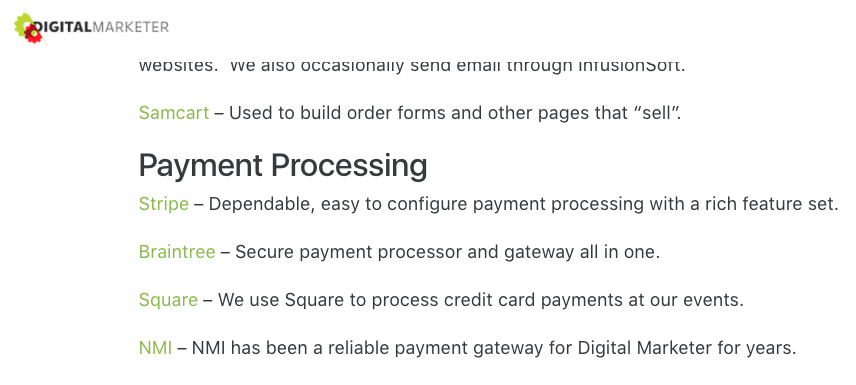
While these websites are non-competitors of my client from content and direct product competition perspectives, there might be relevant opportunities if I start to reverse engineer their inbound links.
I chose Stripe, a SaAs online payment platform among the tools listed, as it has a Domain Authority (DA) of 84.

It is best to check the website’s Domain Authority or Page Authority to quickly assess and sense if there are possible linking pages before reverse engineer all of them for any pointing links because checking low-DA sites for links may not reveal a handful of opportunities in most cases.
Also, I consider industry tools and products to reverse engineer on, as they normally can acquire links from resource pages given their utility as the context for linking (i.e. Resources for Entrepreneurs).
Checking all links pointing to Stripe, we gathered 25~ qualified resource pages for potential outreach prospects.
With a 3 to 5~ conversion rate in our broken link building service, we can acquire resource backlinks, including this link from a resource page (which is exactly a page linking to Stripe).
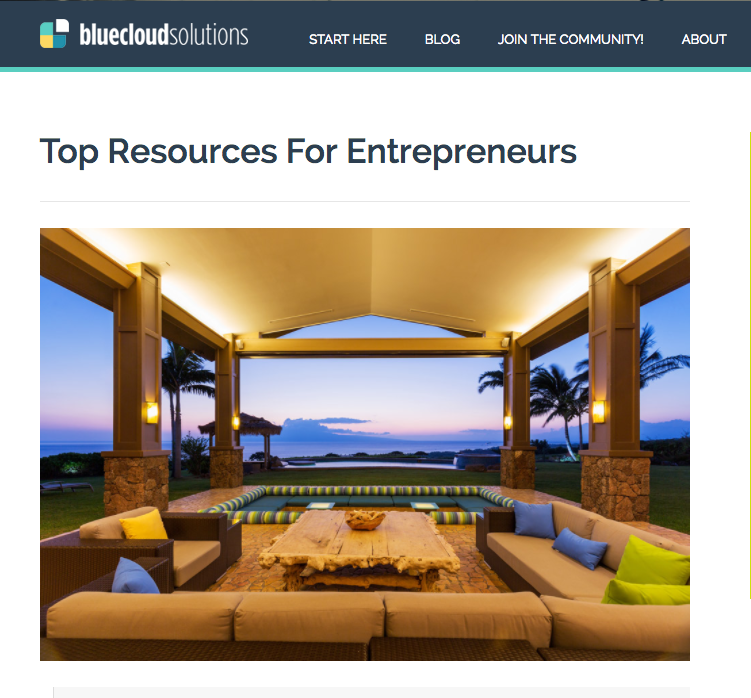 In addition, if you want more efficiency, you can also assess the page’s number of potential linking pages. The best tool to use is LinkMiner chrome extension. It has an option to quickly see the page’s number of linking root domains (LRDs).
In addition, if you want more efficiency, you can also assess the page’s number of potential linking pages. The best tool to use is LinkMiner chrome extension. It has an option to quickly see the page’s number of linking root domains (LRDs).
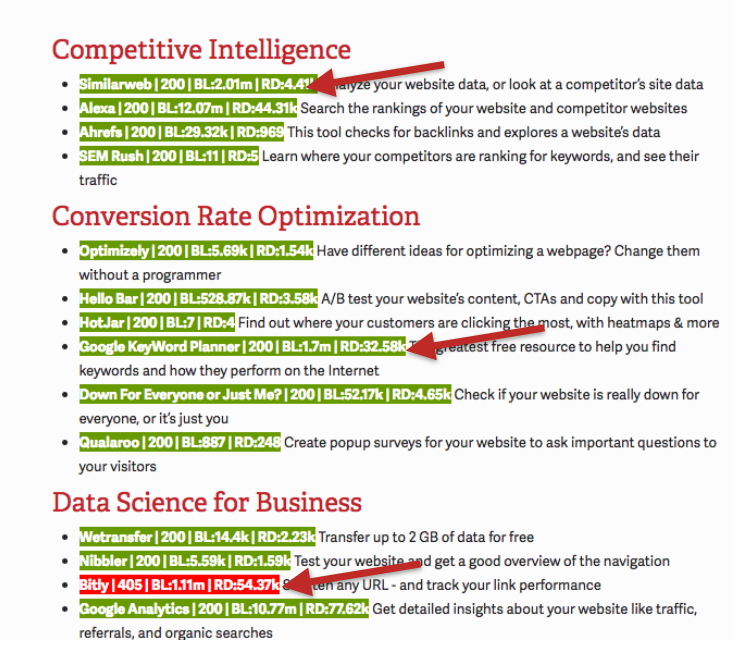
Although the data is based on Ahrefs API that you must set up if you’re a subscriber of the tool, that little change you’ll add to your link prospecting process is highly worth your time.
2. Tap Exclusive Linkable Markets
Linkable markets can be separated into two divisions: inclusive and exclusive.
Inclusive markets are more receptive to outreach emails than exclusive ones, as they’re less often pitched by bloggers and outside publishers (on average, they may only receive ~10 emails daily). These are low to mid-tier bloggers who aren’t yet at the pedestal of their industries but already have a good blog audience and social following.
Meanwhile, exclusive markets constantly receive an estimate of ~100 outreach emails a day (even more to some publishers) that (the act of pitching) unintentionally pushes them to only respond to quality emails.
Examples of exclusive linkable markets are news writers, journalists, and high-tier bloggers.
While there are a lot of opportunities in the inclusive linkable market to capitalize on, it’s also essential to spend time tapping the exclusive linkable market since this is where most authority links may come from.
To get responses and conversion links from pitching these exclusive markets, you may need to have pre-existing connections with them or have an interesting story that can capture their attention to cover your brand on their websites.
But there’s one great tool that can help you secure link placements from exclusive linkable markets - HelpAReporterOut (HARO).
HARO is an email service that benefits both brands and journalists - by providing journalists with sources for upcoming stories and gives brands branding opportunities for their stories to get covered on relevant high-tier industry blogs and top news sites.
Lately, I’ve been spending 20 minutes a day answering queries from publishers and journalists that are all coming from HARO”s daily emails.

In answering press requests, picking topics you’re knowledgeable about and passionate about is imperative. In my case, I only answer office productivity, link building, time management, and teen addiction queries.
To get you started with the process, I highly recommend that you check out this post by Matthew Barby for insights on how to semi-automate, picking relevant HARO press queries and answering them effectively.
For HARO requests you’re unfamiliar with, you can forward them to your client or hire an expert writer from Upwork (I got this tip from Christian Sculthorp) who are knowledgeable on that certain topic of your brand.

This will ensure you’ll get a higher positive rate from publishers likely to include your citation/story in their content.
3. Target Big Interest Areas in the Blogosphere
The blogosphere has evolved throughout the years in terms of the number of online enthusiasts from different industries who are building their personal and corporate brands.
Outside of the tech world (where huge blogs are stunning in numbers), there are indoor and outdoor enthusiasts alike, travelers, foodies, and DIYers who can link to external recommended resources.
Creating content assets that will serve these big interest areas can give you higher chances of building and earning links from the linking enthusiasts.
For a plumbing client, for example, you can produce an instructographic targeted to DIYers that shows how to fix simple plumbing stuff at home.
Brainstorming a little further can give you ideas that can serve your city's homeowners well. This may be unwise from a conversion perspective (as to who would buy from the market if you teach them DIY guides), but for link acquisition purposes, this is highly practical to target if you consider both quantity and quality.
Moreover, the impact of social shares and natural links garnered from link bait content can translate to more linking opportunities from direct linking enthusiasts and other industry markets to generate new business leads.
John Doherty, for instance, is a search marketing specialist (founder of Credo) who has tapped big interest areas such as travel and productivity since these topics align with his interests and passion.
With that mindset of tapping big interest areas, he acquired editorial links from top-tier sites using HARO.
If the industry you’re in is too boring from a content marketing and link building perspective, try to come outside your market and check if there are peripheral interest areas close to your niche.
4. Generate Content Ideas from Niche-specific Podcasts
In this age of the web, pretty much everyone regularly consumes information through video or audio, not just entertainment content.
The idea that time is a valuable asset allows people to consume content while acting on other things (i.e. while driving) to make every second/minute productive.
Podcasting, for example, is becoming mainstream, as everyone in every specific niche is starting to build their own personal brands to capture as many audio listeners as possible who might be potential customers or clients shortly.
If you’re stuck with what content topics/themes to create for a specific industry, checking or listening to the latest industry podcast series, where that so much valuable information in store, can be extremely helpful in generating niche-specific content ideas for your brand.
For example, this Inside the Mind of Teens and Tweens podcast (searched from Podcast Addict) has 118 podcast episodes (the current number of items in Itunes) that are educational in nature with a targeted audience composed of teachers, parents, and counselors. 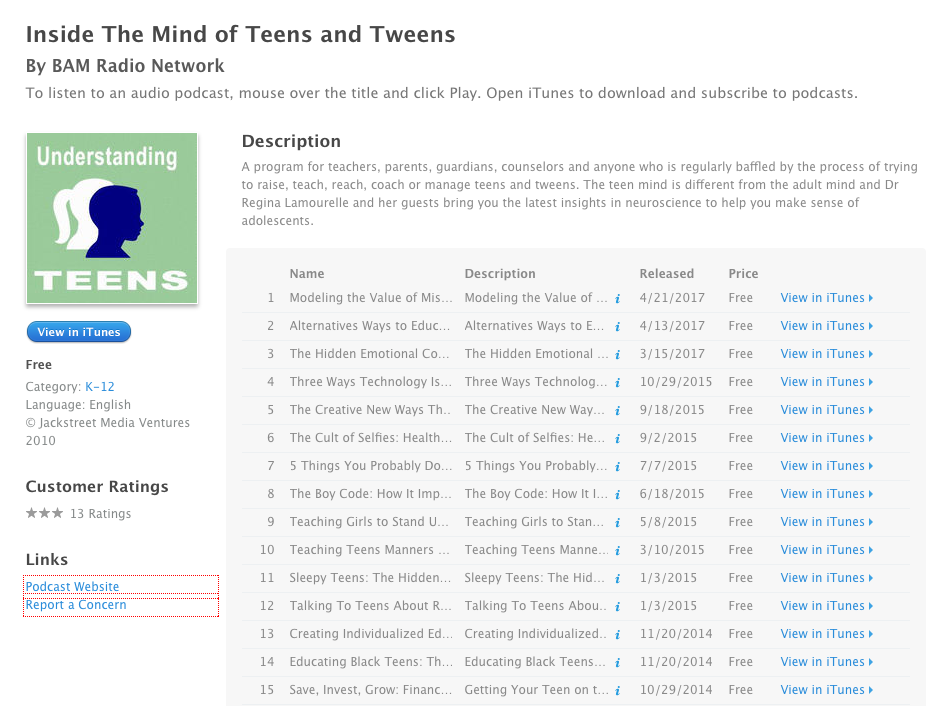
If you’re in the neuroscience space, you can generate some content topics here that can be brainstormed and picked for a linkable content asset.
You can research if there’s linkability in keywords found on these episode topics to ensure enough linking sites to market your content to.
Grab and check some and assess if there are considerable linkable markets by checking each ranking page’s unique referring domains.
For instance, the “sexual health” keyword (derived from one of the episodes above) has hundreds of linking opportunities to the most ranking pages for that search term.
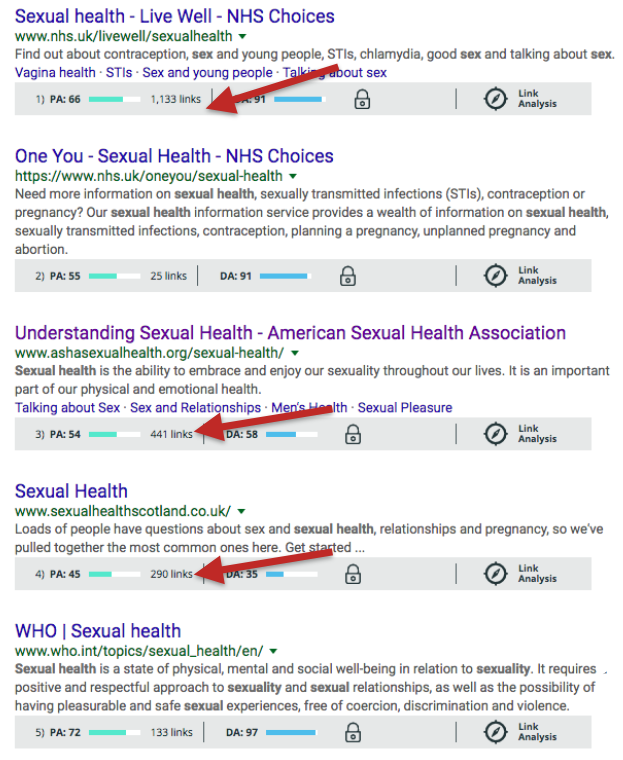
If you’re taking linkable content creation campaigns for clients, that approach is a good practice to take on to semi-automated content brainstorming process for their websites.
How to Reach Out to Linkerati?
After completing your initial list of link prospects, the next step is to strategize how you will approach them. It’s vital to know how they behave as linkers to customize your pitch better so you can stand out among all the pitches they’ve received multiple times a day.
Here are some actionable ways to improve your outreach pitches by 5% better to see greater link acquisition results:
1. Identify Who Handles and Controls Pages
If you are doing large-scale link outreach campaigns, you probably have stumbled across many websites where the webmaster doesn’t have the authority/decision to update the page. Some of them are only capable of fixing errors on any page of the entire website, but they have to put another person in the email conversation to decide whether or not your link can be included in their resource page.
Linkeratis in most .edu websites strictly decide which resources to include in their pages - that means that it’s not a guarantee that you’ll acquire a link unless they’ve seen your content piece as a valuable reference for their audience.
Asking the person up-front (like saying, "Can you forward this to the right contact person?") if you’re unsure whether the email you’re pitching to will respond is a subtle tactic to consider when doing the initial pitch.
Emails like services@domainname.edu may connect you to a career service representative or admission department staff of a .edu site but not to the tech/admin person who handles the resource page you want to get a link from.
Meanwhile, if you receive responses that let you forward your resource suggestions to a certain person, creating another message with a subject line where you got his email is best.
For example, I’ve received this response from a .gov agency staff that I pitched, which she (the person I emailed with) includes an email of the right person to contact.
Below is an example of a little addition to the common approach of forwarding the email but it’s one effective way to let link granters (the ones who update resource pages know where you got their emails.
 We’ve acquired a .gov (DA89) link (not bad for a quick content suggestion email).
We’ve acquired a .gov (DA89) link (not bad for a quick content suggestion email).
B. Provide Shared Mission and Interest in Outreach
Knowing the value proposition of your content up-front is an important step to better position your email in front of your potential link targets.
But more than just sharing your content’s value proposition to your outreach prospects, defining your shared mission with them is imperative.
For example, this resource page in the small business sector covers different recommended tools and resources that provide information for startup entrepreneurs.
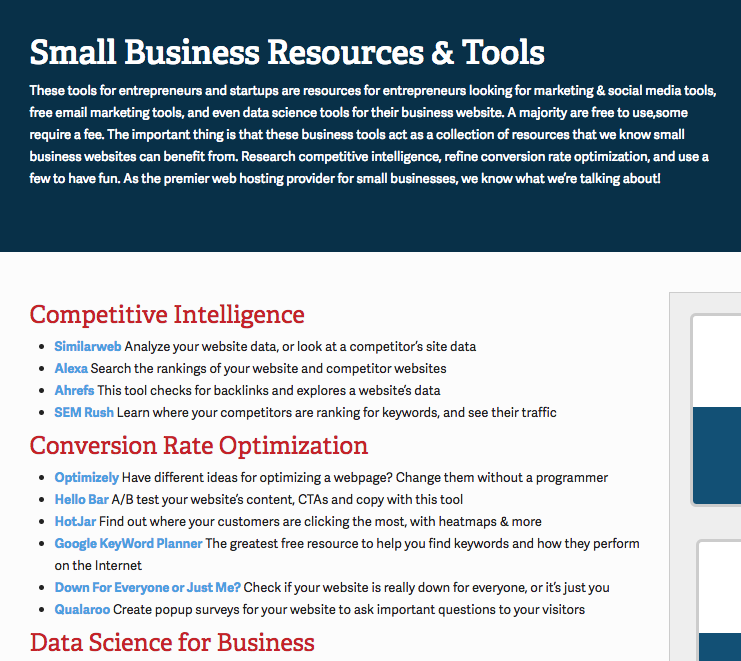
Besides checking the relevance fit of our content’s client to their resource page, it’s our own way of simply adding how the content can best help their audience within the same context of their mission.

These simple addition texts to your email can help position your content’s utility to the audience (being targeted by the resource page) and, thus, increases the likelihood of getting a contextual link.
It’s a good idea for industry blogs to compliment their recent article or website only if it’s authentic to say that their blog is well-designed, for example, or if they have given great insights for a particular topic in their latest blog post.
Saying compliments to get responses and links is less effective than making outreach emails as plain and straightforward as possible.
C. Include Outright Content Suggestions in Link Outreach
Little tweaks in an outreach template can make or break the success of an outreach campaign. Far more if these small changes are predicated on actions made by the linkeratis themselves.
For example, you may have come across resource pages that mention their willingness to accept content suggestions for their links pages outright or to email them for any defunct links visitors see for webmasters to fix them by simply removing them and replacing them with new relevant, and updated resources. 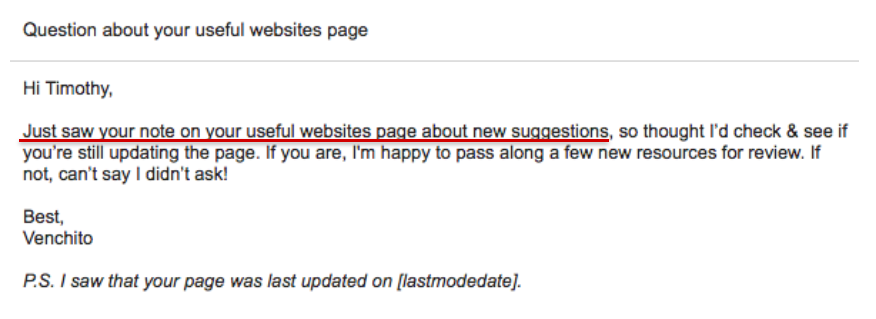
If you remind them in your outreach pitches that those links were stated on their resource page (and they let you tell them to do so), they’ll more likely be positive to your pitch.
While it’s not a guarantee to acquire a link, it’s a differentiator to several link request emails they receive to get a link from that page.
D. Drive Curiosity with Refined Outreach Process
With the inbox flood the industry bloggers and publishers are experiencing daily, outreach pitches need to be refined over time to land more coverage from target blogs/sites.
Quality assurance on email templates for any contextual errors and adding/changing tags for personalization can close the gap between good and great outreach pitches.
But besides these basics (must-have) of outreach, learning the psychology of conversations to secure positive responses can tremendously bring better link results.
SiegeMedia’s outreach team, for example, was able to increase outreach placement rates by 63% by refining their outreach process - which was inspired by Brian Dean’s outreach strategy on providing custom intros for guestographics.
The refined outreach method of SiegeMedia looks like this:
1. A pitch is sent to the recipient, explaining in 100 words or less what the piece of content is and why we thought they’d be interested. This pitch does not include the link to view, rather says if they’re interested to let us know and we’ll forward along.
2. If response is positive, we then forward them the link to the content. In addition, we offer to write a custom intro to support the post if needed.
3. If there’s no response after forwarding the link, we follow up with the blogger if they’ve gone silent after 3-7 business days.
It’s one way to seek new outreach tactics, but it’s a better way to keep and improve older techniques that can also apply not just to one specific content asset (infographics, for example) but also to other content formats that might obtain the same or even better results.
Linkerati Frequently Asked Questions
Does link building still work?
Yes, link building still works for SEO. However, it's no longer about quantity over quality. Building high-quality and authoritative backlinks is crucial for improving search engine rankings and increasing organic traffic to your website. Focus on earning relevant and valuable links from reputable websites to see the best results.
Is link building good for SEO?
Yes, link building is an effective SEO tactic. Links act as indicators to Google that your website is credible and valuable. Websites with more high-quality backlinks often rank higher in search results. Thus, incorporating link building strategies can improve your SEO efforts and increase your website's visibility.
How does link building work?
Link building involves acquiring backlinks from other websites, which are seen as votes of confidence by Google. This process helps increase your website's authority and visibility in search results. By attracting links through valuable content and earning mentions as a reliable resource, you can enhance your website's search engine rankings and organic traffic.
15 Proven Tips To Get Quality SEO Clients (+Examples)
In this guide, you'll discover 15 tips to get SEO leads.
Actionable.
And these are proven to work for freelancers, consultants, and SEO agency founders.
Let's get started.
What are SEO leads?
SEO leads refer to potential customers who find your offerings or website through search engine results. Discover effective strategies for acquiring and converting these leads into loyal clients in this informative blog post.
How to Get SEO Leads For Your Agency
1. Apply The "Local Courier" Lead Generation Approach
Cold outreach to get SEO leads is effective.
Only if you apply the right approach.
First, you select your target market.
It could be dentists, veterinarians, or HVACs.
Or, if you're offering local SEO services, find local-based businesses.
How?
Start with a Google search.
Everyone who's not ranking well is an obvious choice of prospect.
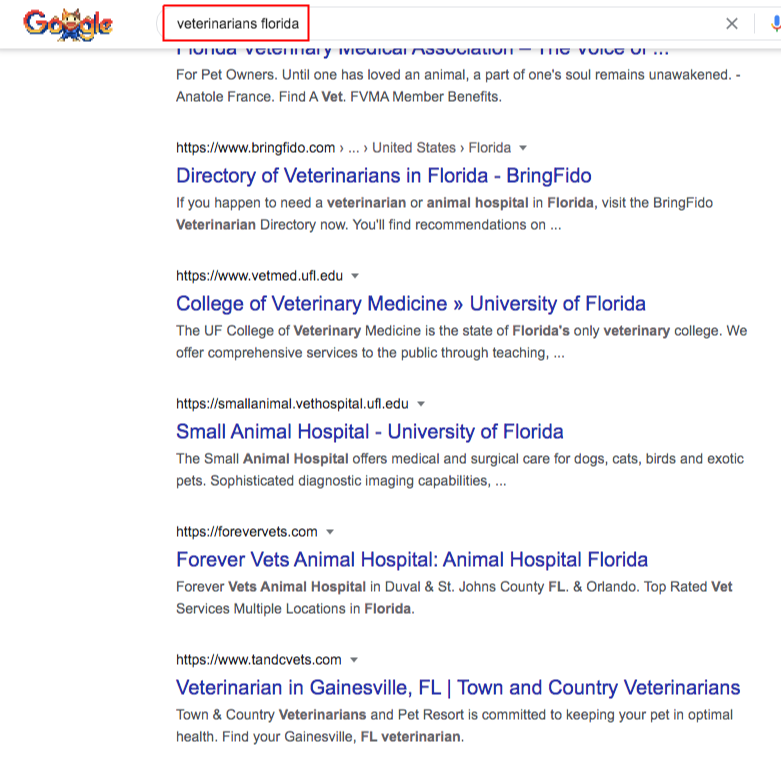
Another technique that you can do:
Use Ahrefs' Content Explorer to discover potential clients.

Filter for websites that have DR 1 to 15.
Then check "One page per domain" and "Exclude domains" to reduce the results.
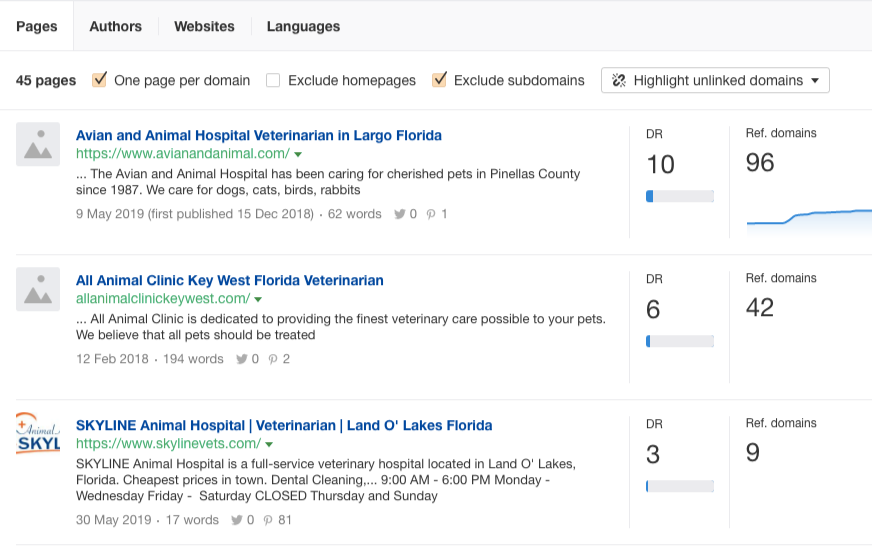
Export the list.
The second step is to analyze the website.
Provide a quick summary of the business is current position against its competitors.
From there, you create the proposal.
The last step is the most creative part of this cold outreach approach.
Instead of you sending the proposal to the prospect business email...
Have a courier or any delivery service (e.g. FedEx) to send it to them.

Include a note in your intro letter saying they have to call you on a particular day at a specific time.
Do a follow-up if you don't receive any call from them.
2. Include "Customer Success Stories" In Cold Outreach
Want to triple results in cold outreach?
The strategy:
Show customer success stories in your emails.
Your potential clients want to know if you can deliver results.
And the best way to have it is by creating case studies.
HipLead increased their conversions by 208% by mentioning a famous customer in one of their sales emails.
For your SEO services, invest the time to interview one of your clients to get results for their website.
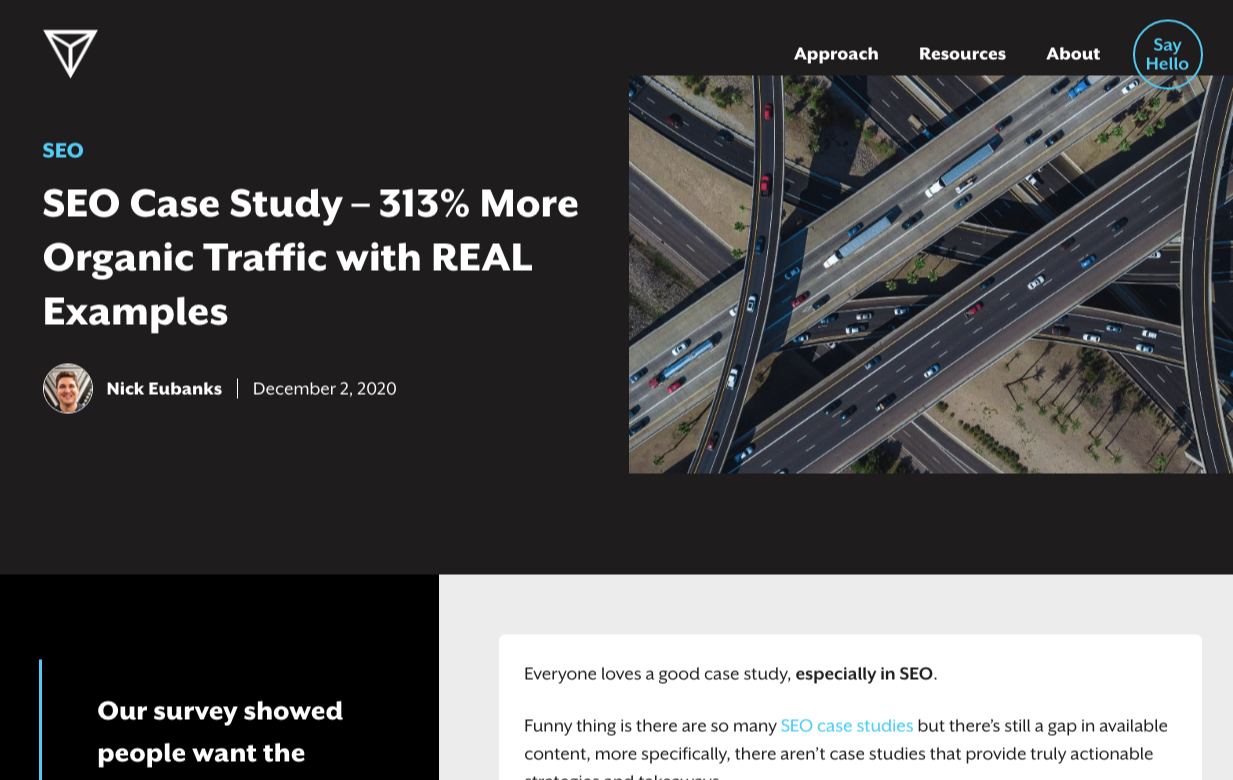
You can use Case Study Buddy to help you with this one.
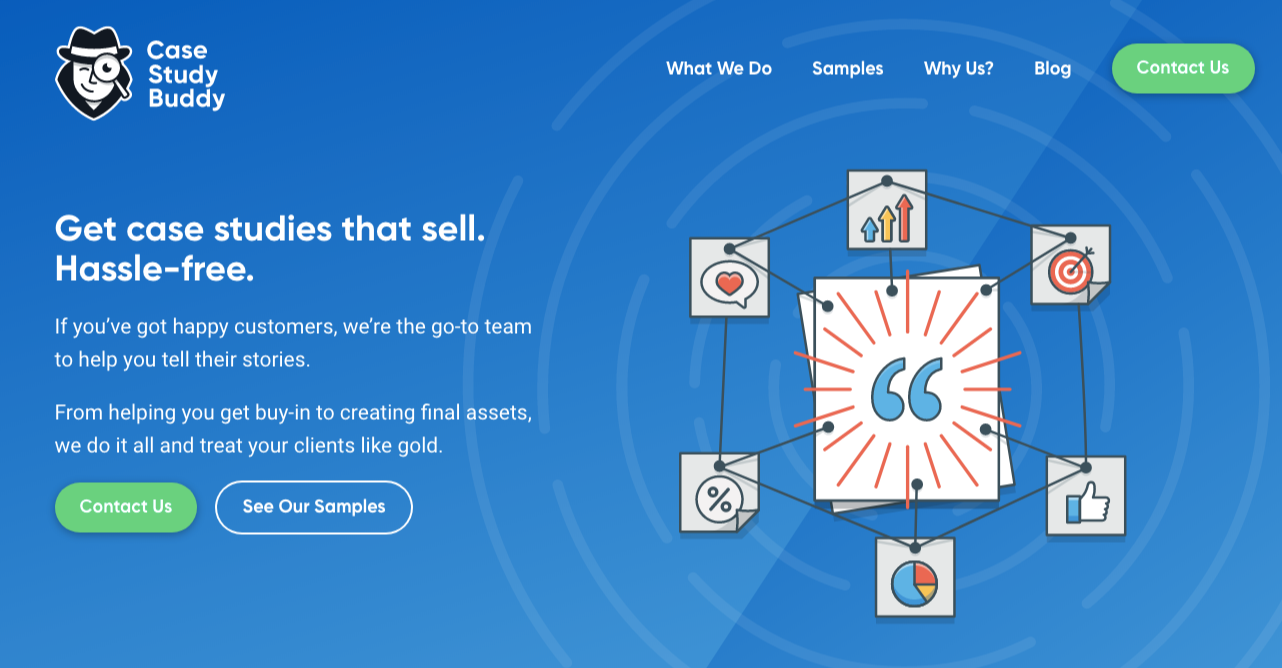
The next step is to include a note in your cold outreach email.
Something goes like this:
"One of our clients, [Client Name], was able to [Results] because of [Your Service]. What would those results mean for your business?"
If no response, send follow-up emails.
One of your follow-up email sequences includes asking them to take a strategy call with you.
This is when you put on your "consultative hat". You ask questions to get to know about their business.
Engage them, and help them set a roadmap to get their SEO to the next level.
3. Specialize With Your Core SEO Strengths
Target a niche market.
There are three advantages when you are serving a specific group of people with your SEO services:
First, you get more inbound leads for your website.
Potential clients will see how specifically you address their lead generation problems through SEO.
Instead of an "SEO services" landing page, you publish a "Dental SEO NYC" page.
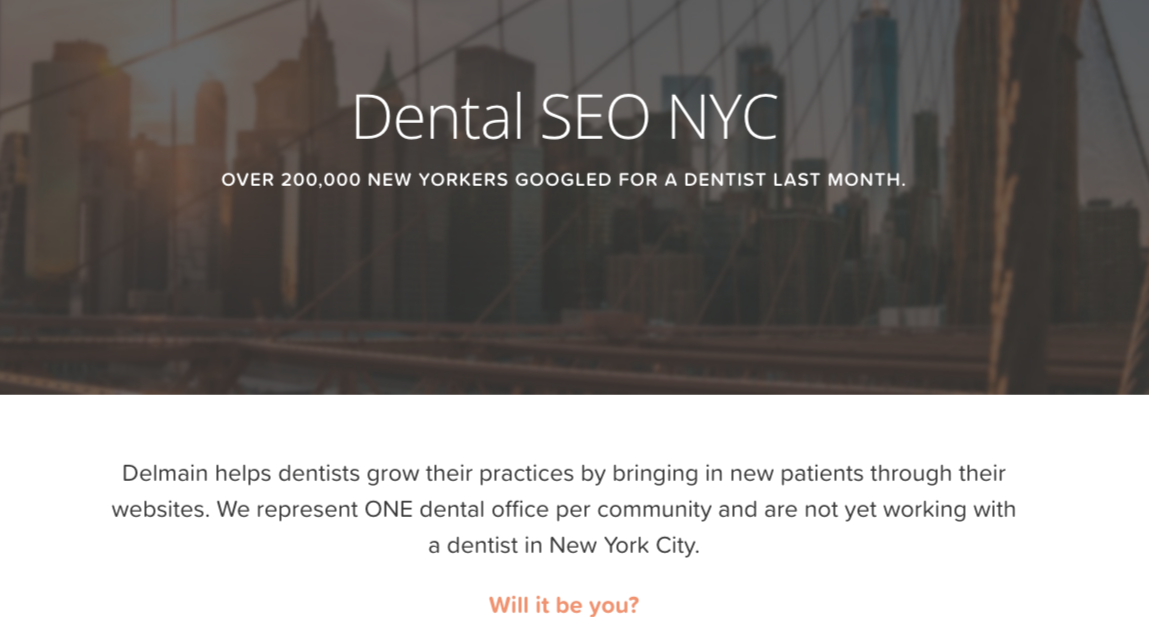
The message holds for the copy on the site, blog posts, social, and other branded assets.
Second, you establish solid internal processes.
When you constantly create an SEO plan for a specific target market, you can easily duplicate the framework or list of tasks.
The scale of information and your internal knowledge processes can help produce consistent quality results for your clients.
Best for your team. You now have documented processes they can rely on to provide client deliverables.
Third, you expand networking opportunities.
If you know what vertical to target with your SEO services, you can go to niche-specific conferences/events.
This is where you can build relationships with your potential clients.
Getting SEO leads this way becomes easier as you're not simply pitching your SEO services but understanding their problems, struggles, challenges, and industry.
Here are some examples of niche-targeted SEO agencies:
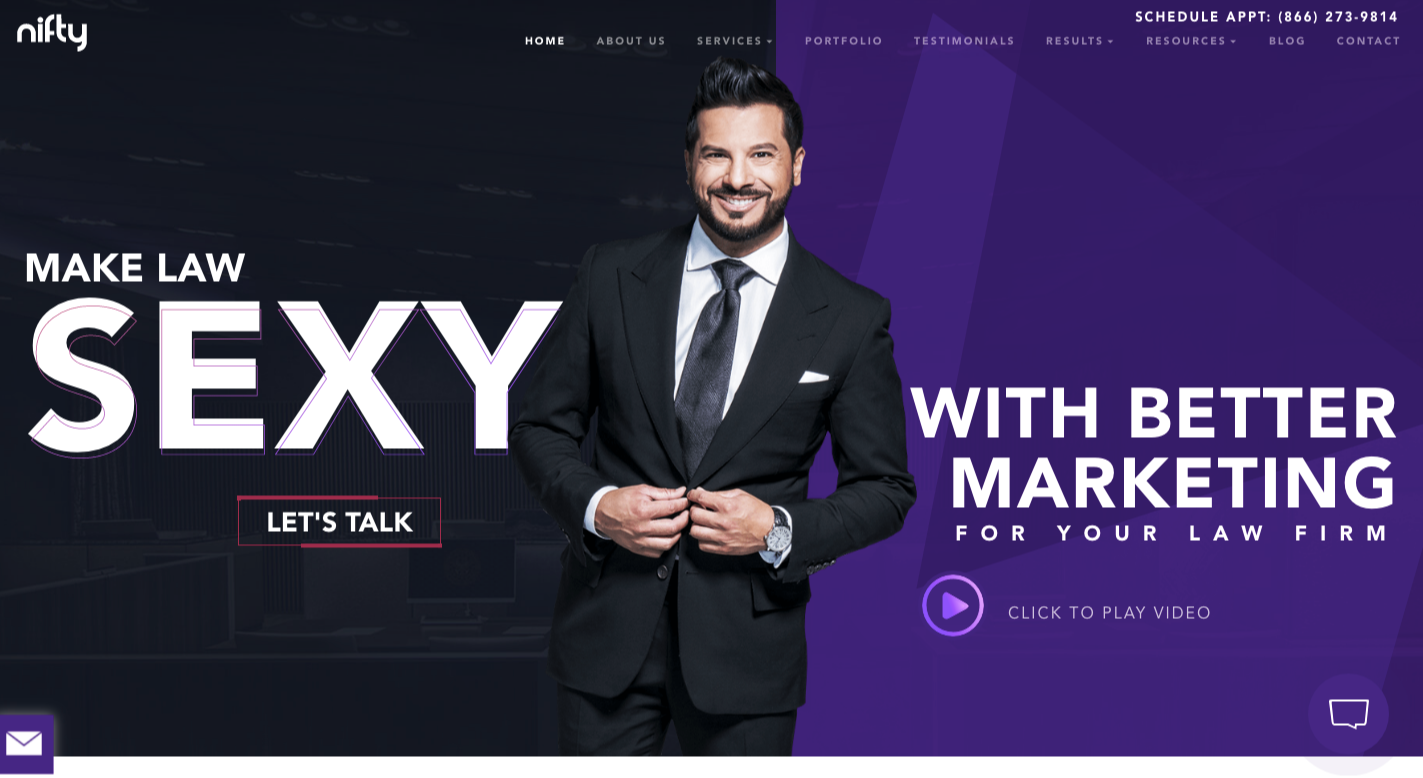
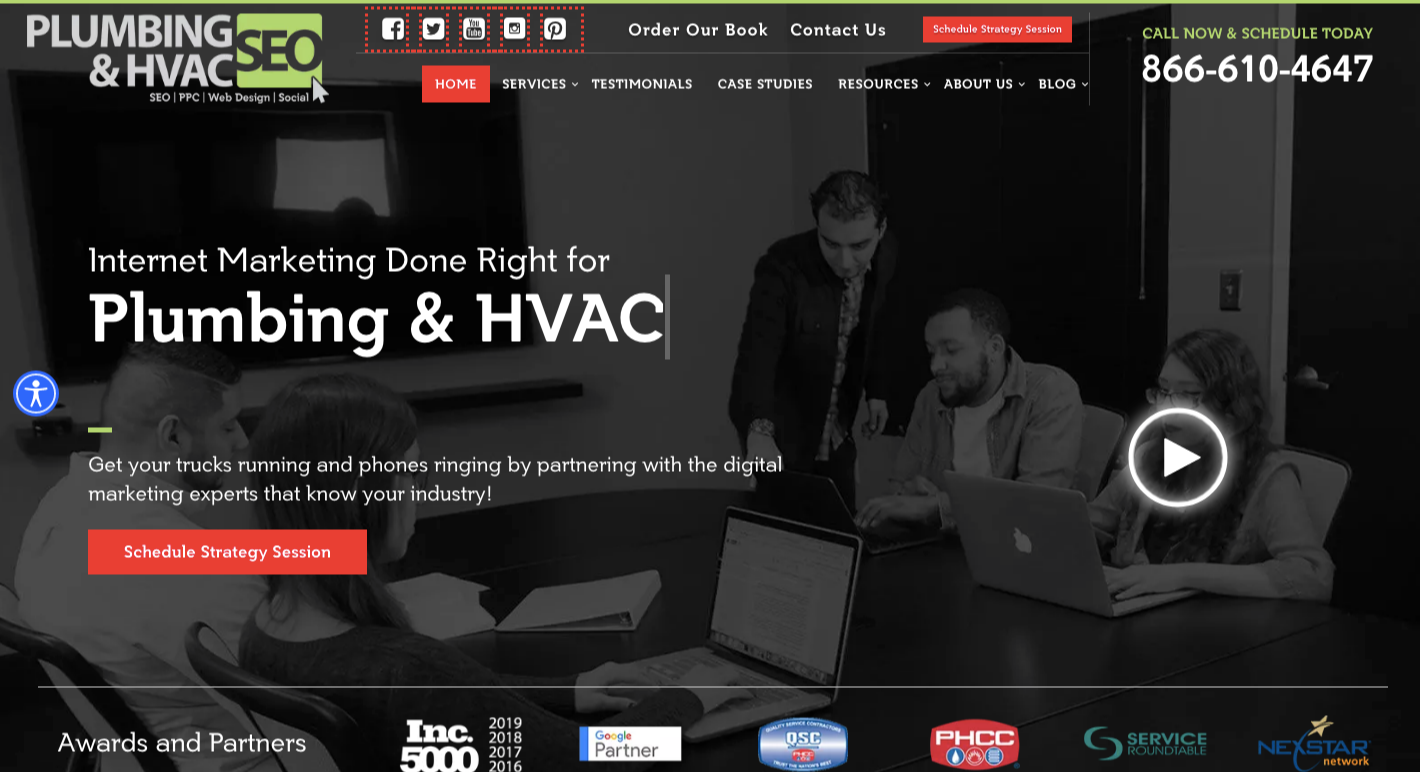
Below are some tips to help you identify what niche market you want to specialize in:
A. Start with your core SEO strengths and experiences.
Most successful specialized SEO agencies started getting clients from their past jobs as in-house SEO or enterprise-level digital marketer.
When you invest in working relationship capital, it will pave a long way for your SEO business.
Reason?
Your past colleagues will remember you and can pass along potential clients to you.
B. Identify which type of client/market gets a high consistency level of results
Many SEO agencies start by saying "yes" to all available opportunities, including all potential clients.
You don't choose which client to work with; you accept clients as long as they have the necessary budget for SEO.
From time on, you get as many clients as maximum as your capacity.
As you grow your client base, you now start thinking about the SEO campaigns you've handled.
Then you assess if there are any markets you've consistently been providing results with your SEO work.
C. Check what client types/industries you like.
Interests can be a good factor in determining what industry you'll specialize in.
The reason?
The more your interests grow, the more you can discover new opportunities to develop your SEO client campaigns.
You can find a similar scalable content creation and promotion strategy through manual outreach.
Which would help you deliver outstanding results now and then.
4. Send Custom Videos In Emails Using BombBomb
You get deals closed with clients if you demonstrate value to them.
And the best way is:
By showing how you'll help them increase their bottom line as businesses.
Instead of sending a sales pitch.
Like what anyone else is doing.
You show that you're a real person through video.
You record a video using BombBomb (which plays a quick GIF-style clip).
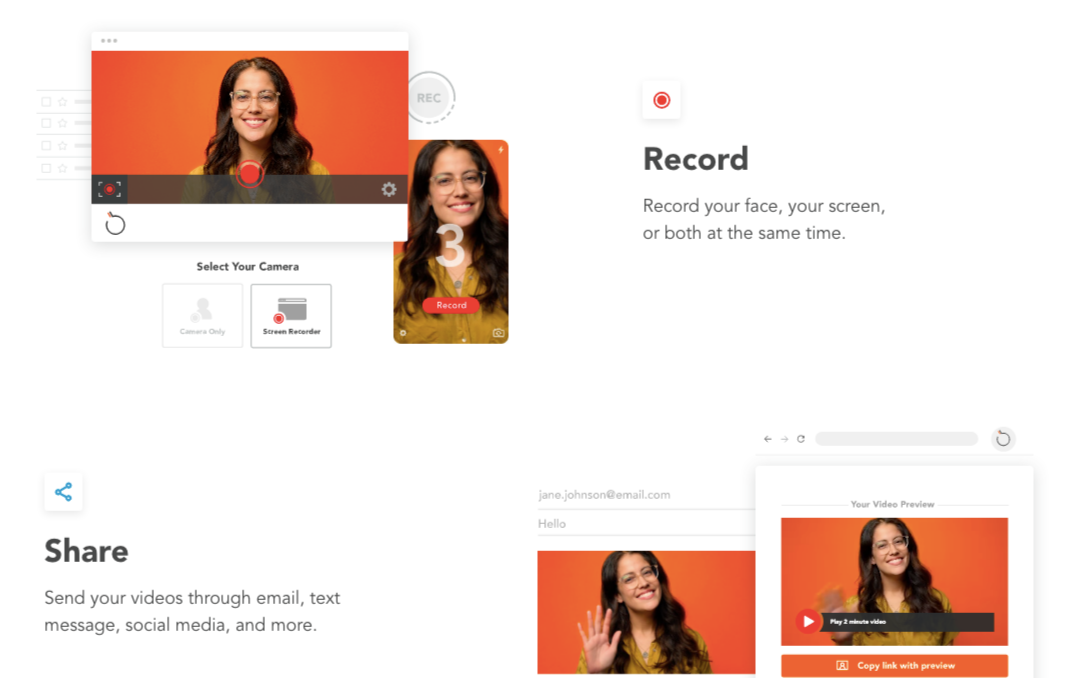
In that video, you include:
The opportunity/problem they're facing.
Data explaining why SEO is a good channel for them.
Who you are and your value proposition (your credentials, client case studies, etc..)
What you can do next with their website.
Once you recorded the video, include it as part of your email.
And one more thing:
You can link your outbound prospects to a relevant Facebook video to your pitch.
Then create a custom audience on Facebook Ads for people who watched it.
Retarget them with helpful videos and case studies to get them through your sales pipeline.
5. Organize Branded Local Meetups
Somebody says this best:
If you're not networking, you are not working.
It's good to attend industry events to meet entrepreneurs whose primary need is lead generation.
But there's more leverage when you organize local meetups.
Conduct your Meetup to establish a brand.
While at the same time, build relationships with your target clients — e.g., eCommerce entrepreneurs.
Search Meetup and other networking sites for relevant meeting groups.
You may want to attend any of those meet-ups to see how they conduct sessions.
Then, create a strategy for how to come up with your local meetup.
SEO Sydney Mastermind by James Norquay
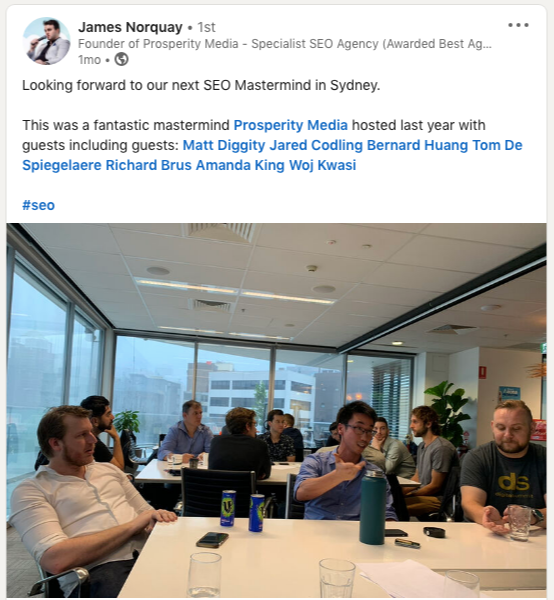
PeepCon Philippines By Glen Dimaandal

6. Educate SEO Leads With Evergreen Blog Assets
Educating is the best way to sell.
To move further your prospects.
From an eyeing client to a closed deal, you must give them value upfront.
The way to do that is to publish content assets that will be useful for them.
How is that possible?
First, think about solving the problems your potential clients may have.
It is best to make a profile of the exact customer.
Are they a business owner, marketing director, or in-house enterprise SEO specialist?
Next, if you already specialize in selling SEO services, either on a core SEO strength (e.g., link building services) or market segment.
You may now have an idea of what topics to write about.
For example, link building guide for lawyers.
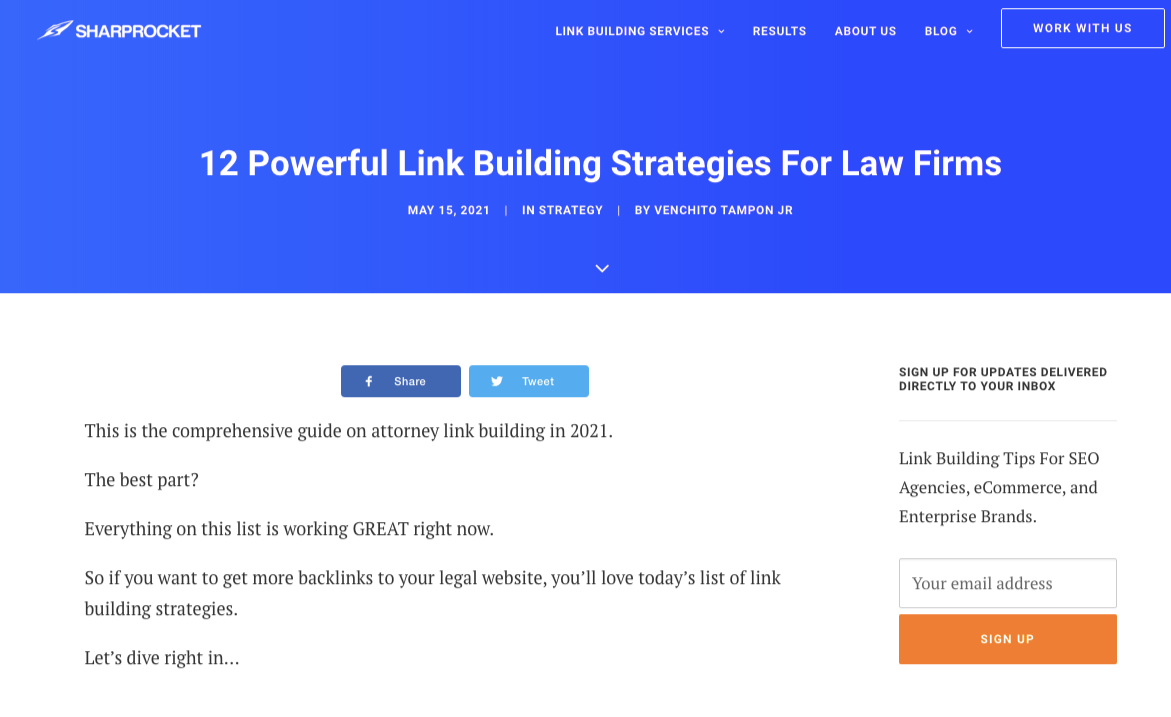
Consider the best format and style of content.
For instance, we publish evergreen content assets here on our link building blog.
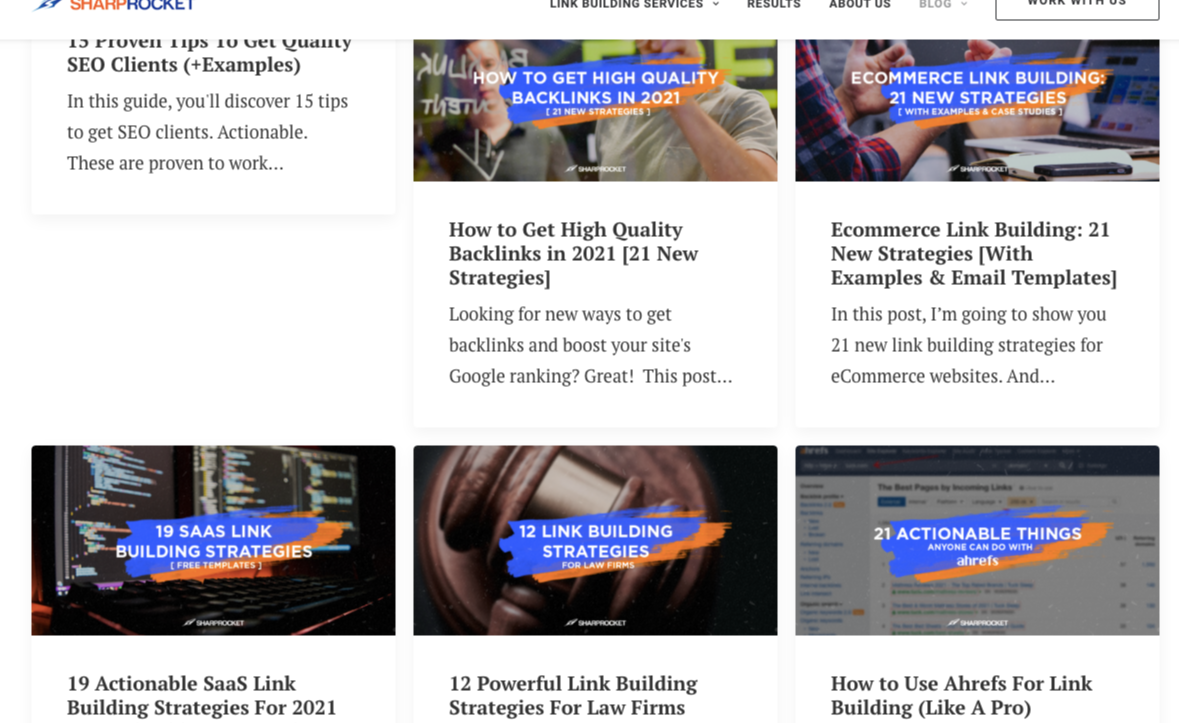
The reason is simple.
We know that months or years from now, those guides will still be relevant to our target audience.
Plus, this type of content will eventually rank and drive leads to our business over time.
One variation you can make with your content is case studies showing successful SEO campaigns.
Sharing results, would prove expertise in your industry.
You may also look for frequently asked questions in SEO communities and forums.
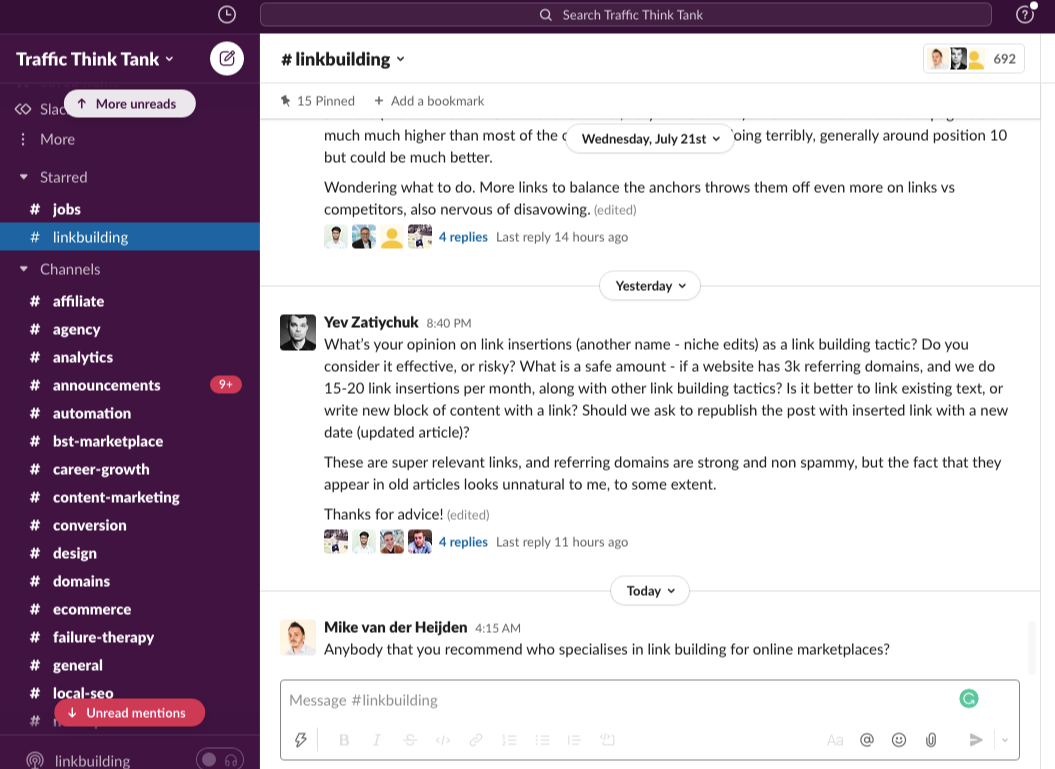
Answer them through your blog posts as reference points to help leads and email subscribers with their marketing challenges.
7. Use "Growth Manager/Specialist" As Sales Position Titles
If you have salespeople:
One technique you can test to win good deals is by changing "sales position titles.”
Some potential clients do have resistance when they see or hear "sales" from pitches and emails — while that would require that you test it out if it's true on your end.
So instead of putting "Sales" in the title, you can use something like "Growth Manager" or "Growth Specialist.”
See for yourself.
8. Create Strategic Partnerships With Non-Competing Agencies
Business development is crucial to growing your SEO agency or consultancy.
Knowing who to partner with matters, and growing based on those relationships can help you get more inbound leads you wouldn't otherwise expect.
One strategy here is to partner with non-competing businesses.
For example, if you're selling SEO services, consider partnering up with:
Web development firms:
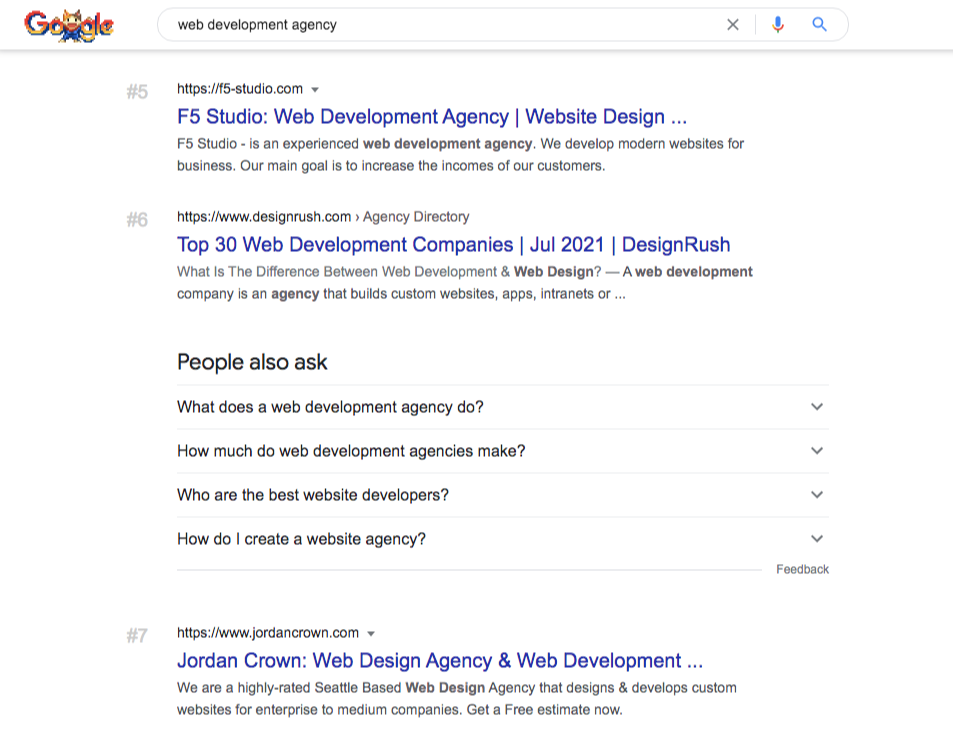
PPC agencies:
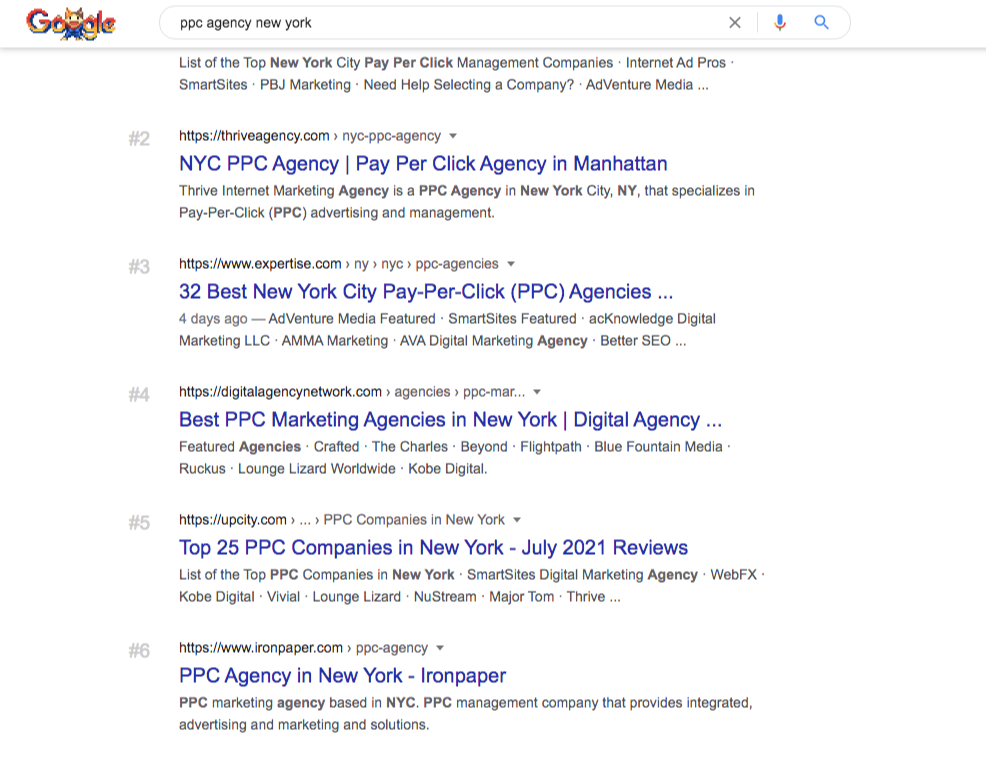
Branding agencies:
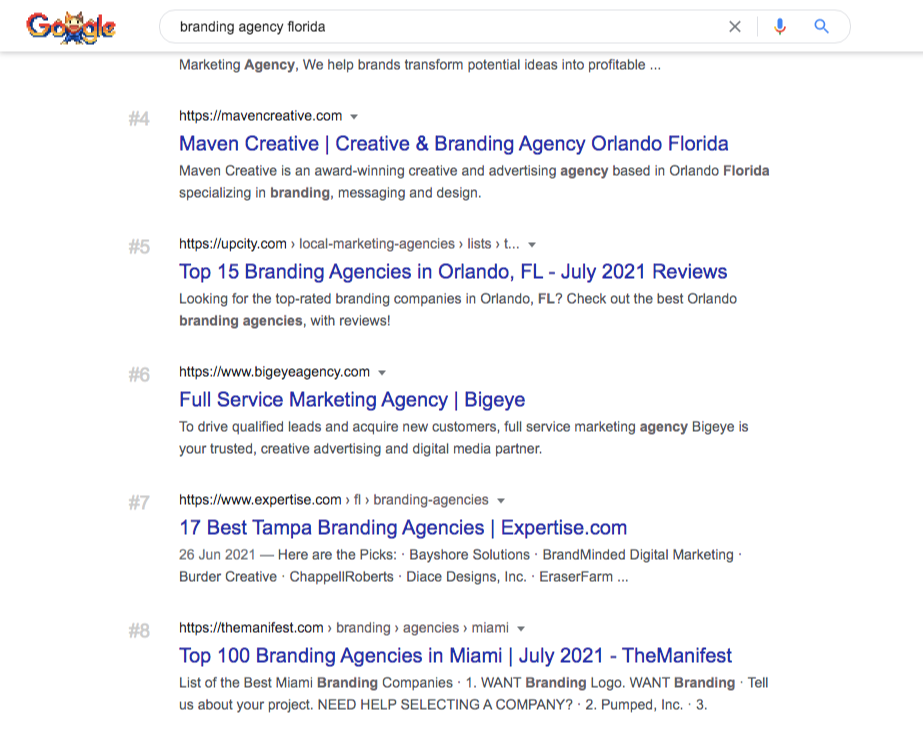
Because both of you offer different but complementary services, you get the mutual benefit of passing along clients who might need the service the other party offers.
Create a plan that mutually benefits you and the other party.
Reach out to them and let them know of your partnership deal.
Then get a constant stream of inbound leads by doing this.
9. Set Up a Referral Program For Employees
Not only you'll get SEO leads from outside.
But from people inside your company (your employees) who will refer new business opportunities to your SEO agency.
Set up a referral program for your employees.
Decide on your payment structures.
Either on a percentage level:
For example, some SEO agencies give 10% on any retainer clients for up to 6 months.
Or a 10% revenue share for the first year of the contract.
Or a subsequent percentage: 10% the first year, 8% the second year, and 5% the third year.
Other SEO agencies provide gift cards or vouchers to employees who refer new clients to them.
10. Invest In Agency Sourcing Platforms
Some websites match businesses with their potential outsourced SEO agency or consultants.
One good example is Credo.

They introduce pre-vetted and verified digital marketing providers to businesses and individuals.
With their Lead Networks Access for marketing agencies, you'll get notified of leads you access to.
If you're consistently looking to grow your SEO client base, consider joining the Credo list of verified agencies.
11. Protect Your Greatest Salesforce
Do you know who your greatest salesforce is?
It's not your salespeople.
It's your current and past (satisfied) clients.
Other SEOs take for granted their clients.
How?
By not providing the results and not protecting their interests.
Even beyond SEO.
Building trust is more than half of the battle.

You're still part of their radar whether they stop getting your services for some reason.
They can get back to you for future potential projects or refer their networks in need of your help.
SEO isn't known for the highest ethics.
But if you are ethical and can earn and keep respect from clients, especially for industries that sell professional services, like law and finance.
You get more business from it by protecting your greatest salesforce — "trust.”
12. Attend and Speak At Events
Thought leadership is one of the highest leverage to get more SEO leads.
Because you're demonstrating expertise while at the same time building relationships with people who might need your services later on.
How can you practice thought leadership?
Two ways:
Either you attend events.
Or speak at events. Get invited or pitch to organizers looking for potential speakers.
Public speaking can become your biggest driver of new clients with no prior connection with your SEO business.
Start small with local meetups, dinners, lunches & learns.
Either speak to an audience in the SEO or digital marketing space:
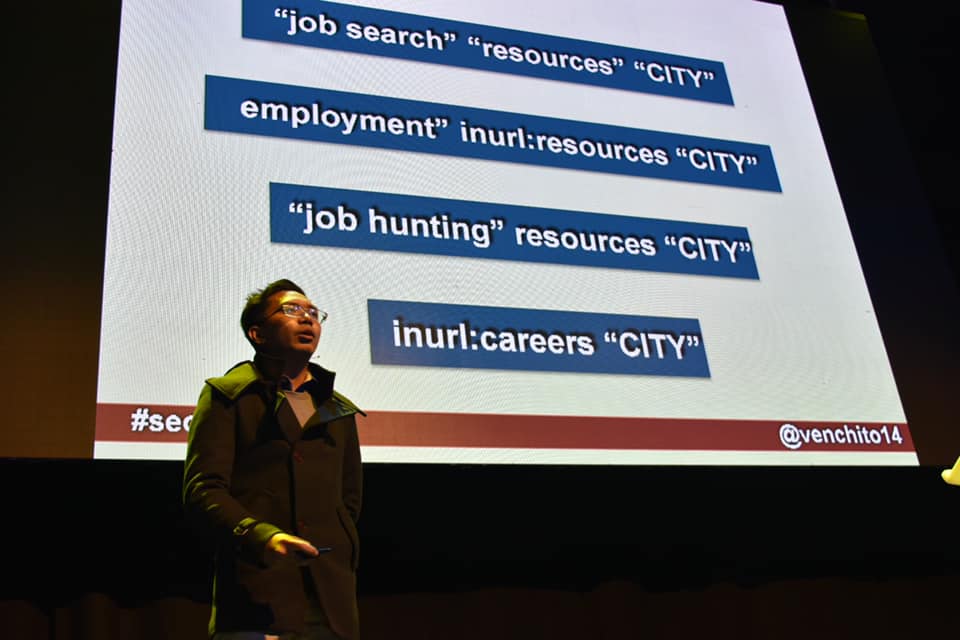
Or to entrepreneurs in a specific market.
When you speak, you position yourself as an expert.
It solidifies your credibility.
As your speaking grows, your business grows as well.
More prominent organizations will come knocking to get your services.
13. Use Application Funnel As A Lead Qualifier
Marketing funnels are effective in getting your leads to go through a process of learning about your business.
As they move from one step to the next, they get to see what your agency or consultancy can offer to them.
One marketing funnel that's been effective for high-ticket services (>$1500) is:
Application Funnel
The flow goes like this:

You show people a pure value webinar.
Million Dollar Agency Webinar by Dev Basu
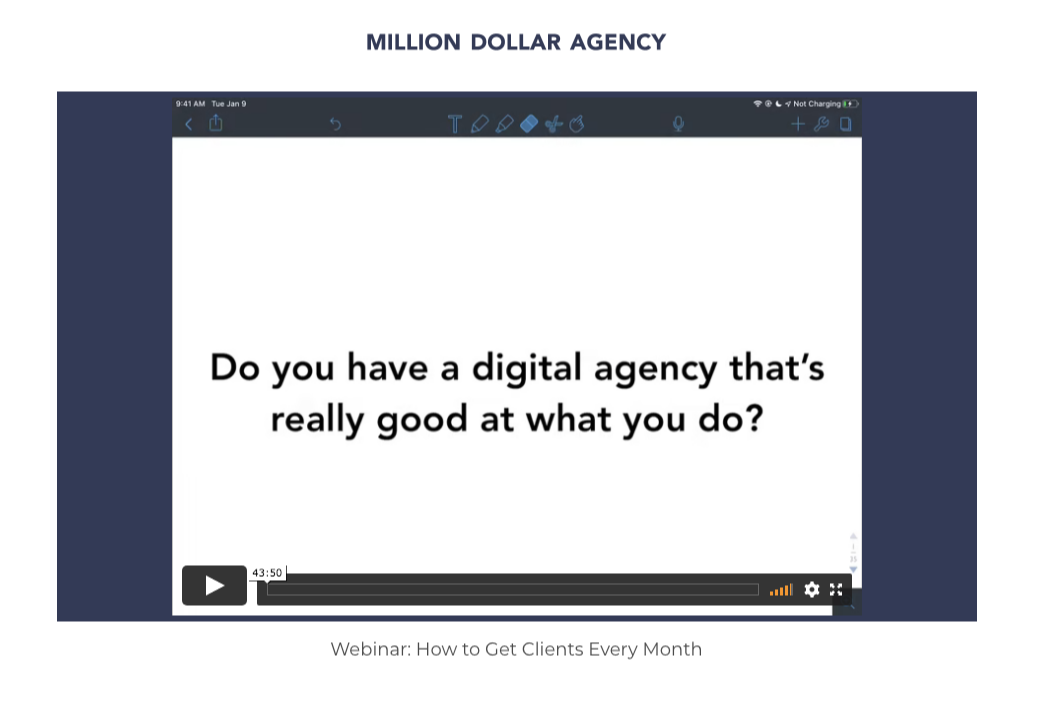
After watching it, they would go through an application process to see if they're a good fit for your business.
Instead of chasing these potential clients, you can control which client you'd like to work with.
At the end of the application (if they seem to fit your target customer), they can schedule a strategy session with you.
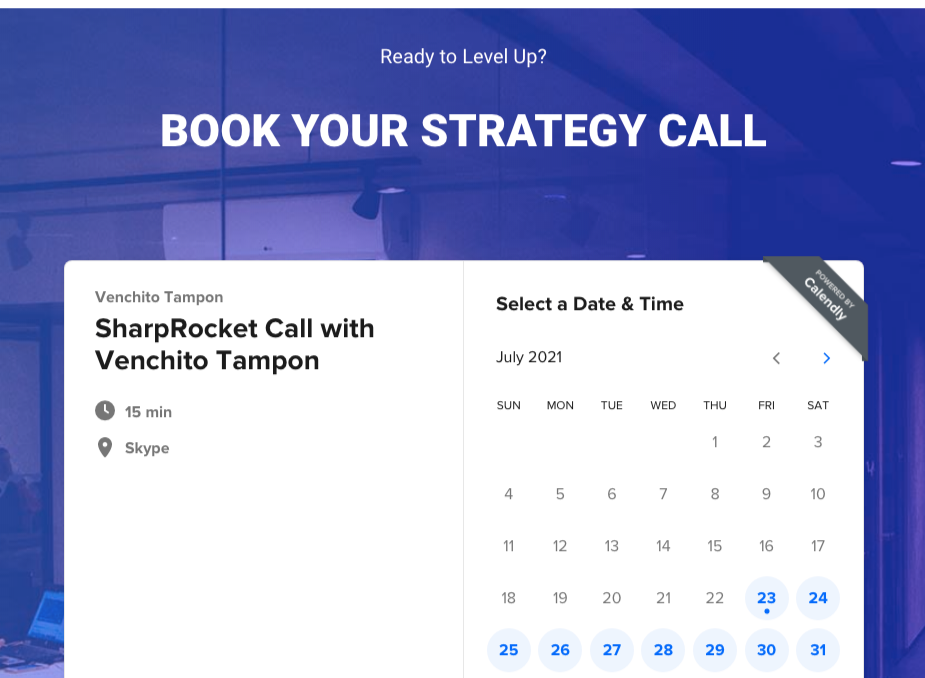
During this session, you walk them through your framework for moving their business to the next level regarding SEO.
From there, you may send a proposal that suits their needs.
Then have the next meeting if everything goes well on their end.
Client wins.
14. Develop A Win-Win Referral Program For Existing Clients
External commissions are best.
But add more — internal commissions.
Set up a referral program for your existing clients.
Ensure it benefits the referee (you) and referrer (client).
Either has a specific payment structure:
Percentage model — 10% bonuses towards the retainers (based on the new client's contract value).
Or have a higher rate but with a shorter length — 20% of the monthly retainer for the first three months.
Some agencies have complex computations:
10% on month 1, 5% on months 2 to 6.
Either of these options works.
You should decide on a commission structure that best suits your model.
15. Apply "Strategic Linkedin Engagement" Strategy
Linkedin is an excellent place to get SEO leads.
Not that you spam any potential client with your pitch.
But with a strategic Linkedin engagement strategy.
The tactic goes like this:
You add connections from a few juniors from the potential client (company) you want to pitch.
Then add the senior contact (manager, director, etc..).
That way, your connection request appears that you know a few that are part of the organization.
You can simply just jump in and send a short message to connect to them.
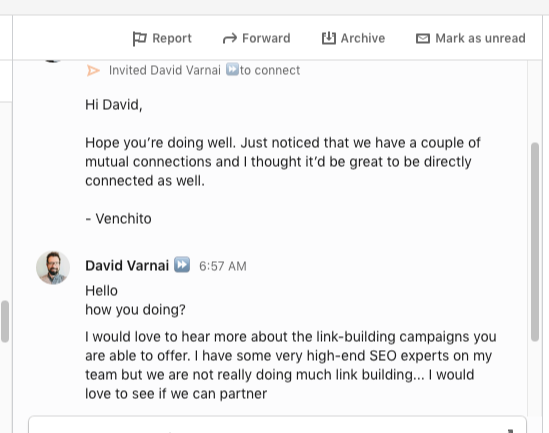
Bonus #1: Strengthen Your Current Networks
Your networks are critical to your success.
That includes your past workmates who have gone in-house in different companies.
Given that they know you when there's a need for SEO from their respective, you are one of the first people they'll have in mind.
This takes time.
So you need to hustle and always be connected with your past colleagues.
Strengthen your networks as you work in and out of business.

Bonus #2: Give Value Natively On Social Media
Social media shouldn't be an environment for spamming people with your services.
It's a marketplace value.
Therefore, you should know how to create content (posts) to add value to your target clients.
You can follow great companies publishing great Linkedin posts.
Like Gong:
And Ross Hudgens of SiegeMedia:
And see how they accumulate followers, and expand their reach through high-value content.
Your Turn
Which tip you'd like to try first?
In your next cold email outreach, will you include "customer success stories"?
How about setting up a referral program for your employees?
Let me know in the comment section below.
SEO Leads Frequently Asked Questions
How do I get leads for SEO?
To get leads for SEO, you can leverage various strategies such as optimizing your website for relevant keywords, creating quality content, and building backlinks from authoritative websites. Additionally, ensure your website is user-friendly, mobile responsive, and has clear call-to-actions to encourage lead generation. Regularly track and analyze your SEO performance to make data-driven optimizations.
What is SEO and how it can help generate leads?
SEO plays a crucial role in increasing web traffic, while lead generation aims to attract potential clients to your business. Integrating SEO strategies can be advantageous as it enhances brand visibility and organic traffic to your site. By optimizing your website, SEO helps generate leads by driving awareness and attracting potential customers to your offerings.
What is an SEO in a company?
An SEO in a company refers to the practice of optimizing a website to improve its visibility and rankings on search engine results pages. It involves various techniques to increase organic traffic and drive more potential customers to the website. Implementing SEO strategies can greatly benefit business owners by helping them attract relevant traffic and potentially increase their online visibility and revenue.
9 Link Building Strategies That Actually Work in 2025 (New To Try)
Want to maintain your site's rankings with new link building strategies?
Awesome. This list includes 9 link building strategies you probably haven't tried before (if you're a beginner).
Plus, new ways to attack old link building strategies like guest blogging (for intermediate and advanced SEOs).
With more than 10 years in the SEO industry, our team at SharpRocket has secured 10000+ links across different industries for different sizes and types of websites.
Now, if you're ready to see these actionable strategies worth trying in 2024, let's get started.
9 Link Building Strategies For 2025
Curate Industry Statistics
Curate, not create. This means you simply get all the available statistics online, write your key insights and publish them.
Easy to do.
But why industry statistics?
Publishers are looking for reliable, credible references for their content. They want to serve their readers well by giving up-to-date information on the topic they're writing about.
So when they want to cite resources, they do a Google search and find what's applicable from the top-ranking pages. Then they link to the page from their content.
Where do you start?
First, you have to find what people are searching for. What topics do they typically want to make as references for their blog posts? You start topical research.
One of the best ways to discover topics for statistics is by reverse engineering top publications in your space.
For example, Healthline is an authority site in the health and medical niche.
So if I want to see what statistics they published, I'd go to Ahrefs, enter their domain, and check "Best by links' growth".
Search for "statistics"; there, you'll see many statistics content.
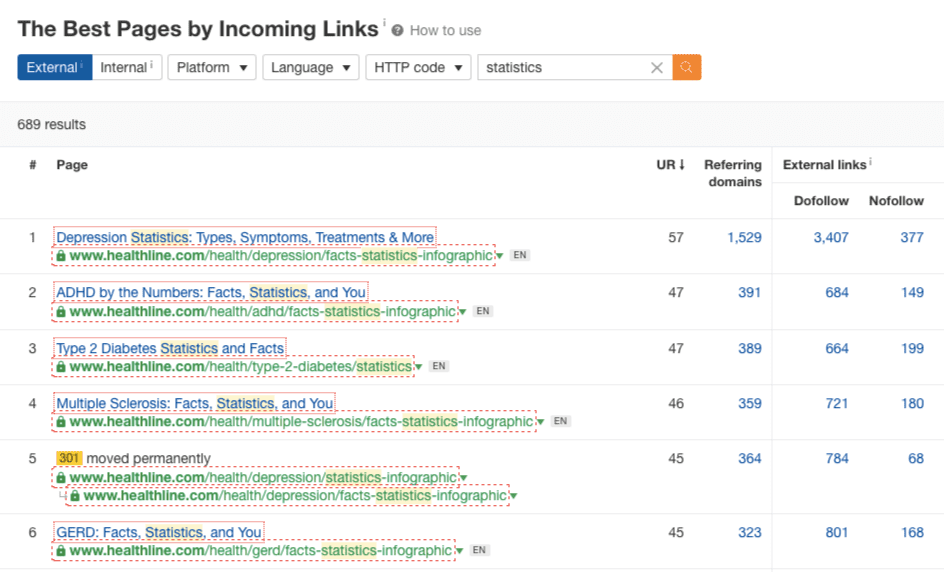
Another topical research strategy is to discover questions your potential customers might be asking in your industry.
For example, most aspiring entrepreneurs would like to know, "how many startups fail in the first year of business?". They do so out of fear of failing.
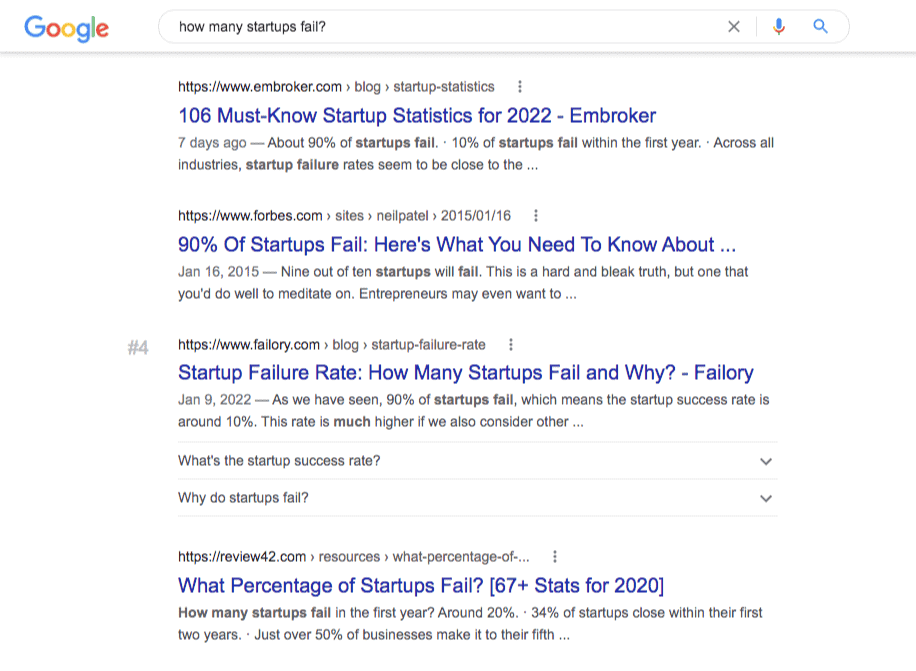
What would they see when they search for it?
A lot of statistics posts. That's where the demand to satisfy a search user's intent, plus link opportunities from content creators who might link to it from their articles.
Now, wear a beginner's hat.
Brainstorm questions people might ask when they want to know more about a thing in your industry or are venturing into a job or career.
After topical research, the next step is:
Curate.
Find information from available public data sites you can source out. The most popular ones are Statista and Data.gov.
Compile them.
And include the essential part of statistics posts:
Key insights.
This part makes your content unique, given that it's based on statistics you've gathered and its relevance to your readers.
Put "key insights" at the top section of your statistics post.
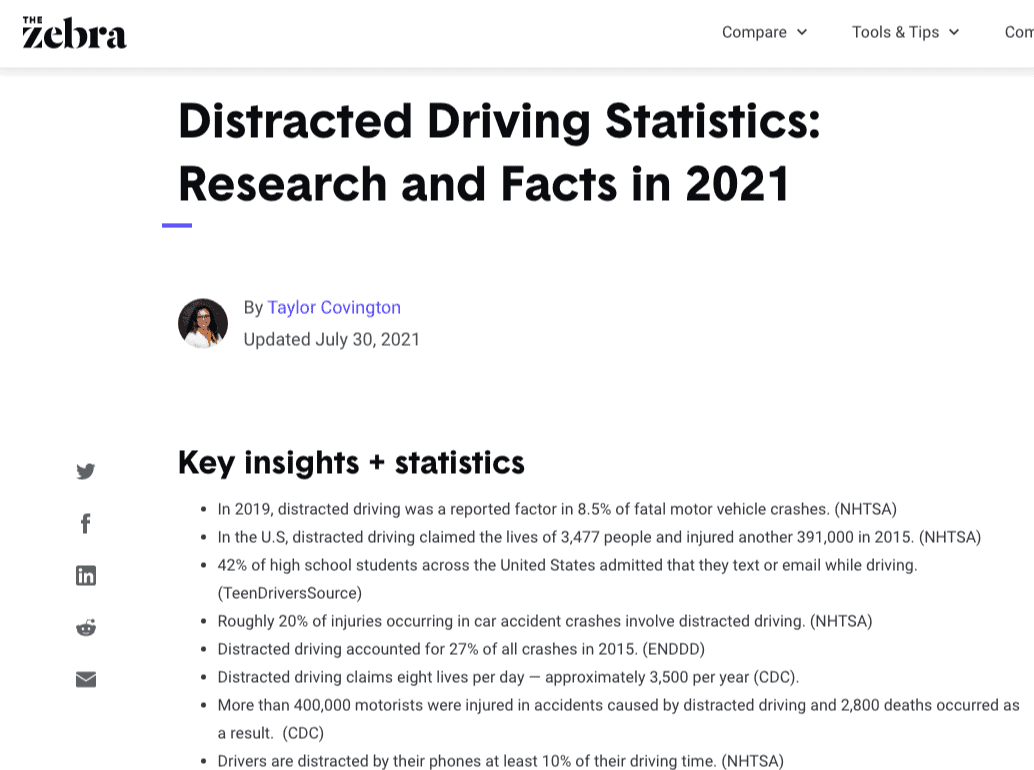
Best Examples of Statistics Posts
Here are some examples of statistics posts to inspire you to start your own:
- Distracted Driving Statistics: Research and Facts in 2021
- 60 Key Sales Statistics That'll Help You Sell Smarter in 2021
- Global Ecommerce Explained: Stats and Trends to Watch in 2021
- 2021 Marketing Statistics, Trends, and Data for the Events Industry
- Cycling UK's Cycling Statistics
- NFT statistics 2021
- Shoplifting Statistics
- Small Business Statistics: 19 Essential Numbers to Know (2023)
Like any other content, you'll have to promote your statistics page. Start by identifying target people who will amplify your linkable asset. These are publishers and bloggers looking for references to add to their blog posts.
Start a blogger outreach strategy by finding their email addresses.
Reach out to them and share your content.
As your statistics pick up new links, you'll start seeing its ranking go up. You’ll experience your content attracting new inbound links when it increases visibility.
Use Citable Content Formats
Link attraction is an old-school strategy of getting high-quality backlinks without continuous manual outreach efforts.
Instead of you reaching out to people, content creators voluntarily link to your content, as they find it comprehensive and informative for their readers.
Link attraction involves publishing citable content formats.
Without content, it's almost impossible for publishers to link to you. After all, to which page would they be linking?
Unlike the popular skyscraper technique, citable content formats don't have to be long-form.
This content strategy focuses on micro pieces that easily rank for quick answers.
Some search queries aren't supposedly answered with long-form content. Instead, you’ll find several micro-content pieces that are sufficient to answer quick questions.
FAQs are the most common citable content format.
When people ask direct questions, they want quick answers. So now, when your page appears in the featured snippet, you're likely one of the contents other publishers would link from their articles.
One good example of this strategy well played out is adding FAQs at the end of an article or landing page.
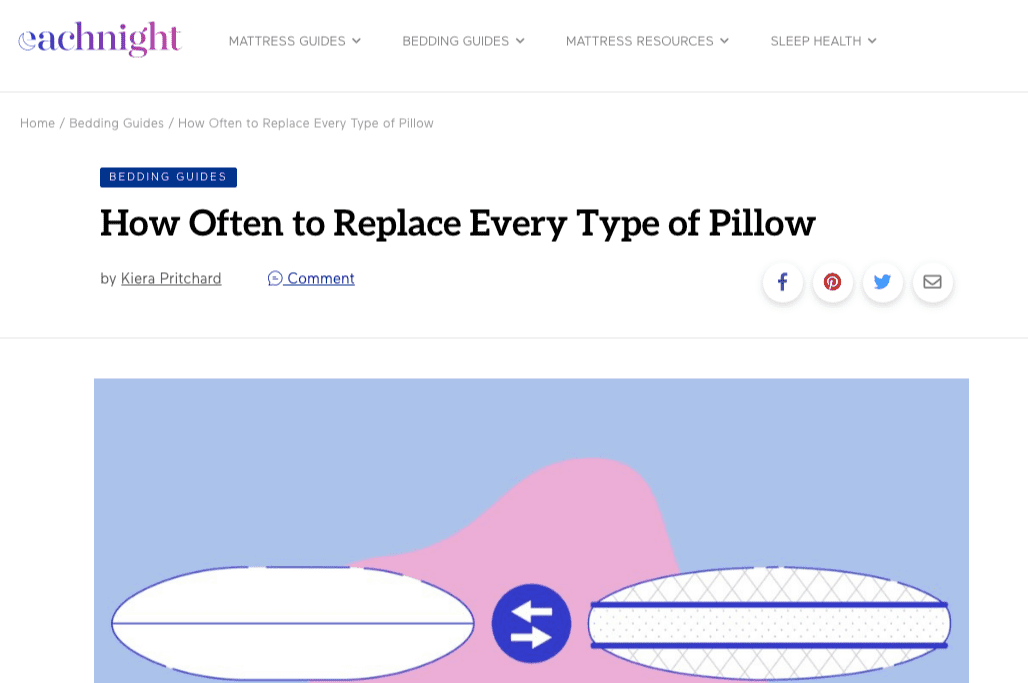
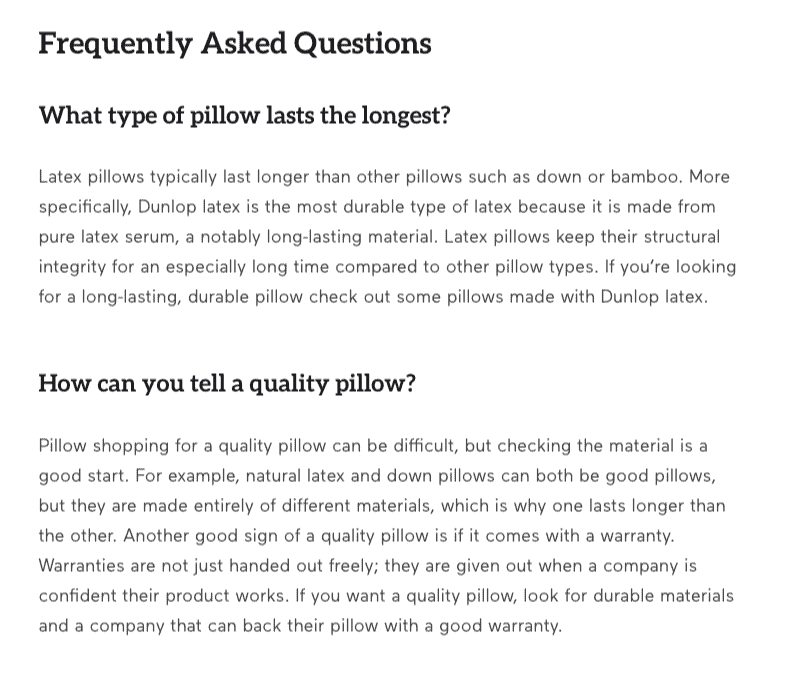 The benefit of doing so is it helps your page to rank for quick questions.
The benefit of doing so is it helps your page to rank for quick questions.
Another citable content format to consider is finishing articles with a glossary.
If you're in an industry where almost every blog post has technical jargon and might need some explanation for readers to consume your content well.
A glossary is a good addition towards the end of your article.
Getting more relevant keywords on a page is easy as it expands its word count (if necessary).
Want to discover more citable elements?
Aside from FAQs and Glossary, there are other citable elements you may want to consider.
PDFs.
When people want to consume and use information conveniently, they download pdf. So try to think (or research) for subjects needing an additional PDF format.
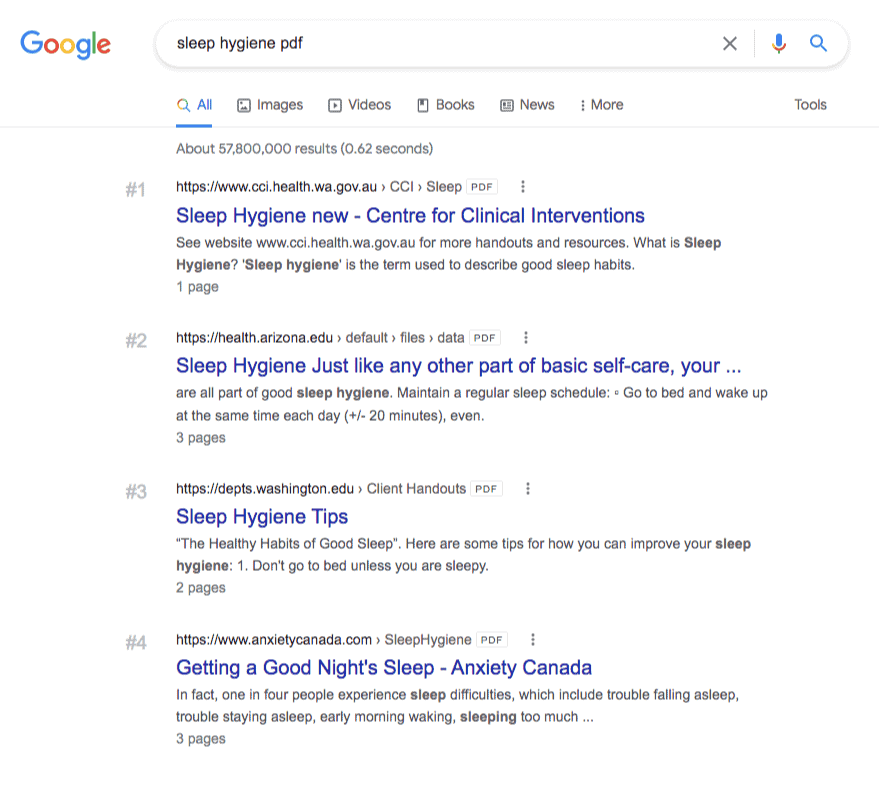
Questionnaire
With PDF content formats, there are questionnaires. This content format benefits educator when creating their quizzes (for school classes) or giving them to participants during workshops.
It is a great way to steal some ranking spots while gaining new links from publishers who include them in their articles.
Here are more citable content formats to consider for your next content.
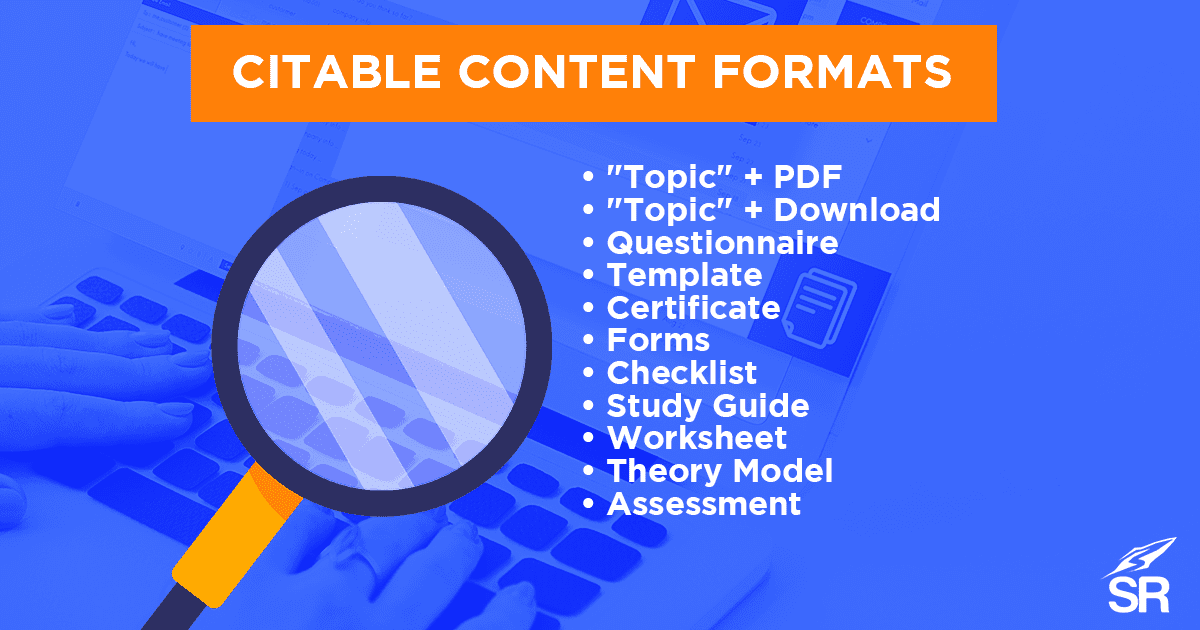
Content Partnerships
Relationships are the backbone of link building.
It is much easier to scale backlinks if the person you contact knows you.
Much simpler if they find and see value in your content or brand.
Content partnerships work this way.
You use web assets as leverage to get the attention of potential linkers.
If you're familiar with link exchange, you'll find this content partnership to be of a similar strategy.
Link exchange is directly linking between two relevant websites—one links to a relevant article of another website, and vice versa.
In content partnerships, you use other websites (two or more) when linking to your potential linker.
In other words, a content partnership is a link exchange at scale.
Instead of your website linking to your potential linker, you use your other content sites to link to them.
Why this link building strategy works so well?
First, you leverage the power of your authority site.
Websites with high traffic are not attracted to smaller blogs. They look for new dofollow backlinks from a site with similar or higher authority.
So if you use the power of your authority site to get a link for your smaller niche site, you'll have chances to earn links in email outreach.
The second reason why content partnerships work in 2024 is:
Some bloggers are not a fan of reciprocal link exchange.
They don't see it as a viable strategy, as they see it as harmful to their site's traffic. While that’s not true, especially if you execute it properly — only reaching out to relevant blogs (and not from random websites).
A better strategy than direct link exchange is content partnerships.
Here is a good email outreach template that you can use:
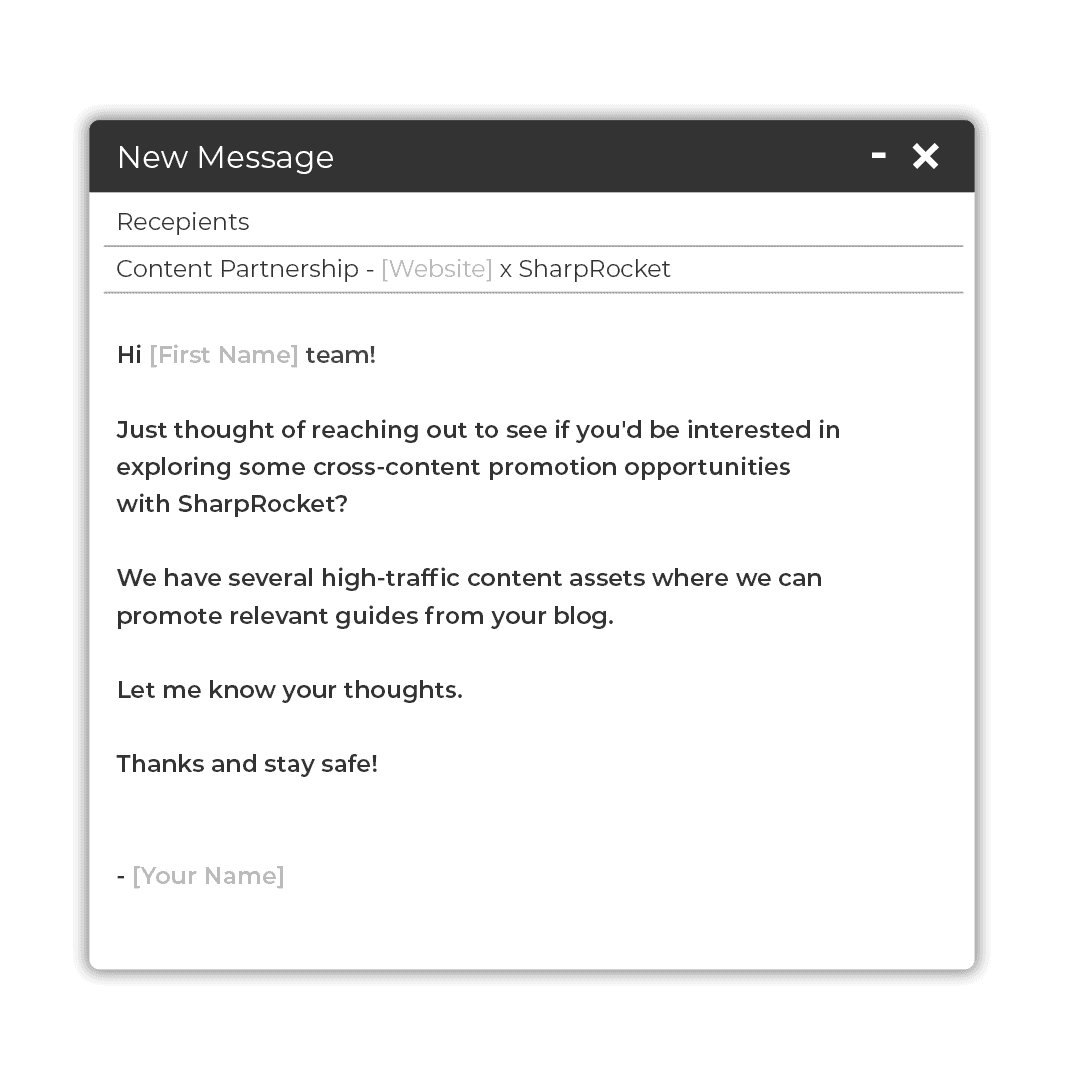
Targeted Guest Blogging
Guest blogging is still an effective link building strategy in 2025.
Reason?
Guest posts can bring targeted traffic to your website.
Plus, contextual links from guest posts boost the ranking power of pages being linked to.
While there are guest blogging campaigns that flopped in results, a few successful guest posting campaigns sustain their success.
Two factors make these guest blogging campaigns successful:
Precision and intention.
When guest blogging has precision, it only finds the right targeted audience.
Audience who cares about what you have to say. Audience who are likely to bring in new traffic to your brand.
And when you reach out to these people with the right intention (second factor), they'll respond to your email pitch because it shows that you care for readers.
Let's go with some practical tips.
Use audience research as one of your main strategies to find guest blogging opportunities.
Instead of utilizing search modifiers such as "write for us" or "guest post" plus industry keywords, you begin with discovering and learning about your audience groups.
Sparktoro does help in this process.
For example, if I'm searching for keto diet enthusiasts, I could simply enter the key phrase into the search bar.
The tool will provide all the information I need, including social accounts keto diet people follow most, and more importantly, for guest blogging purposes:
Websites they visit most.
I could use them as a list of target publications for guest blogging.
Or dig deeper a bit.
In Sparktoro, you'll see "Hidden Gems".
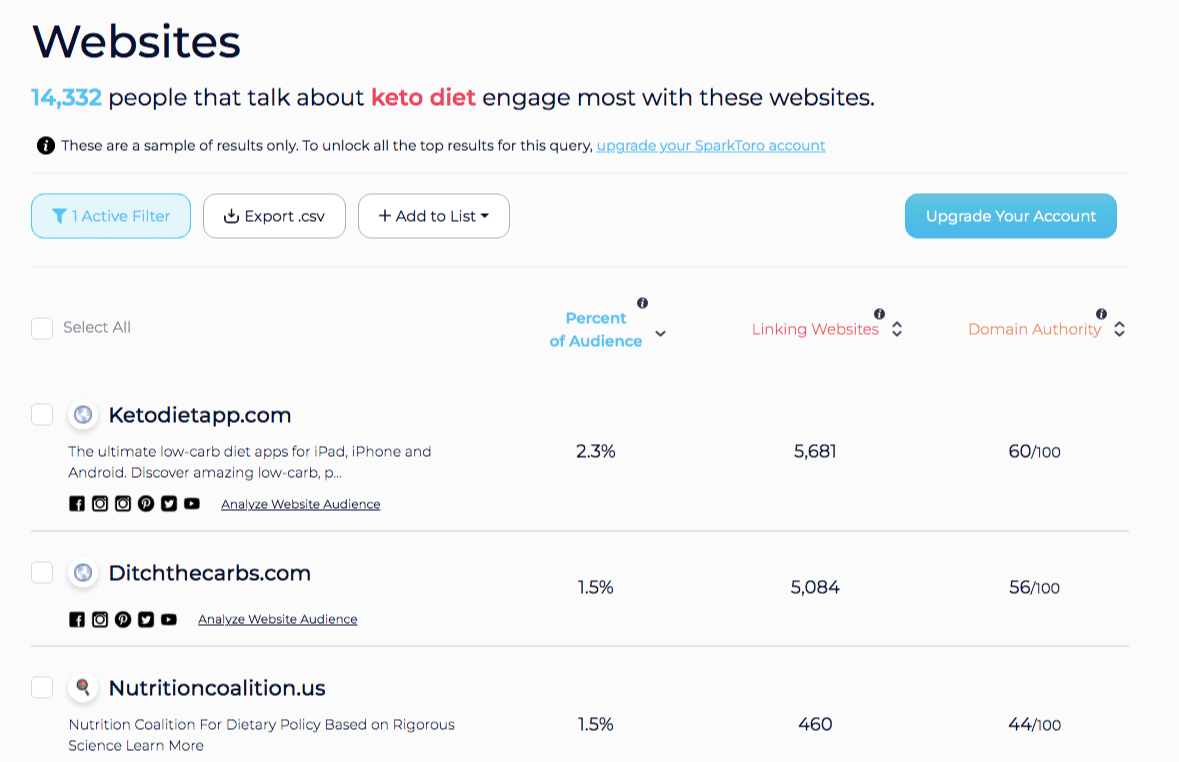
These websites have less overall traffic but high relative engagement among this audience.
Gold!
This is precisely guest blogging. These are publications you'd want to distribute content.
Another way to find guest post opportunities is through Ahrefs' Content Explorer.
Head to the search bar and type in a broad or niche keyword.
You can filter the results based on Domain Rating (DR).
Scroll down and click "Websites". This reveals the top 100 websites based on your input keywords.
Export the results and consider them part of your list of publications to pitch.
Besides Ahrefs' Content Explorer, you can't ignore its Link Explorer feature.
Through this feature, you can find competitors' backlinks — which may include publications they've placed content for distribution.
It is best to check websites that drive the most traffic to your competitors.
If you could get guest posts placed on these publications, it would help drive some more traffic to your blog.
Interested in starting a guest blogging campaign? Learn about our guest post service.
Publish Surveys
Survey content can pick up new links every week.
It works because journalists want to cover stories.
And if you give them exclusivity to interesting information, they won't hesitate to feature your surveys.
Now, how can you publish surveys?
You can use Google Consumer Surveys to collect answers to questions. You can filter participants by demographics (age, location, gender, etc..).
Make sure questions are tied to your brand's topics.
The key to successful linkable surveys is to make headlines attention-grabbing.
This is what provokes journalists and publishers.
https://www.thezebra.com/resources/home/dangers-of-sharing-passwords/
Once you publish the survey, create a media list that includes industry and local journalists who might want to cover your story.
This may require some digital PR, but you can pitch mid-tier bloggers and have them feature your surveys on their articles if you’re starting.
This way, you'll have social proof you can use for the next round of pitching, now for authoritative websites.
Broken Link Building
Broken link building, mostly known as BLB, recommends a link replacement for a webmaster with a broken link on their website.
This is most effective because it adds value by replacing defunct resources with new ones (including your content) that are more useful and helpful to website readers.
To this at scale, you can use Ahrefs' Content Explorer.
Type in keywords like "resources" or "links" along with your topic and use the search filter "Title".
Now, the tool provides you with relevant resource pages.
Reach out to them, tell them about errors, and provide appropriate link replacements.
Here is an email template you can use for broken link building:
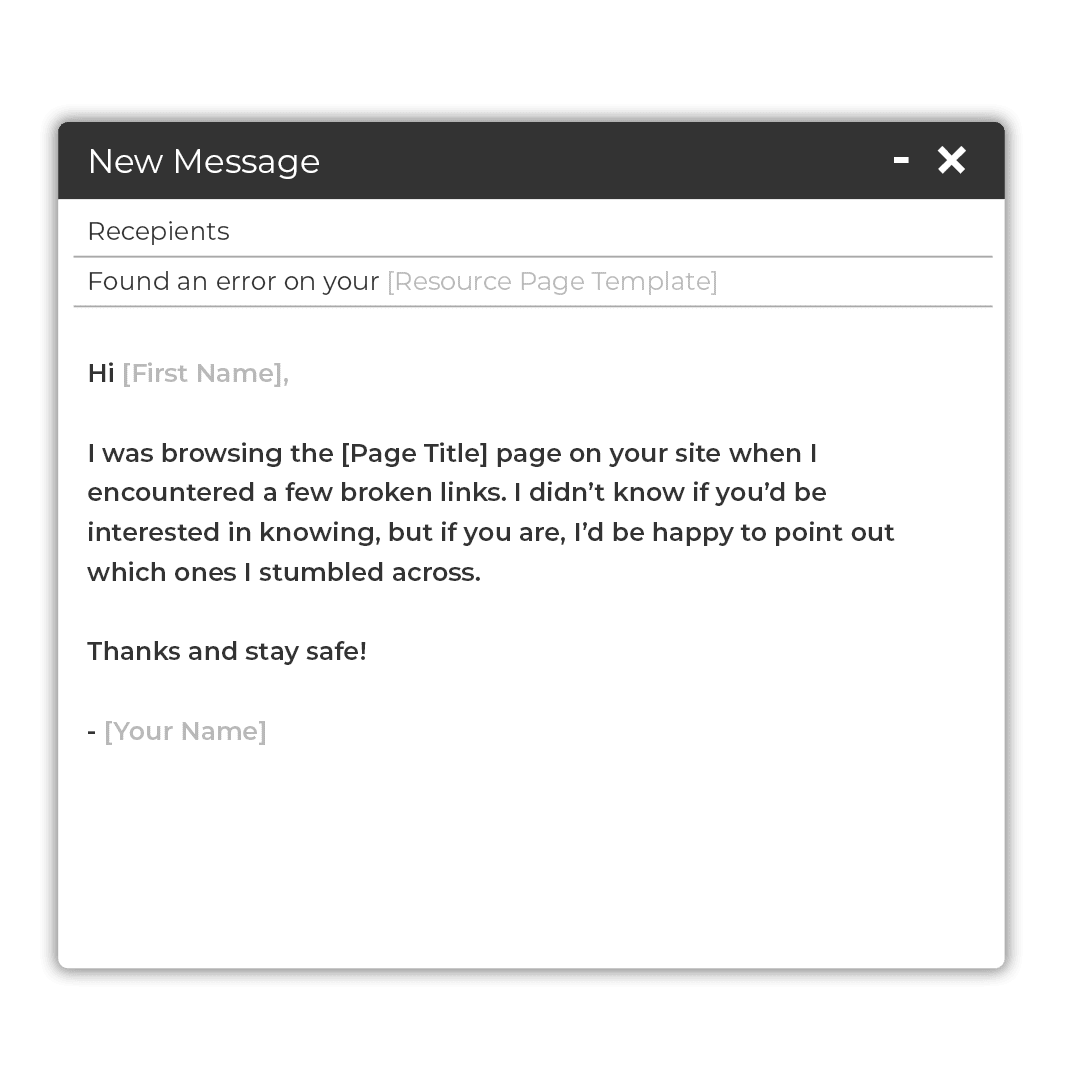 For step by step process, you can check out our entire broken link building guide.
For step by step process, you can check out our entire broken link building guide.
And an email template for resource page link building:
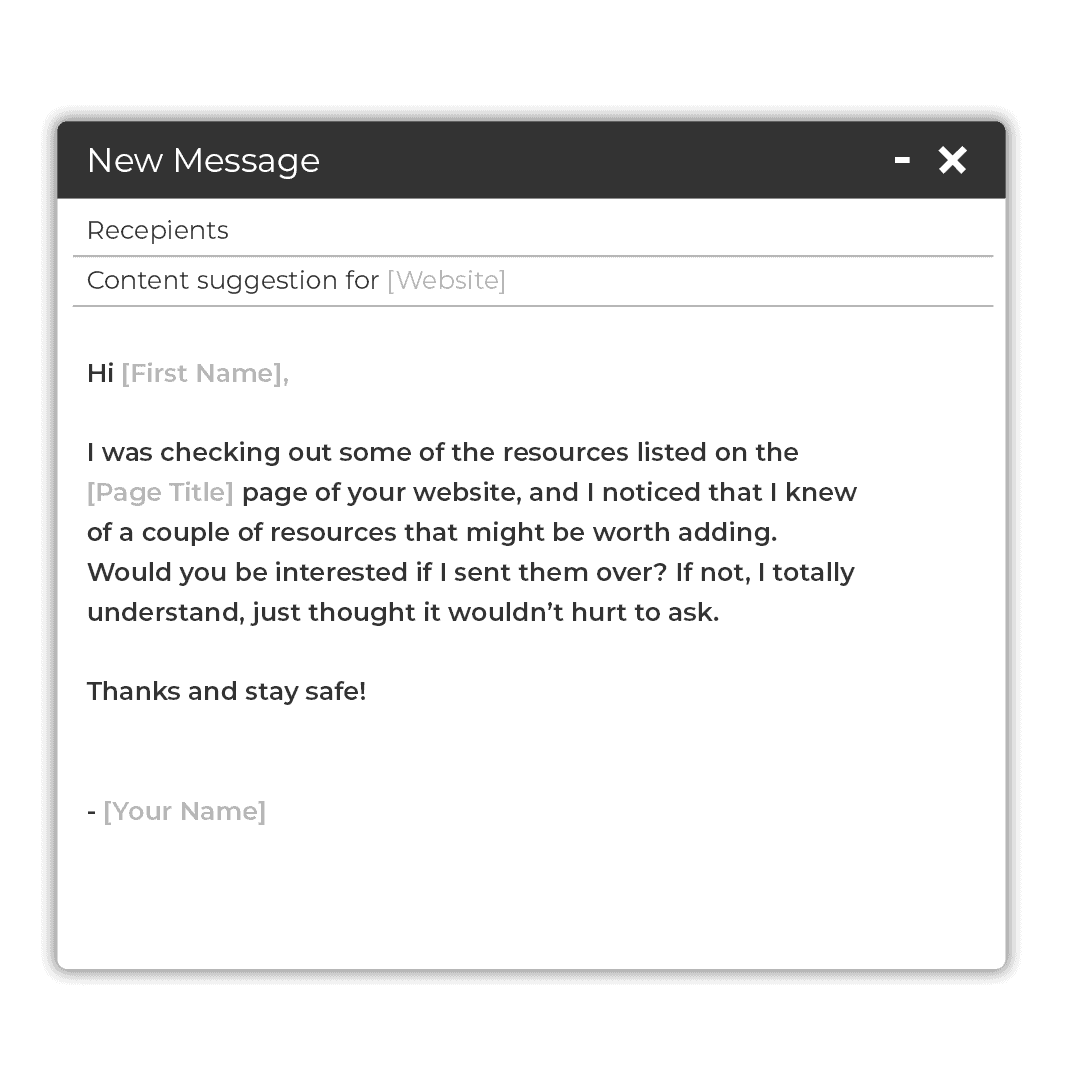
Link Reclamation
People mention products and services. And when they do, sometimes, they forget about linking to appropriate sources.
This is where link reclamation comes into play.
Link reclamation is reclaiming lost links or unlinked brand mentions of your site.
Generally, link reclamation has the highest link placement rate among link building strategies.
Reason?
They've known about your brand or even used your content.
Link reclamation is mostly used for large-scale enterprise brands mentioned on websites almost daily.
However, you can use it for smaller sites and, if done correctly, can help add more targeted links to your important pages.
There are two ways to do link reclamation:
First, identify lost inbound links to your site and reclaim them through outreach.
It may be so simple, but you have first to know the reason why the publisher in the first place removed it.
If they've found a more useful alternative resource to replace yours, reclaiming a link's not worth your time — unless you recently updated your content piece.
Second, find unlinked mentions of your products or content. If they've mentioned you, reclaiming these future links with a simple ask is easy. Familiarity takes place.
For two link reclamation methods, here are email templates you can use:
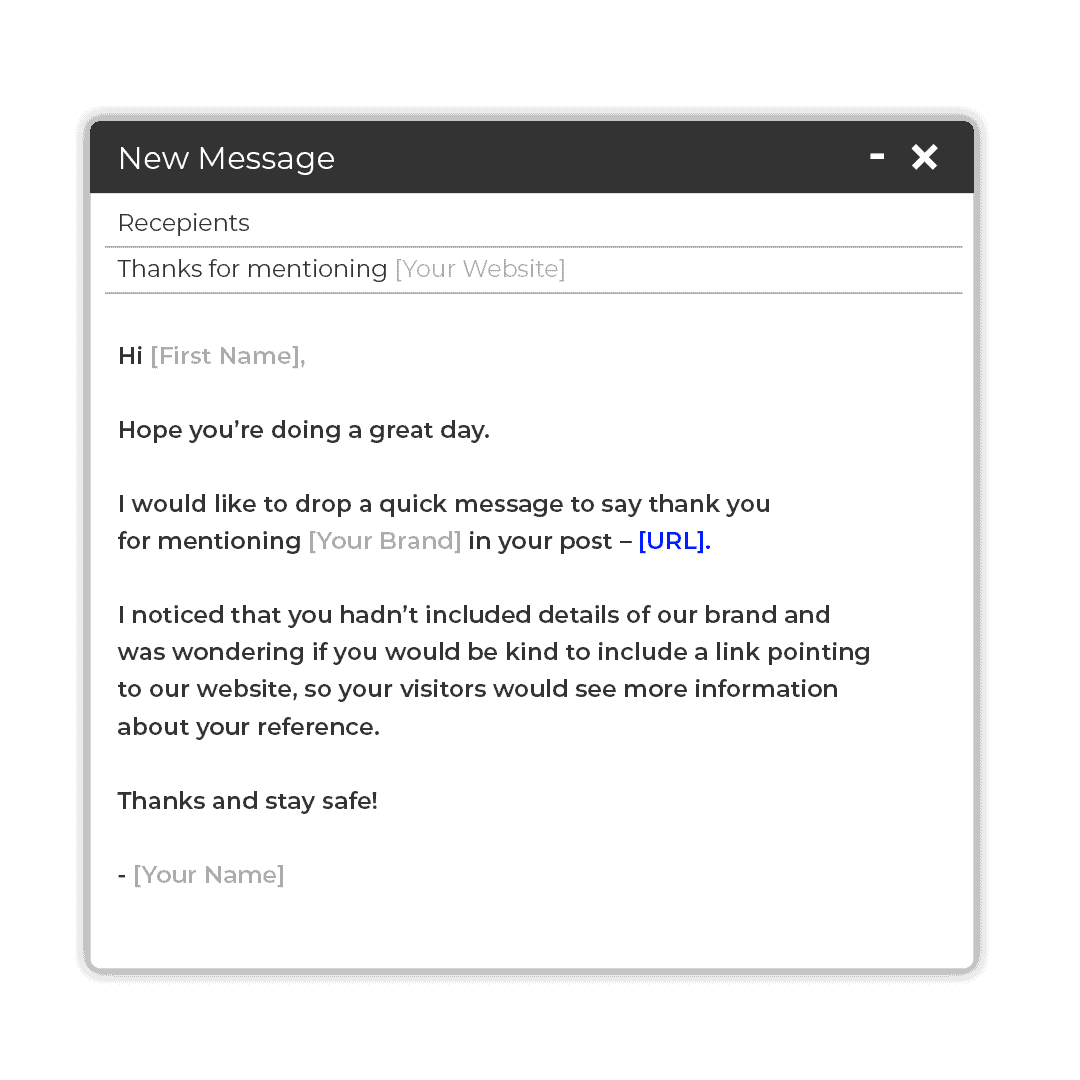
Infographics
Infographics are useful visual assets to increase brand awareness, get links, and improve rankings for the site's key terms.
Link building through infographics is still effective — if executed properly.
Forget about farm and infographic submission sites that add little value and traction to your content. Go and look for real targeted blogs to include your infographics.
The more careful your execution is, the better the links you'll get out of it.
Now, what makes infographics successful these days?
One effective strategy is to use infographics as complementary to your main informative content asset. This solidifies the entire content instead of a stand-alone full infographic page.
For example, you can add infographics to the data studies page to emphasize essential data points.
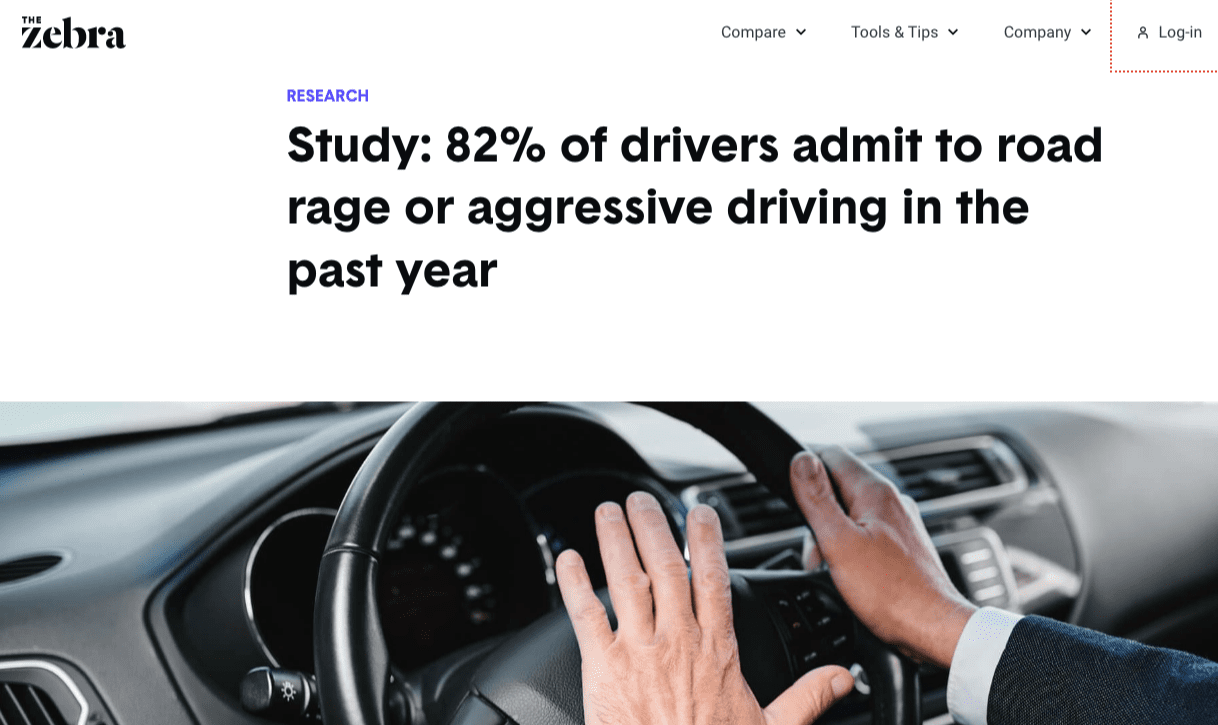
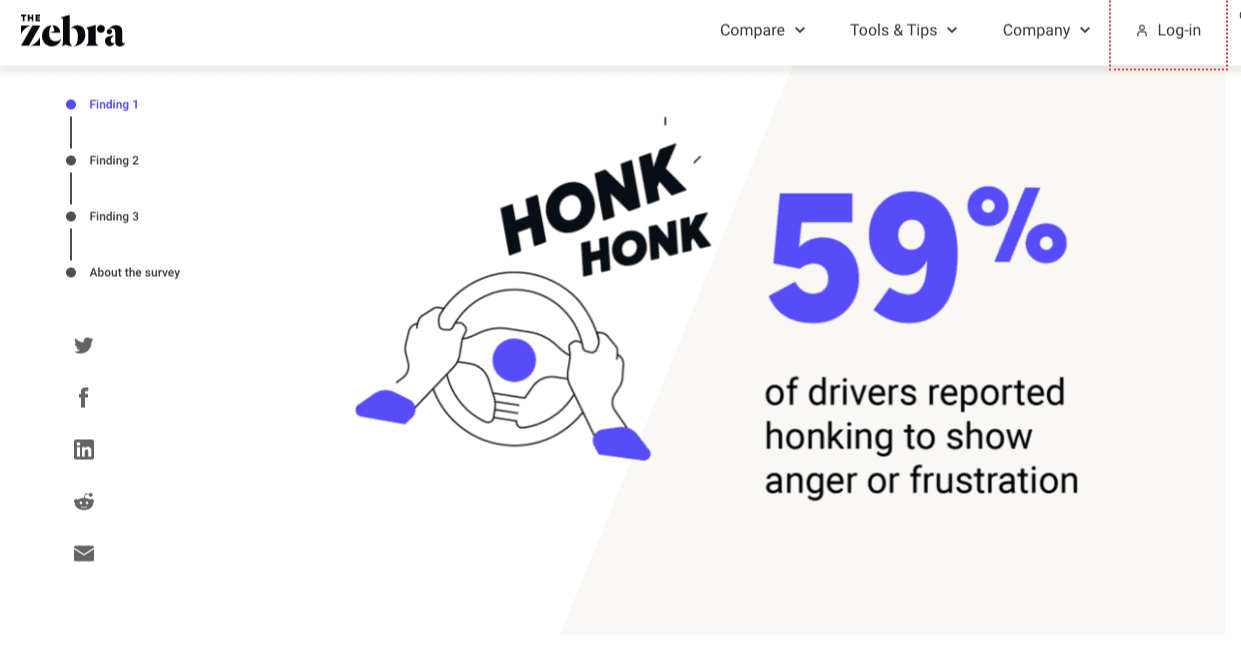
For content promotion, you reach out to bloggers and share the infographics with custom intros' contextually written for the blog.
Offer to write a custom intro of the infographic. Even helping them insert embed code into their blog posts makes it easier for them to publish your visual asset.
It is best to give bloggers a sneak peek of the infographic by including the actual image of some of its sections. The email becomes more appealing and adds differentiation to your email pitch.
Here is an email template you can use for guestographics:
Replicate and Test Strategies That Work For Other Industries
Here is one way to discover new link building strategies:
Do not reinvent the wheel.
Look at other industries and marketers and see what they have done well.
By simply understanding how other websites solve problems, you'll find inspiration and original ideas for your content marketing and link building campaigns.
For example, if you want to test new link building strategies for a personal injury website, check other cities.
Grab their domains and discover how they recently acquired links.
Use Ahrefs to check the site's top linking pages.
Or make deductions as to the types of new backlinks they acquire:
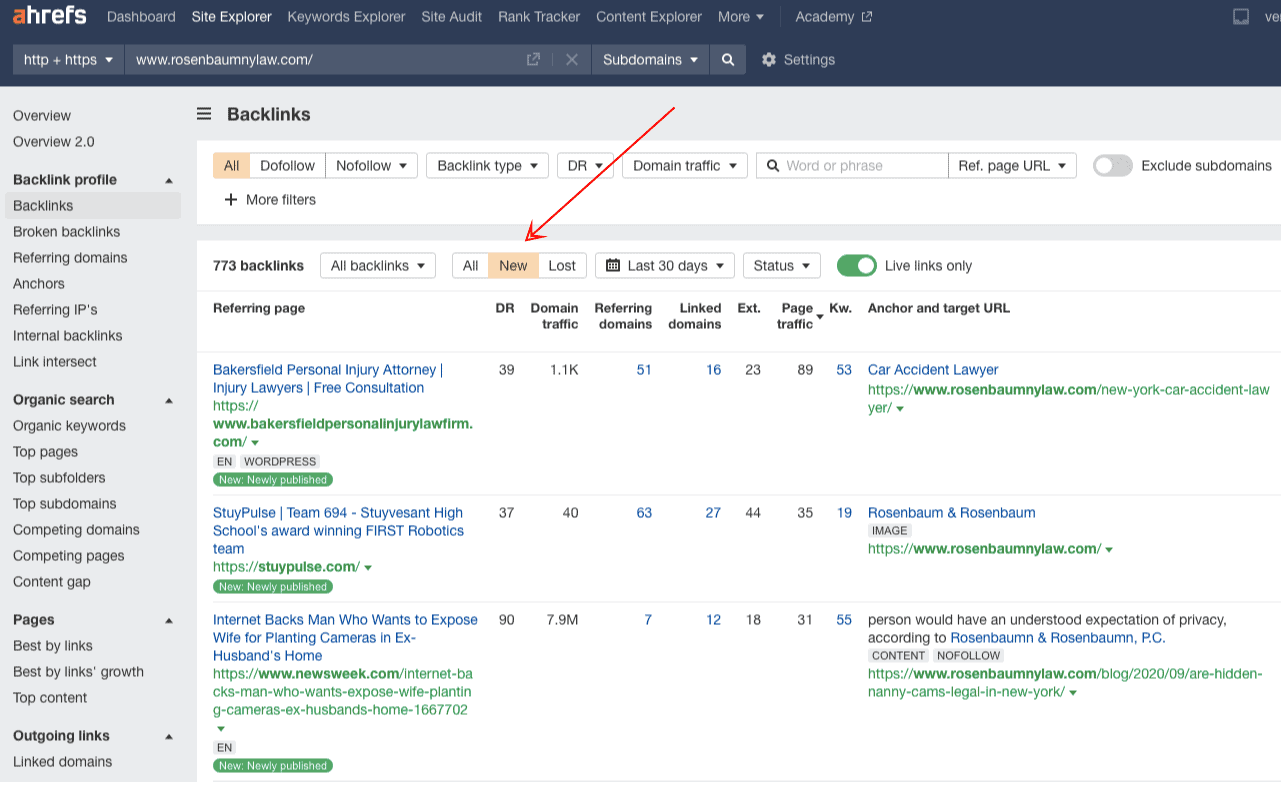
Another example is when you're trying to build links to money pages.
You can go to competitive financial markets and analyze how they get money page backlinks.
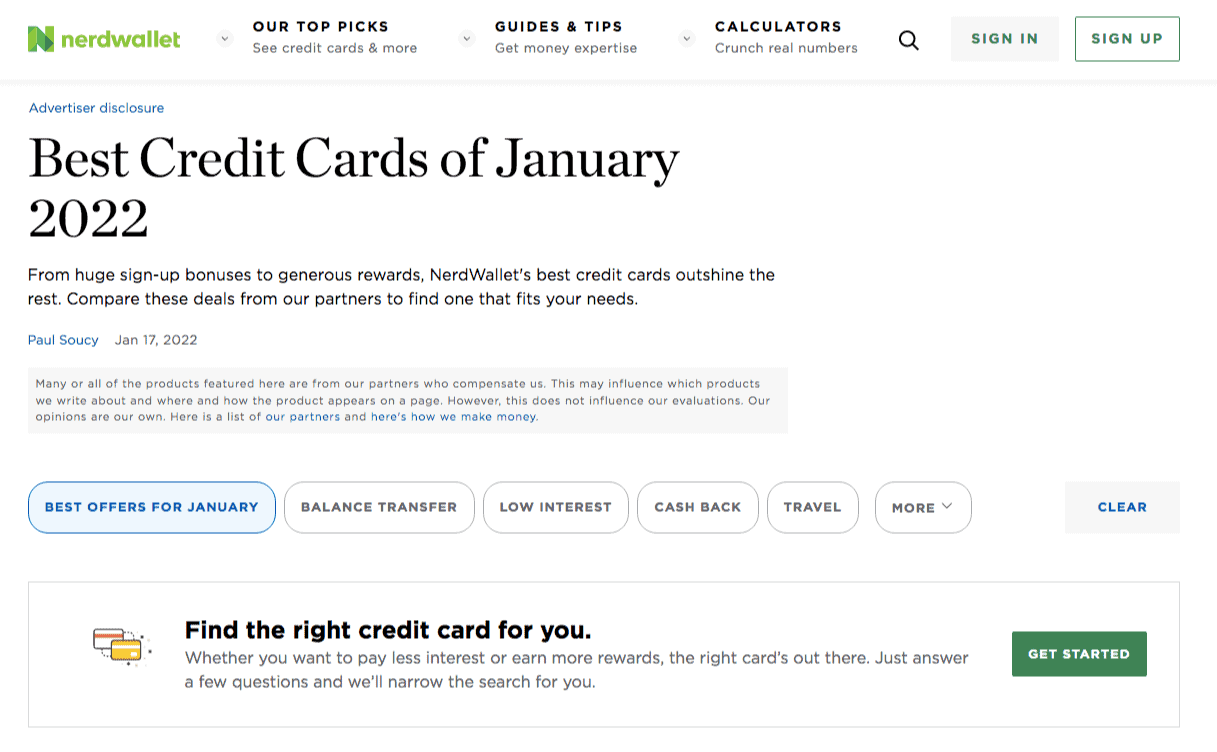
You serve users when you replicate the best strategies that work for other markets and test them for your site.
And helps you build links your competitors can't easily copy.
Go and try.
Improve Your Link Building Strategy
There is no one size fits all strategy.
The only way to know if it works for your brand is to test it yourself.
Make a case study of the best link building strategies that are effective for your website.
If it works well, improve it more.
That's how you become better at link building in 2025.
Link Building Strategies Frequently Asked Questions
What are the three types of link building?
The three types of link building are deep linking, contextual linking, and internal linking. Deep linking refers to linking directly to a specific page within another website. Contextual linking refers to linking directly to content within another website. Internal linking refers to linking directly to content within your own website.
What are linking strategies?
Linking strategies are essential plans for organizing, tracking, and optimizing your website's links. Implementing the right plan can result in significant business benefits, such as increased sales and improved search engine rankings. By developing a well-thought-out linking strategy, you can effectively enhance your online presence and drive more traffic to your website.
What are the key elements of a successful link building strategy?
A successful link building strategy involves prioritizing quality over quantity, building links naturally, focusing on anchor text, searching for related domains, giving preference to backlinks within text, and combining both dofollow and nofollow links. Avoid relying solely on dofollow links.
What is the difference between link building strategies and tactics?
The distinction between link building strategies and tactics is significant. A strategy refers to the overall plan, while a tactic represents the means to achieve an objective. To succeed in link building, focus on creating something "link-worthy." While this may sound cliché, it remains true as an effective approach. Building links requires a thoughtful strategy and using tactics that promote the creation of content deemed valuable by others.
